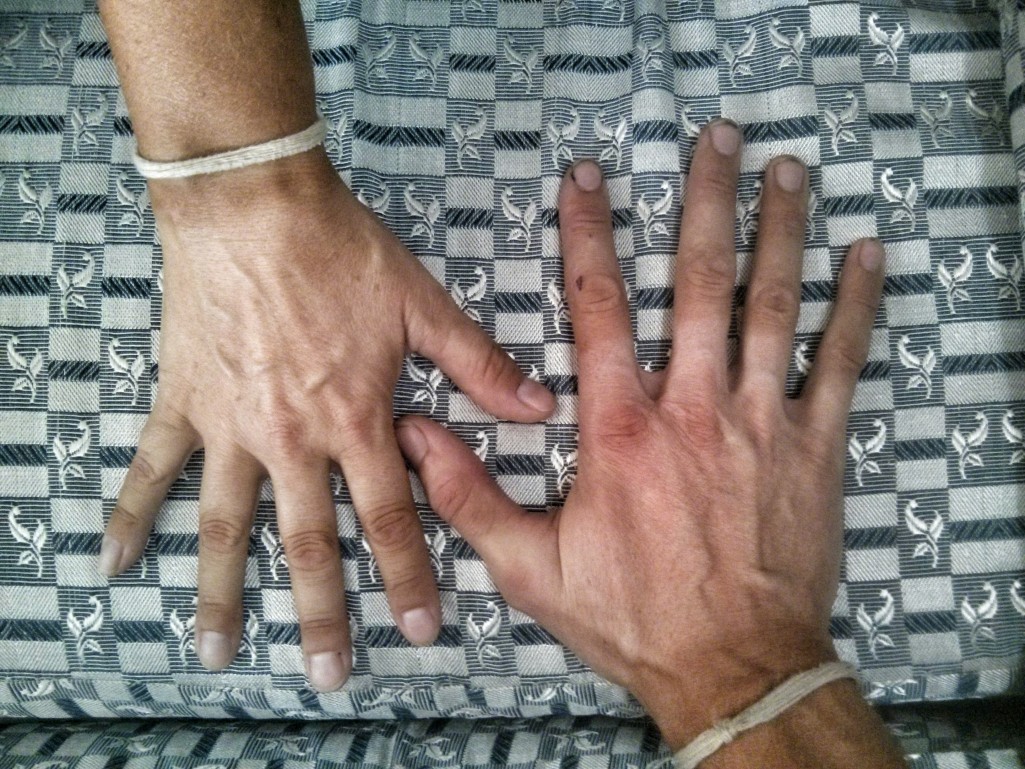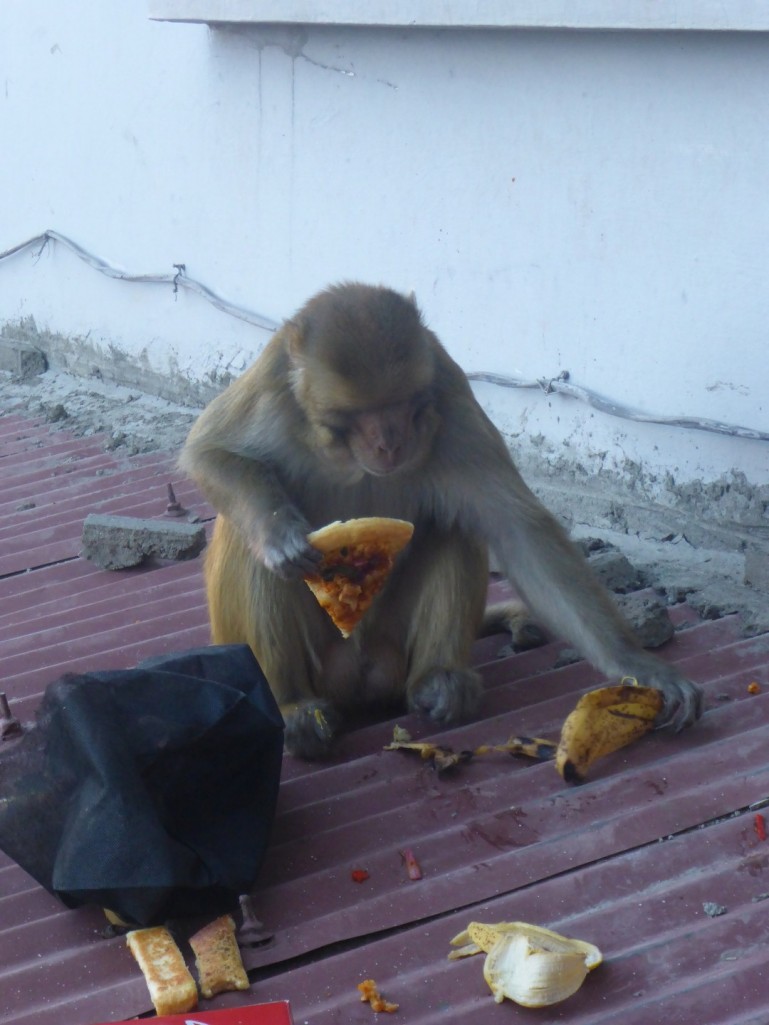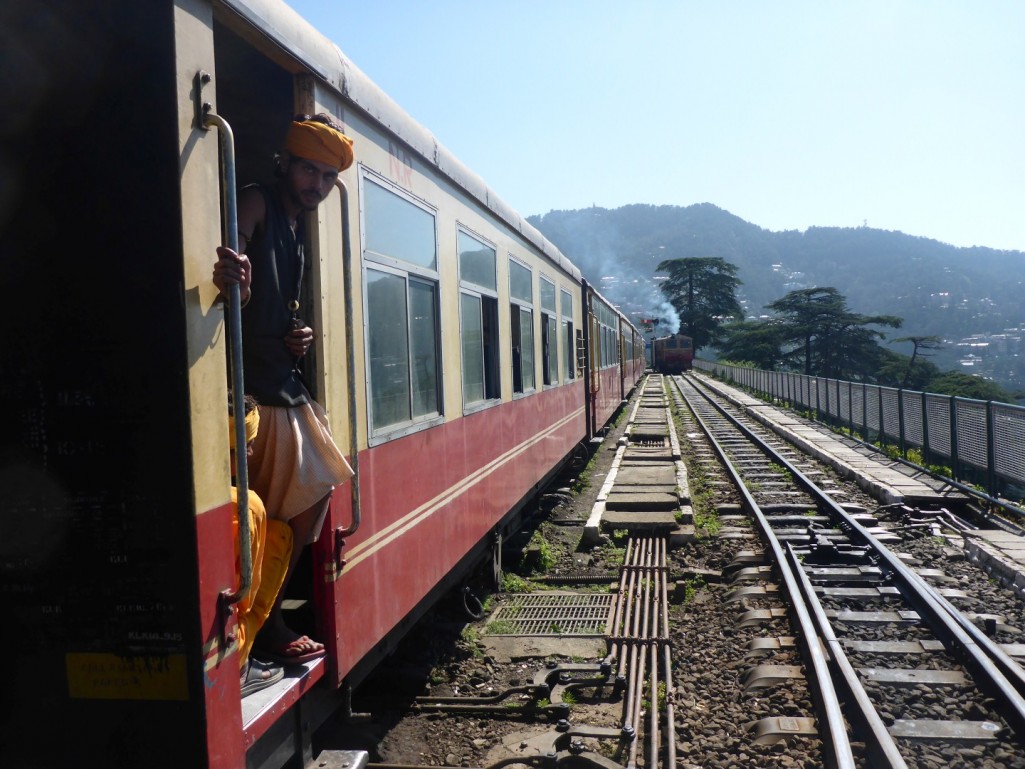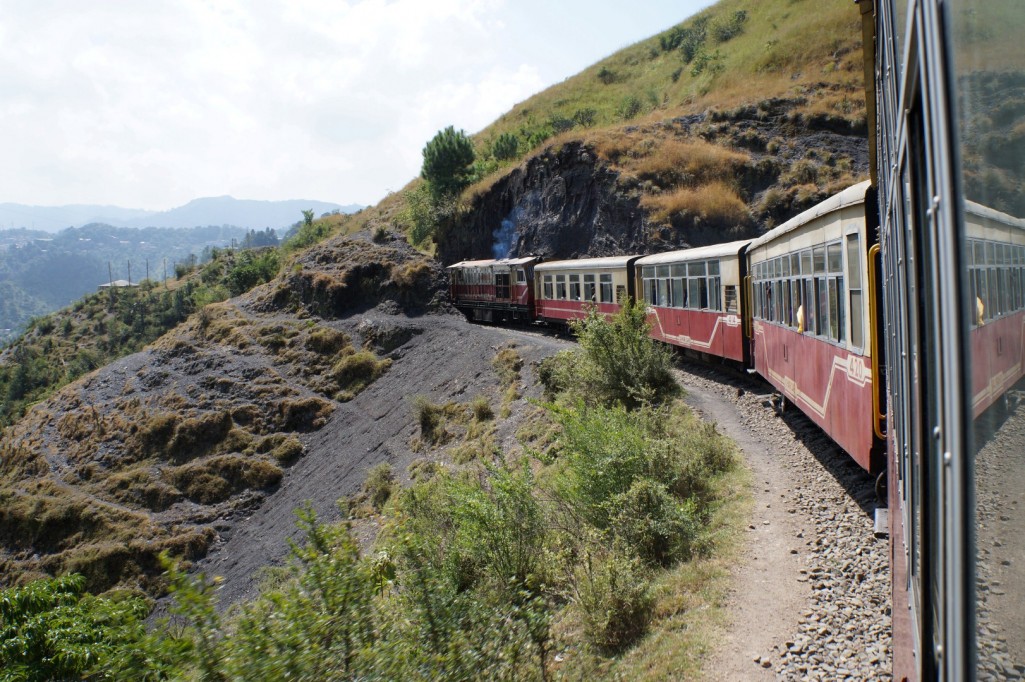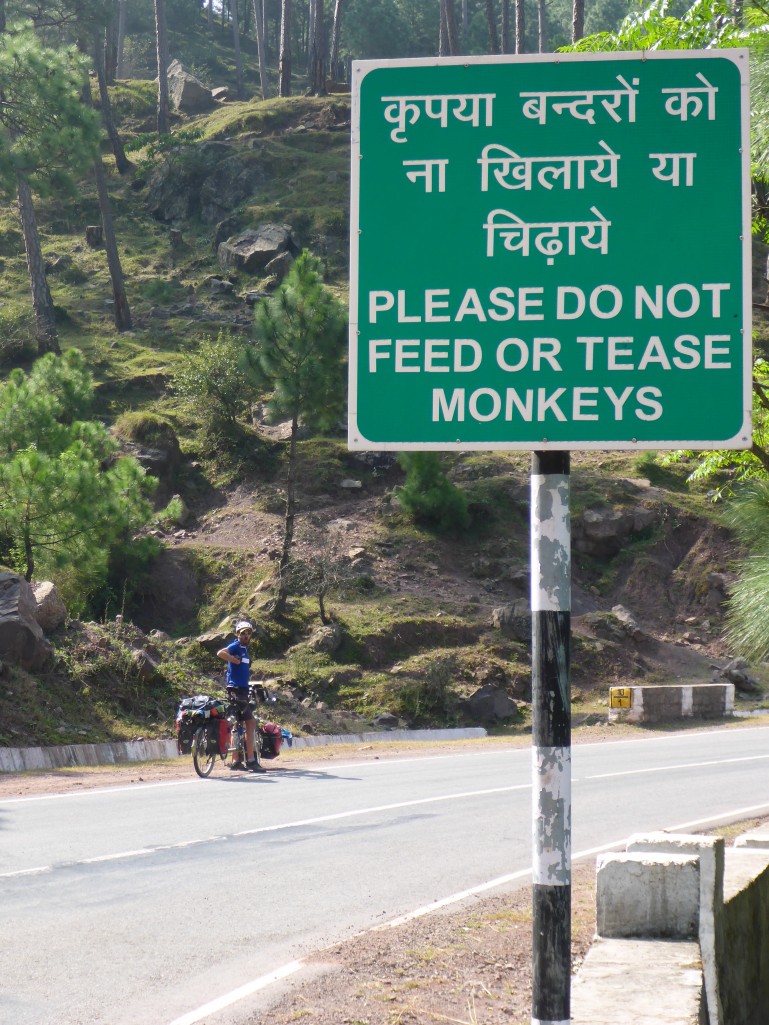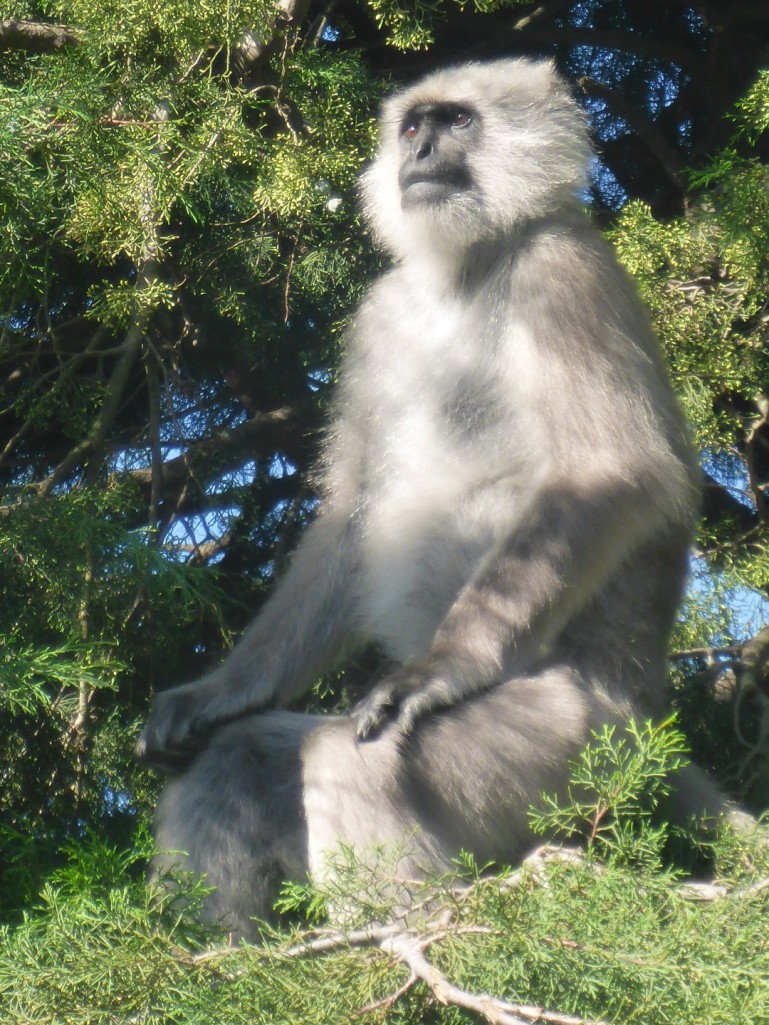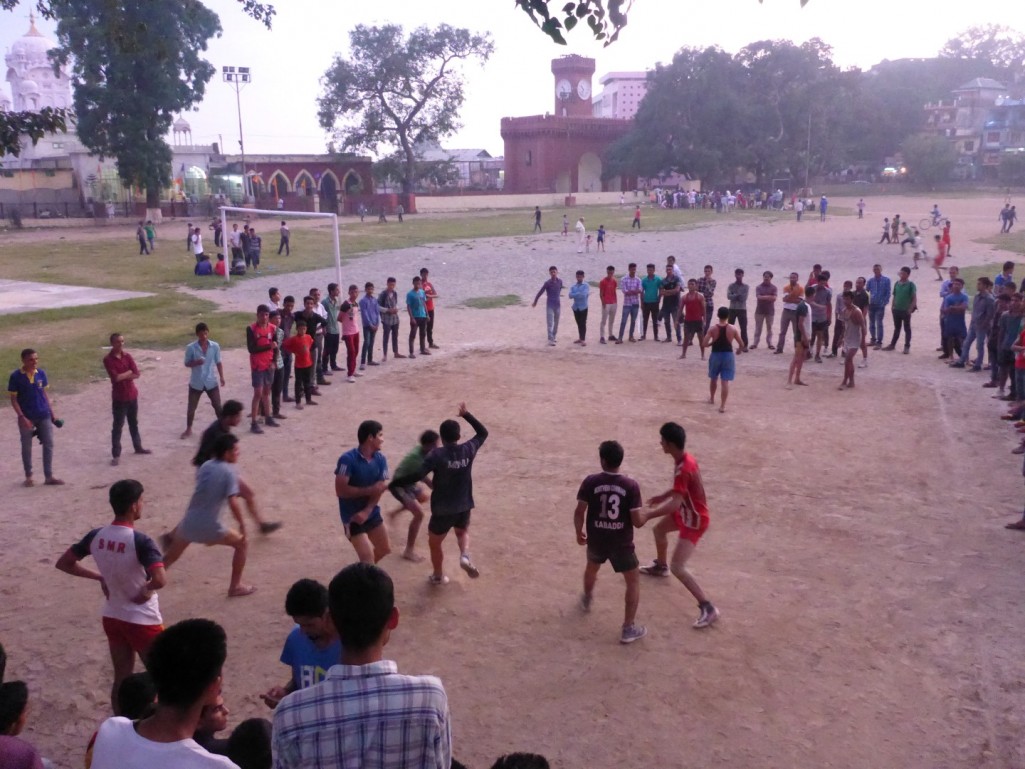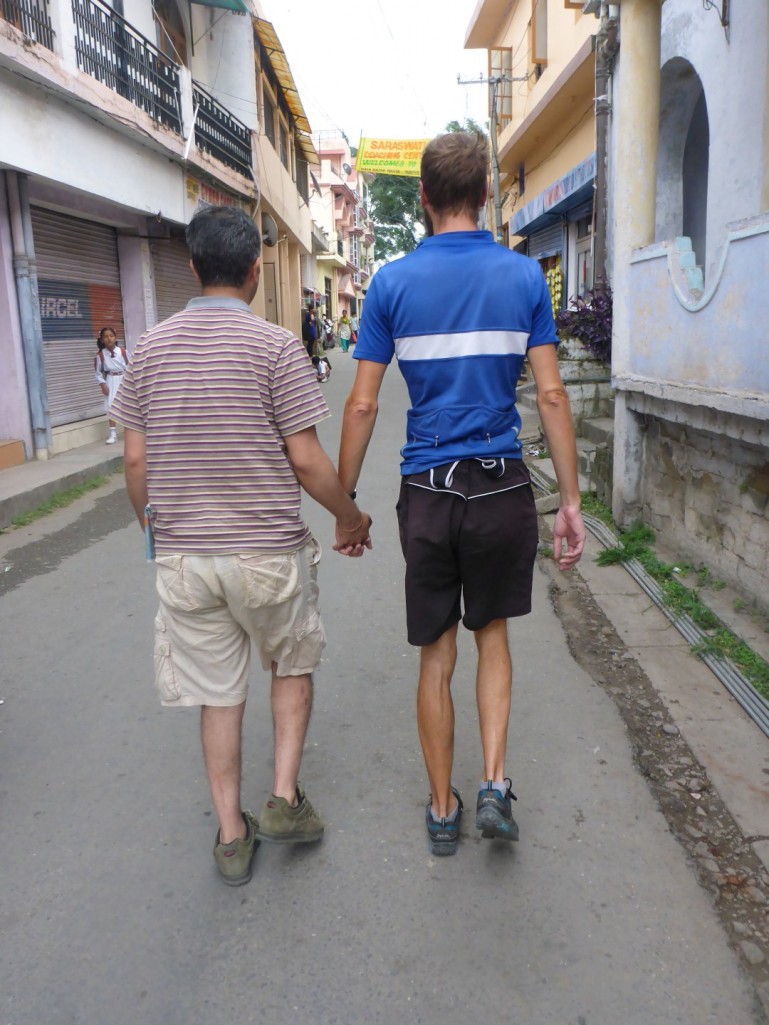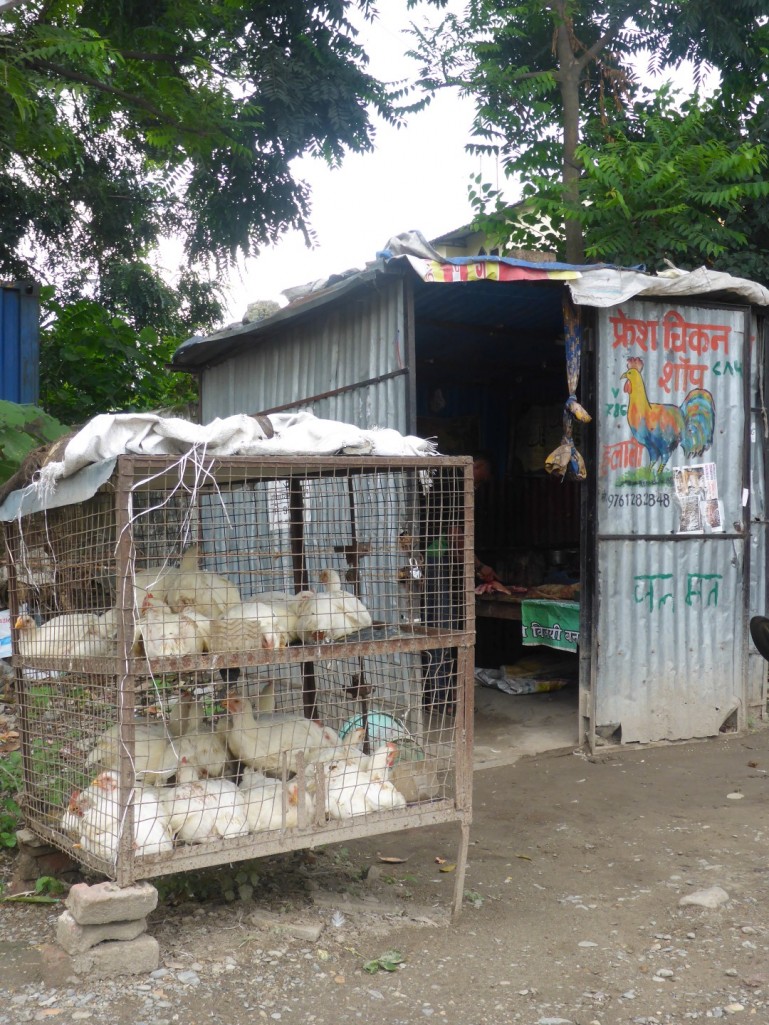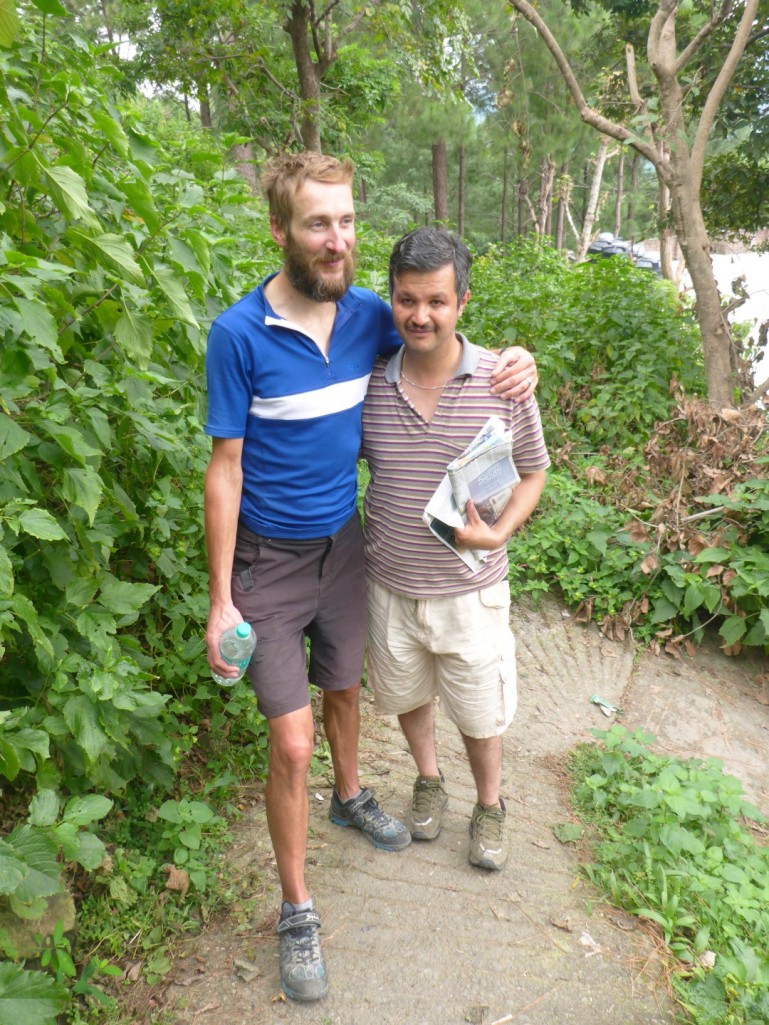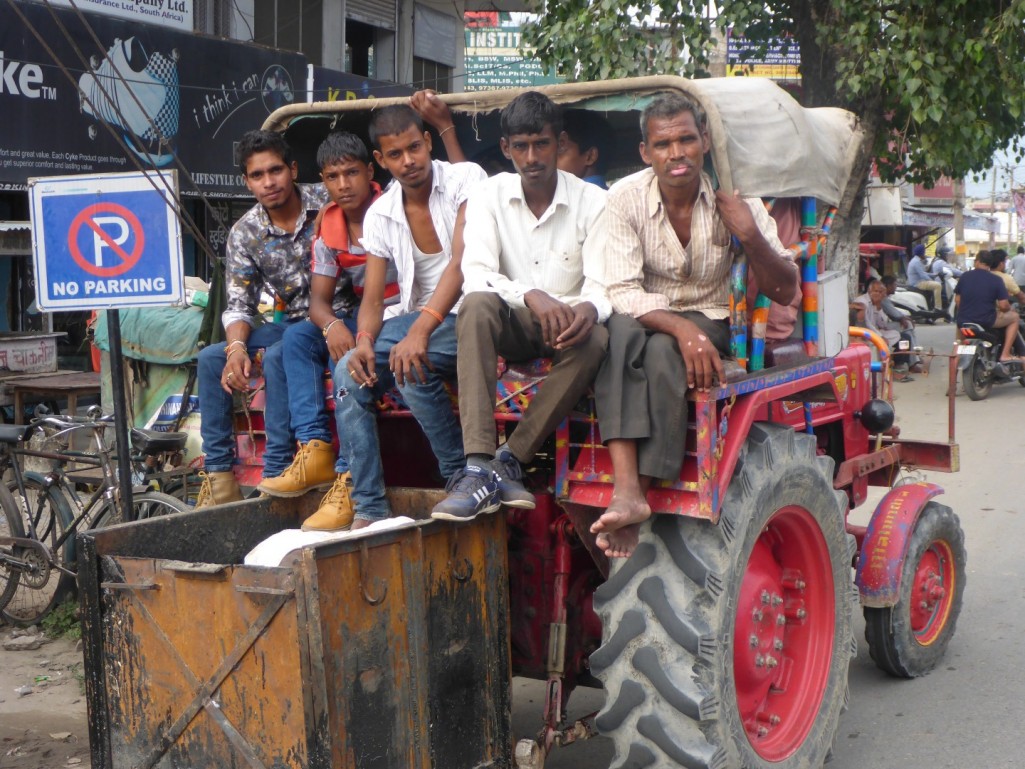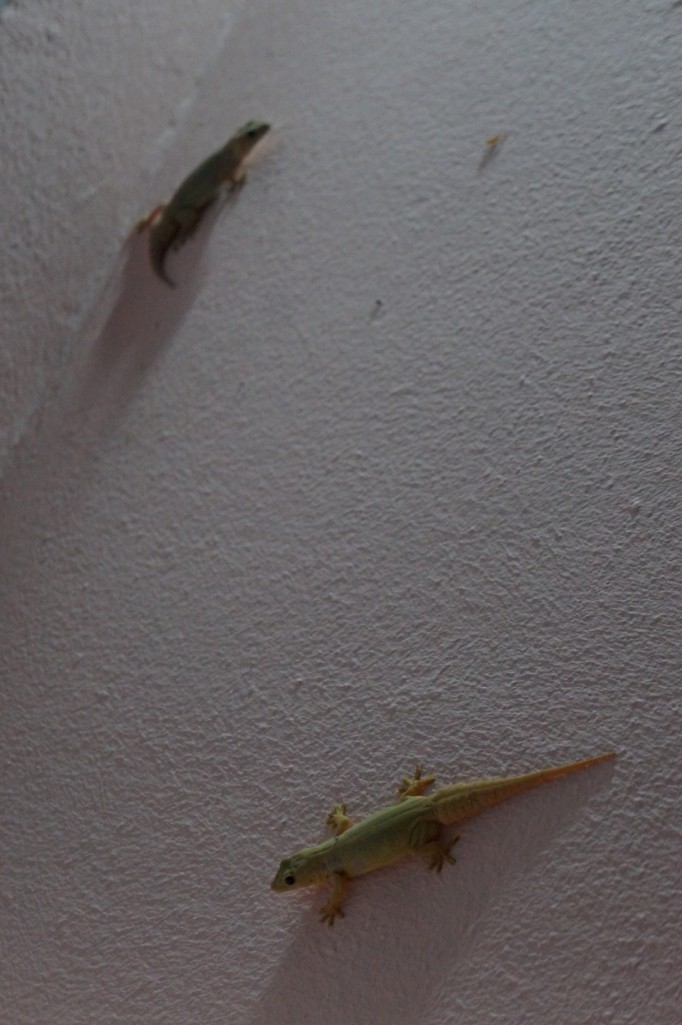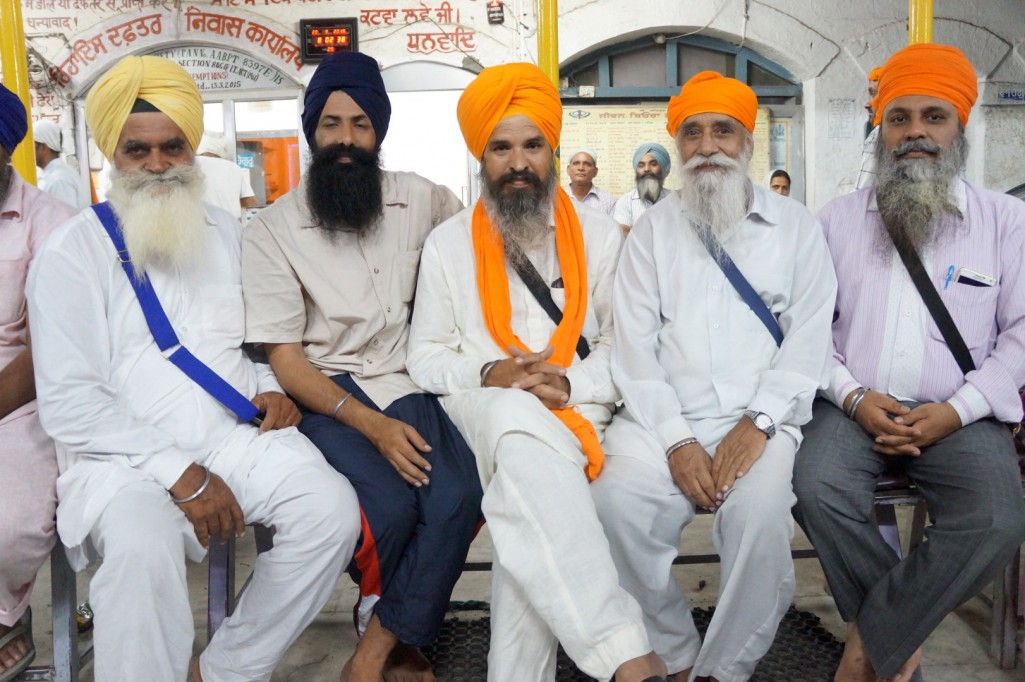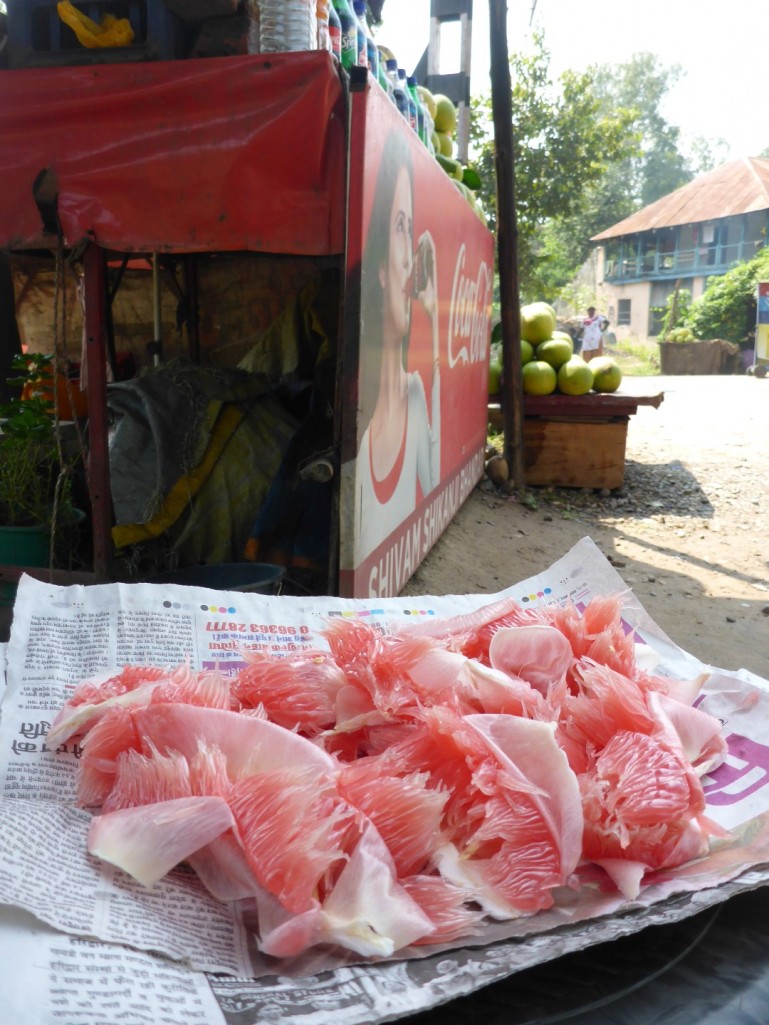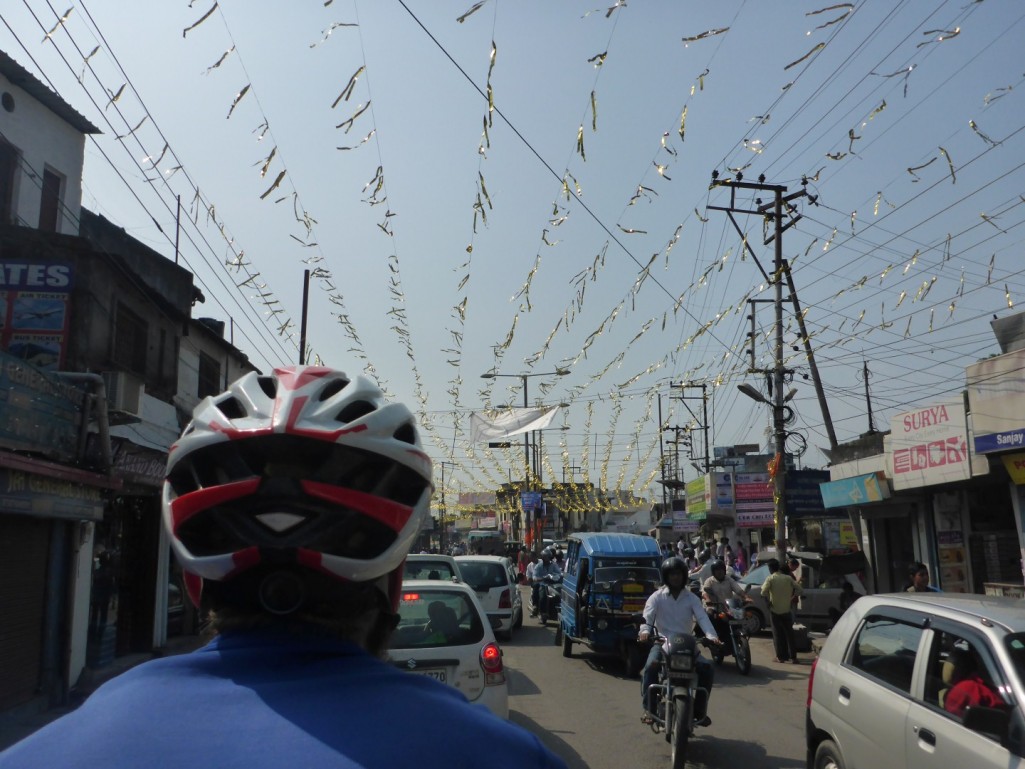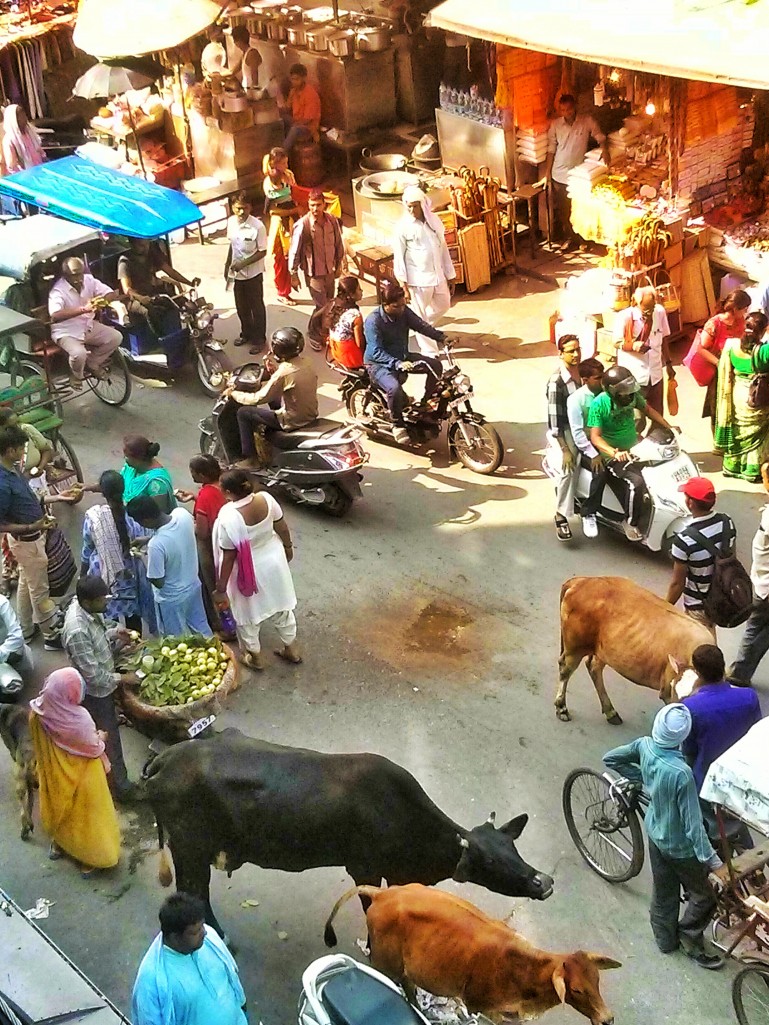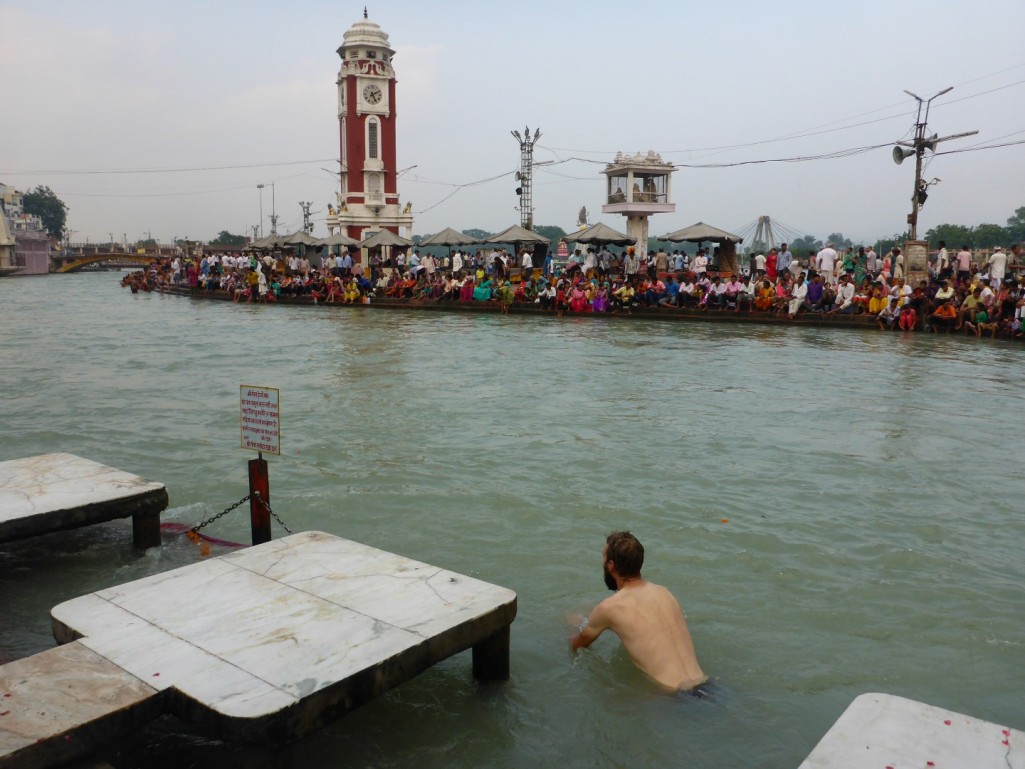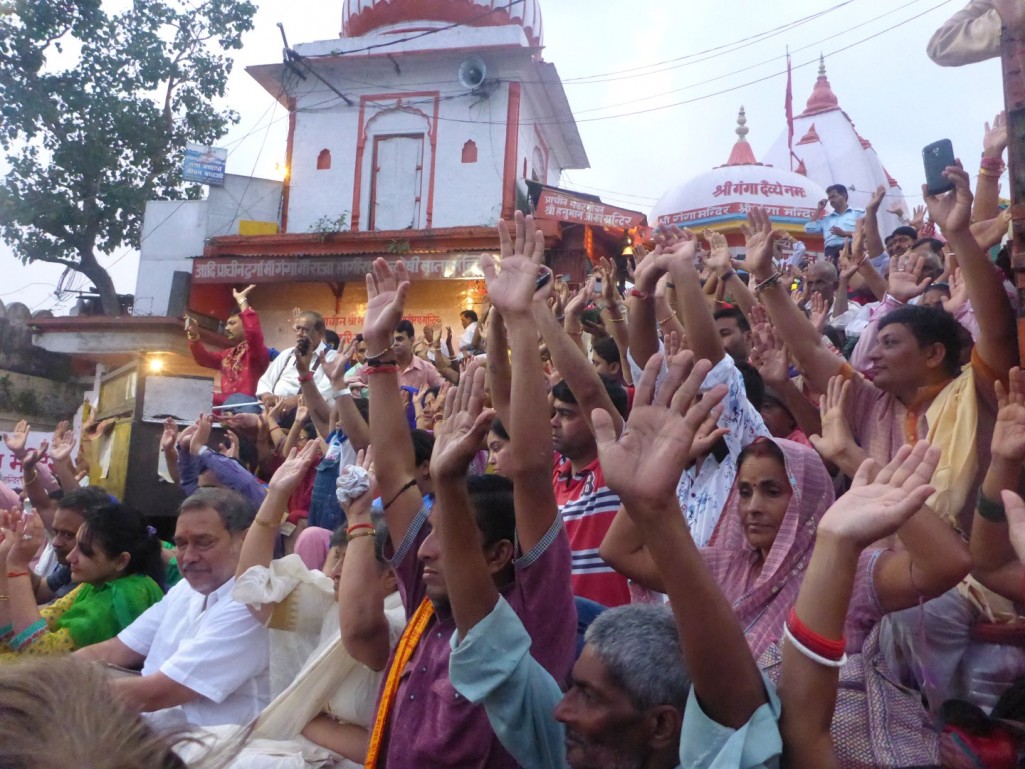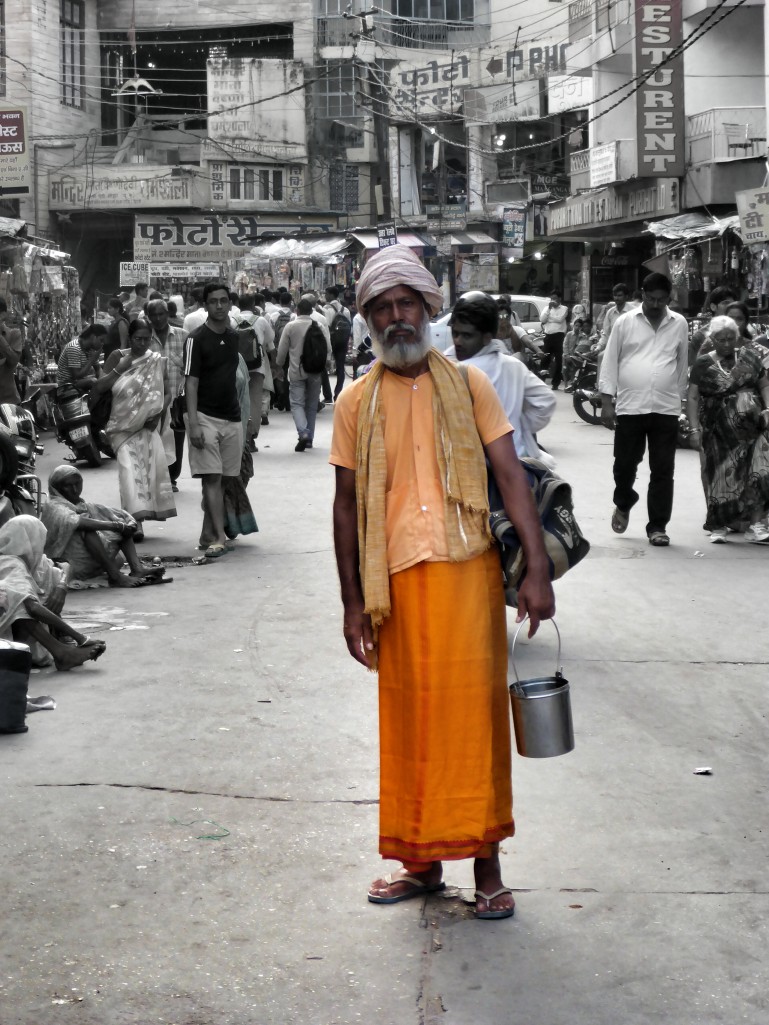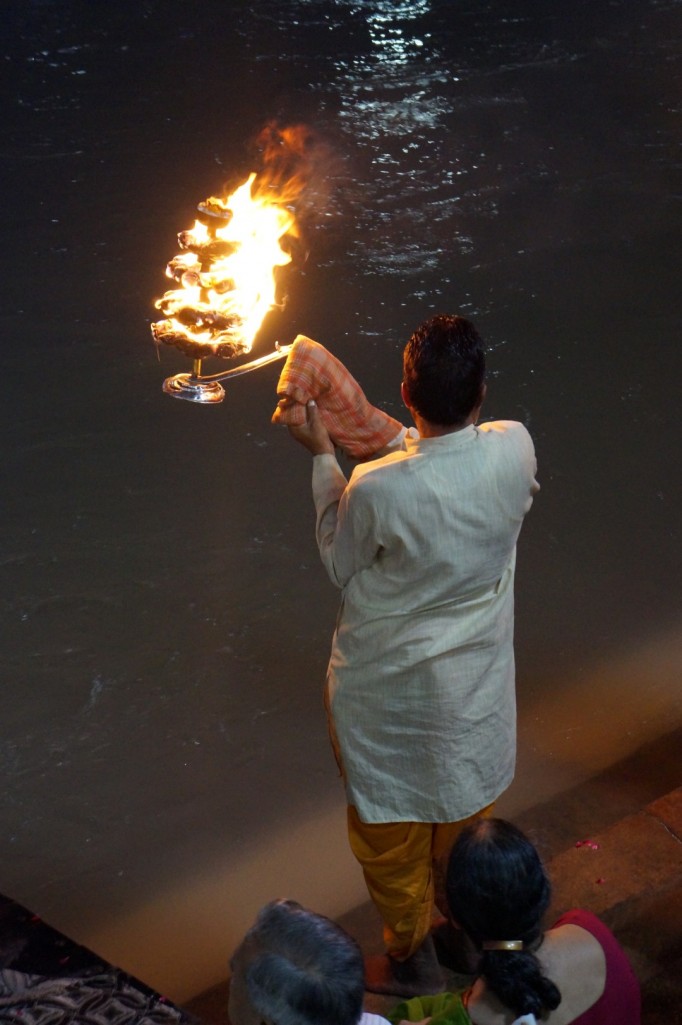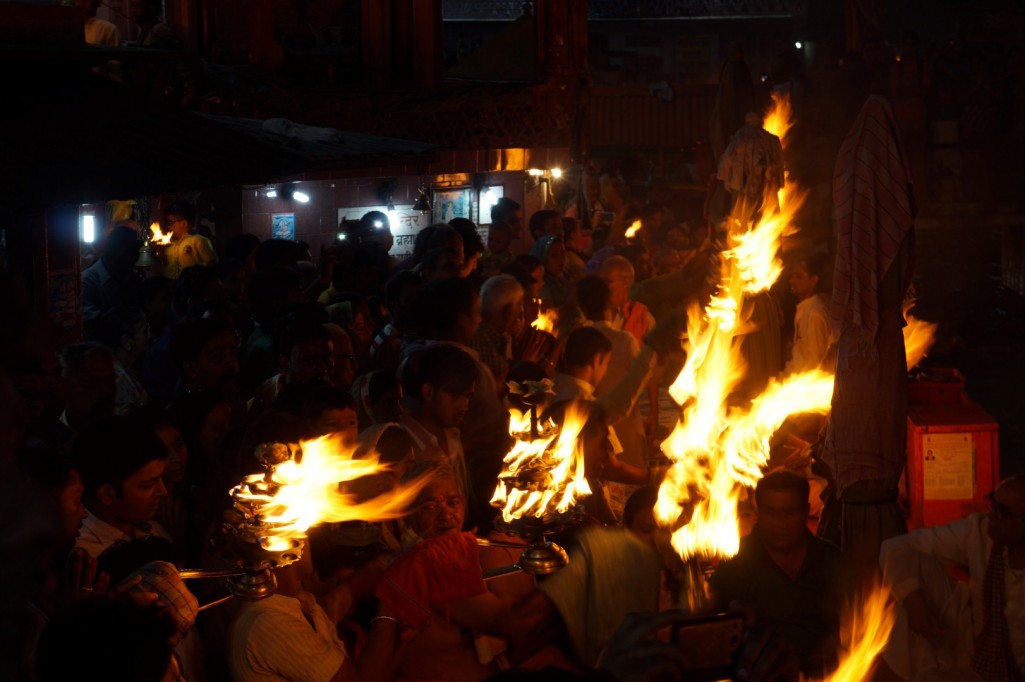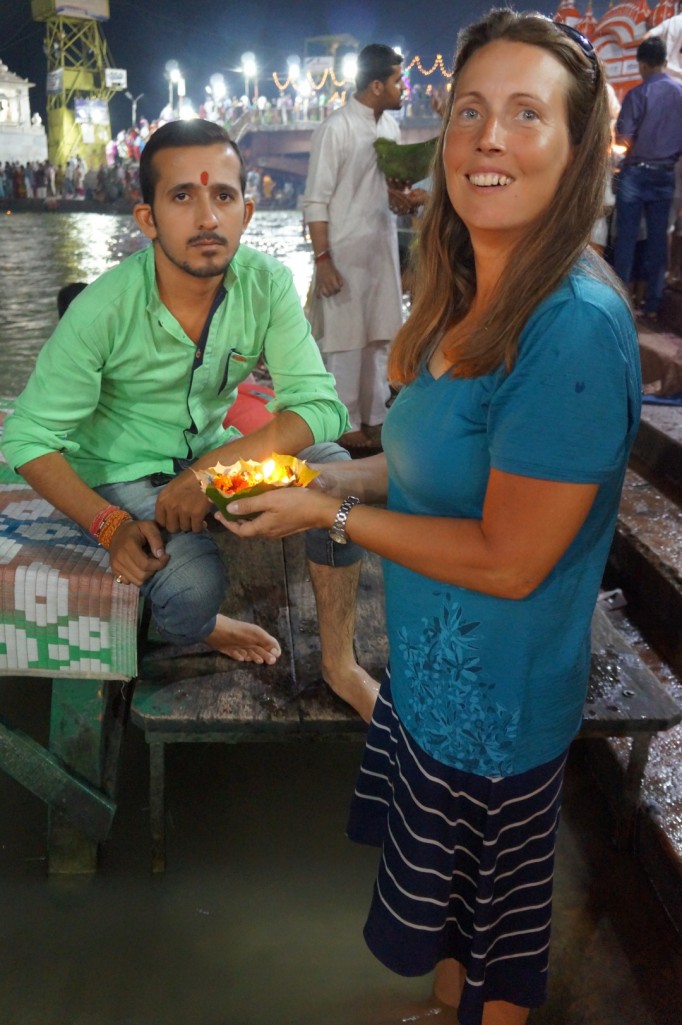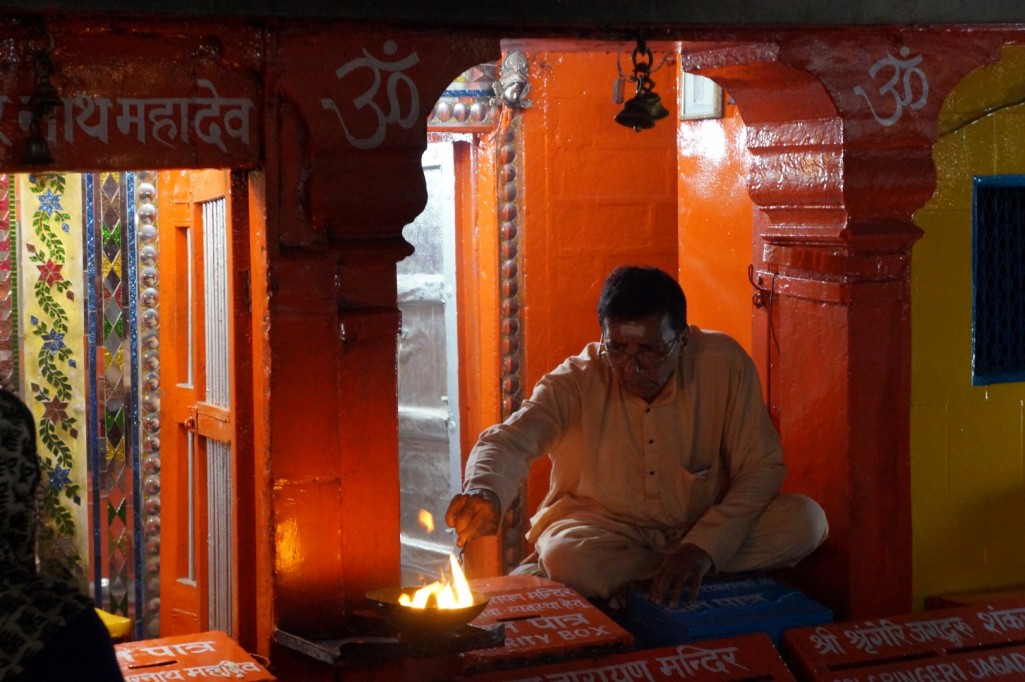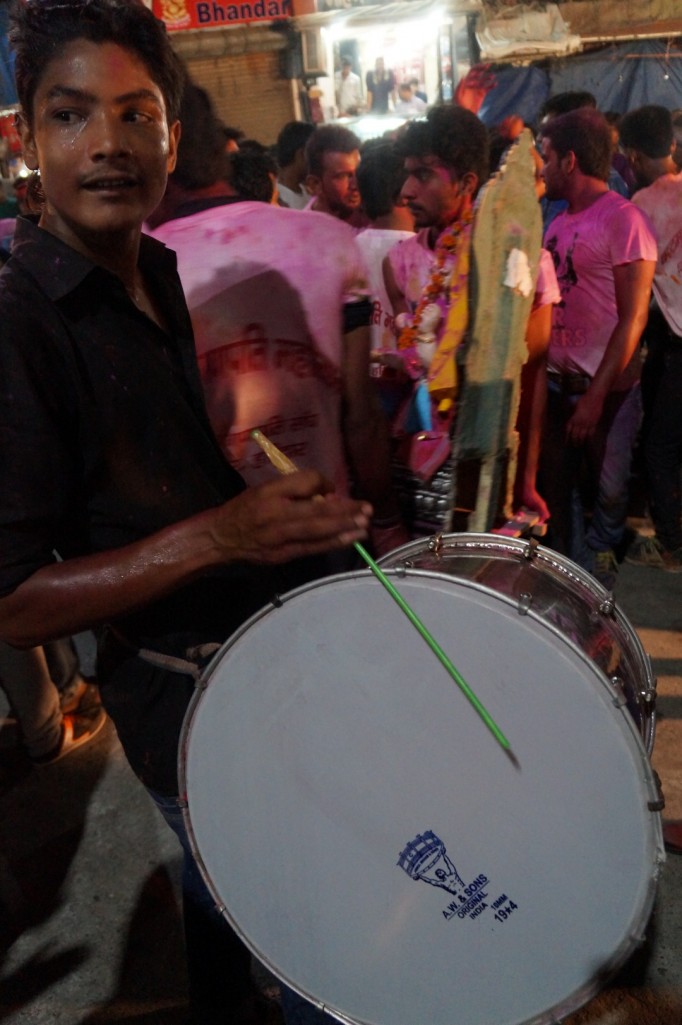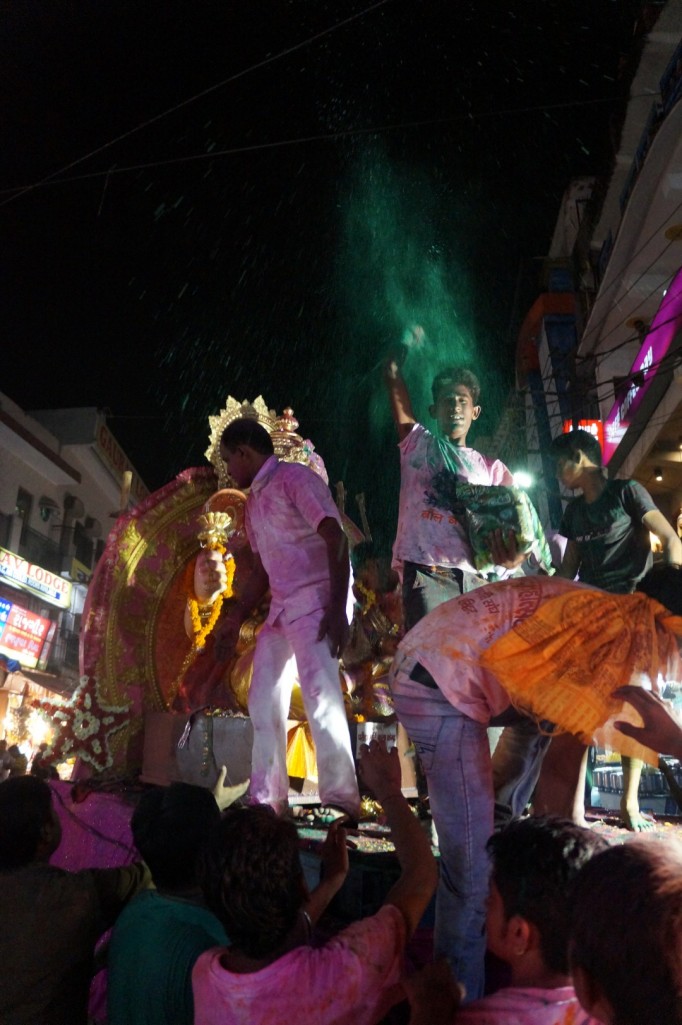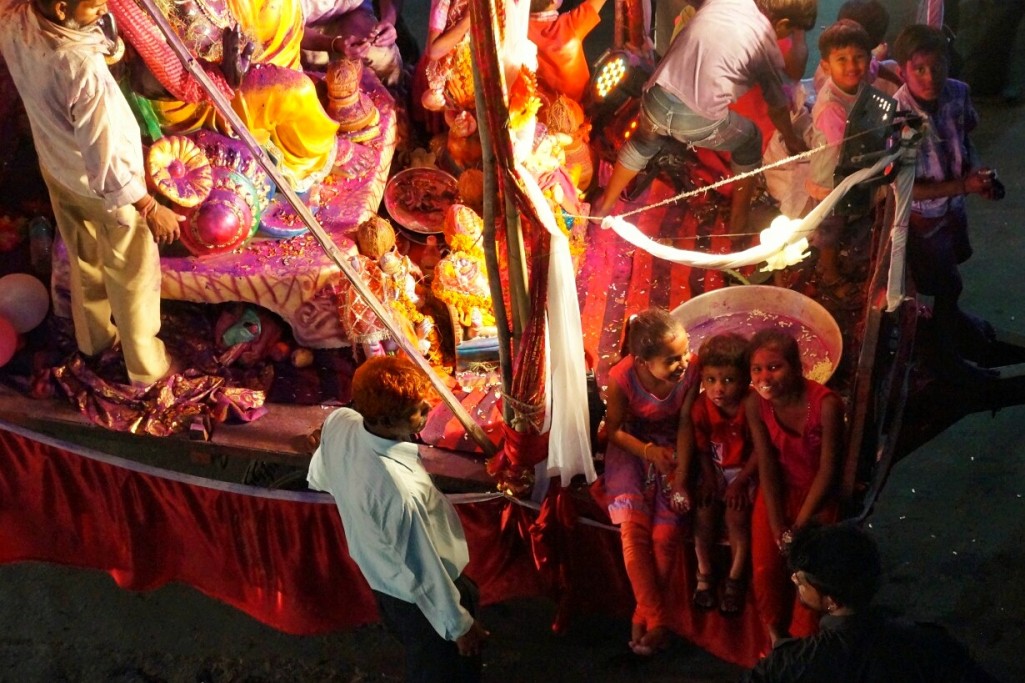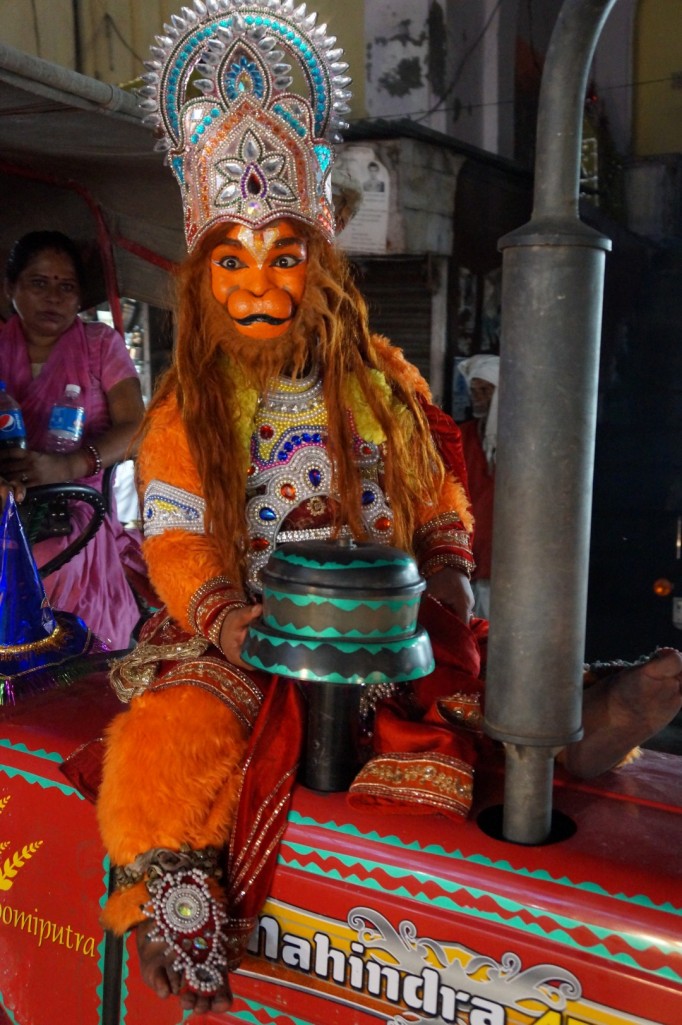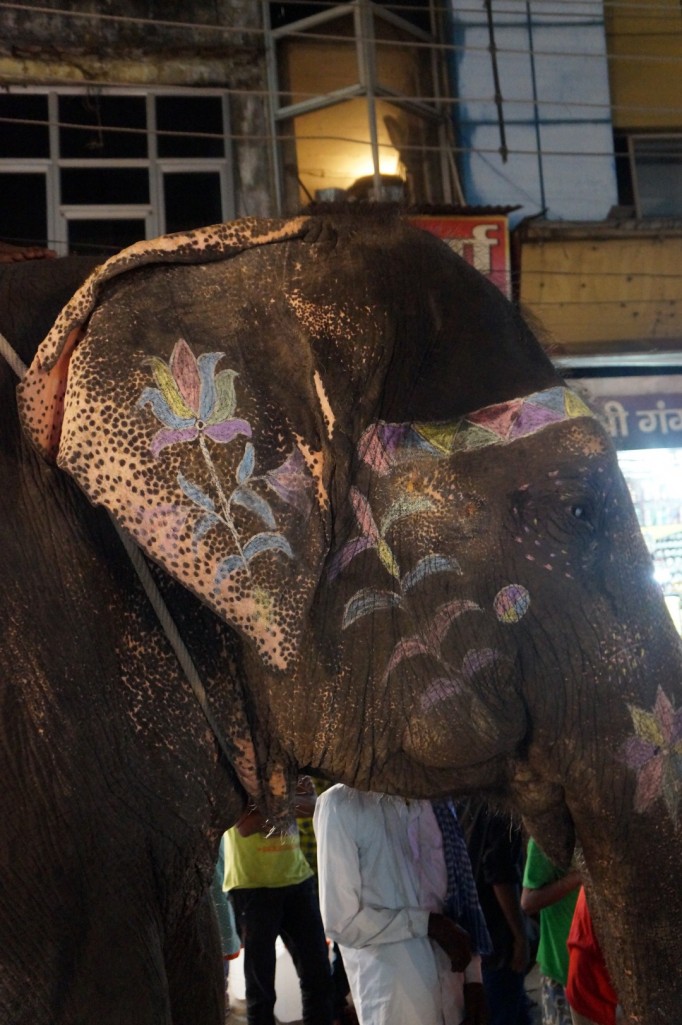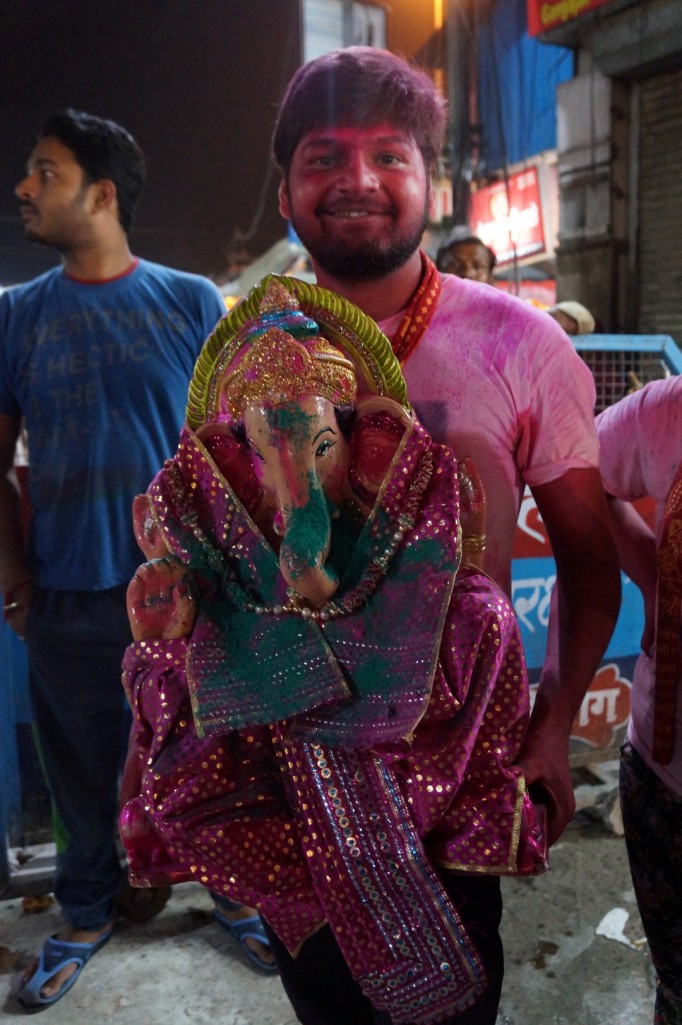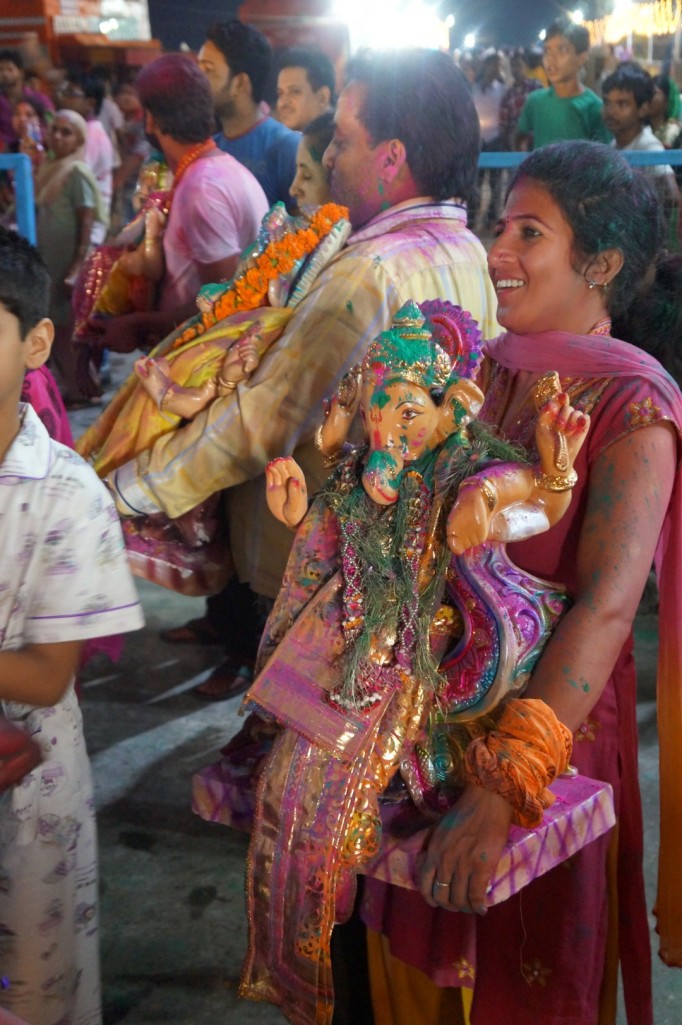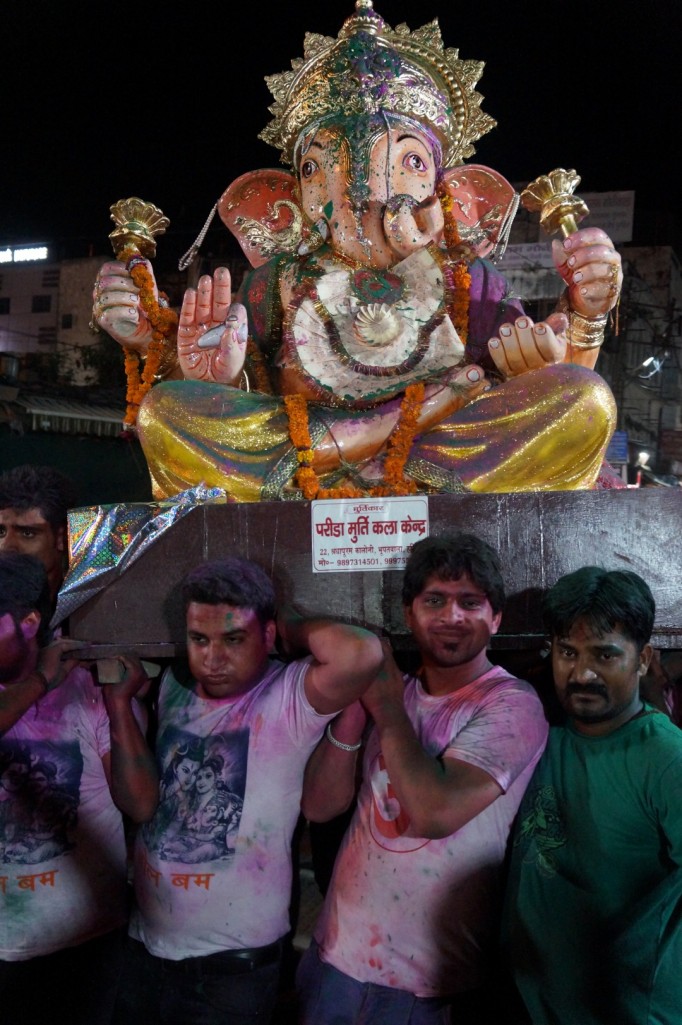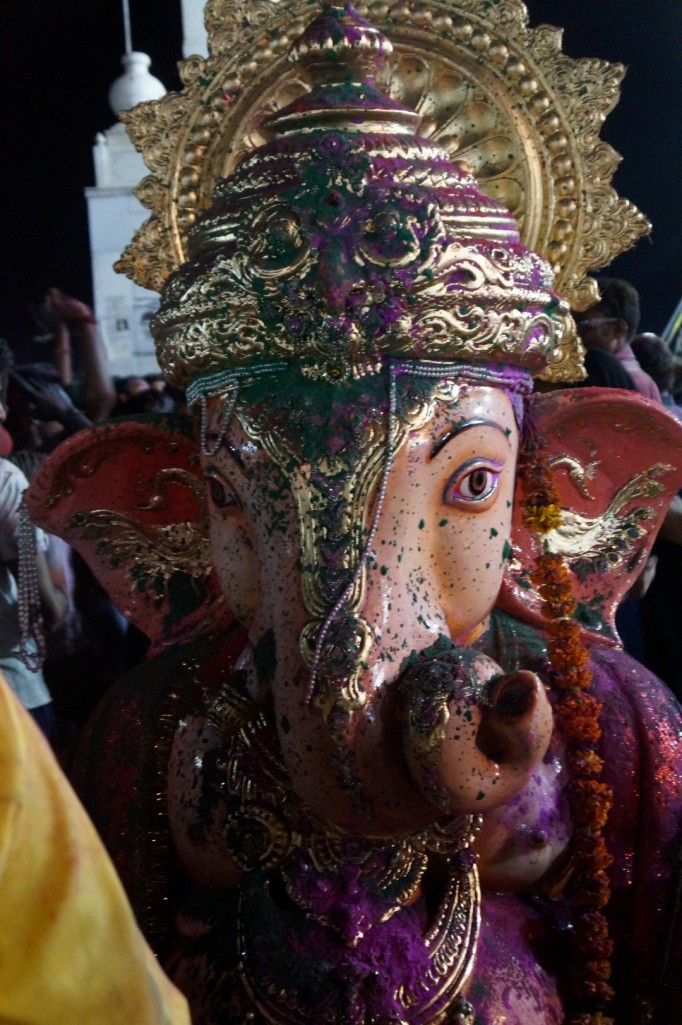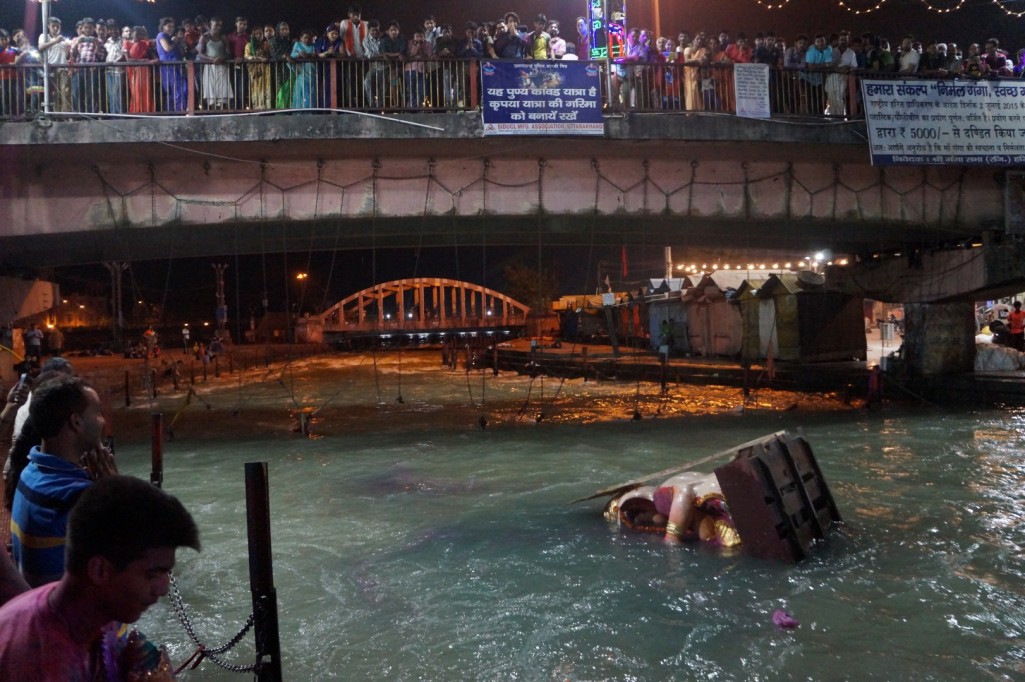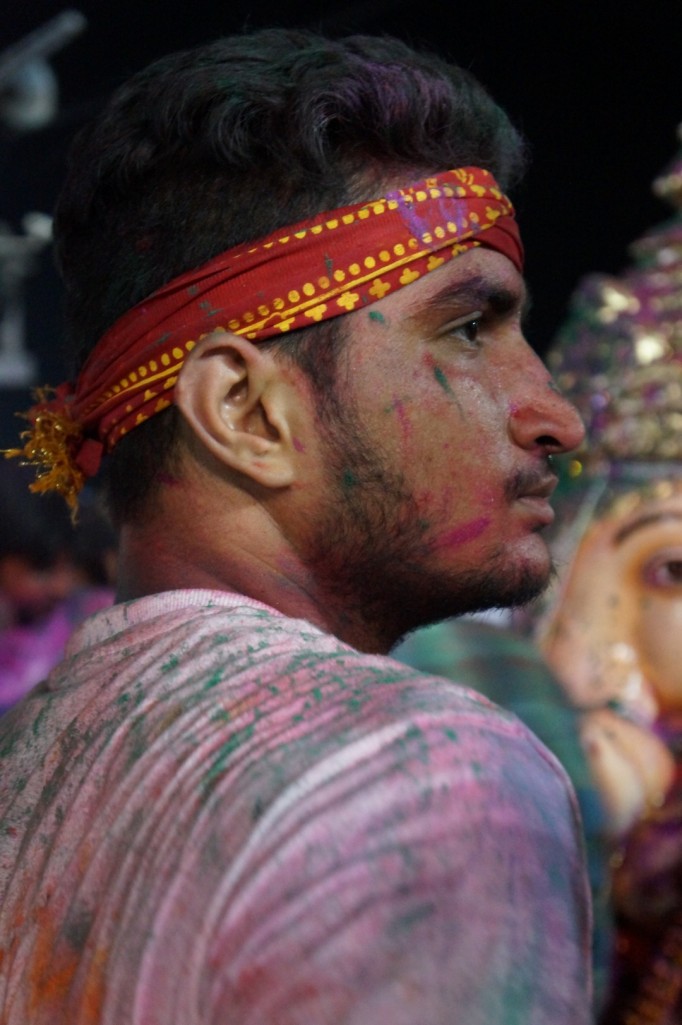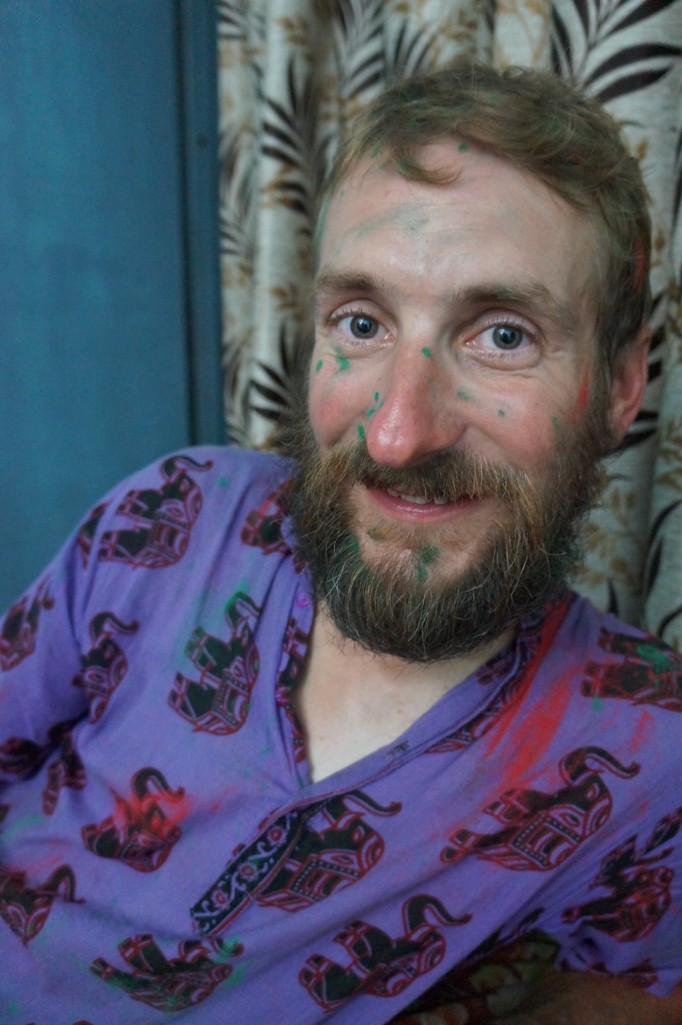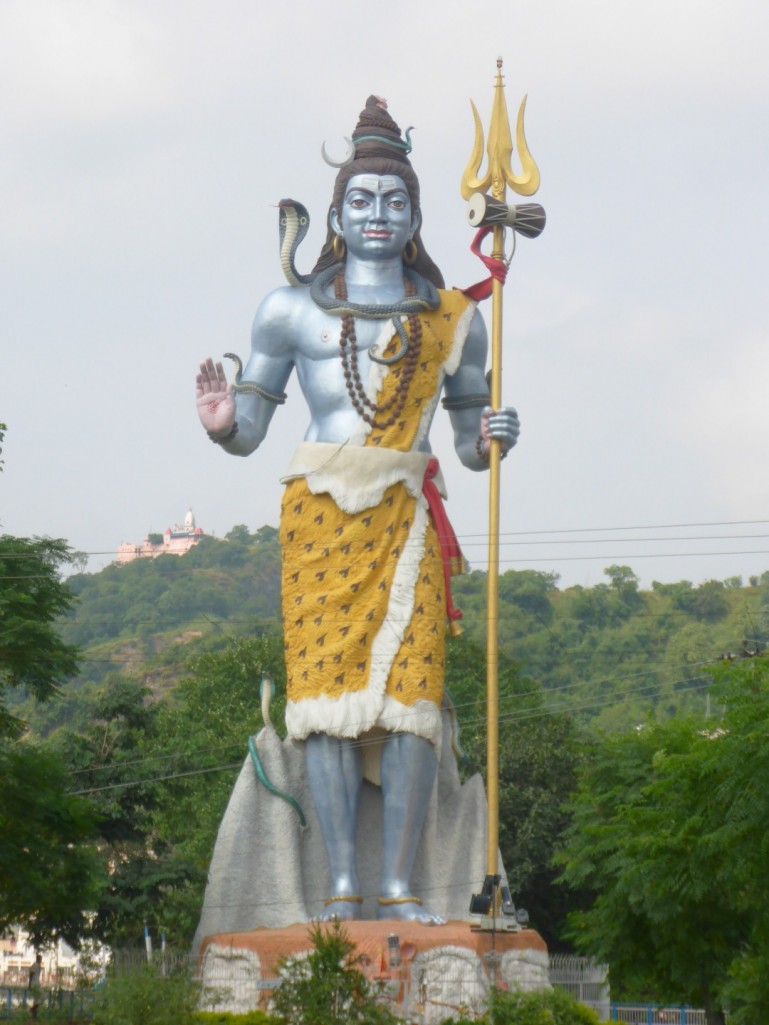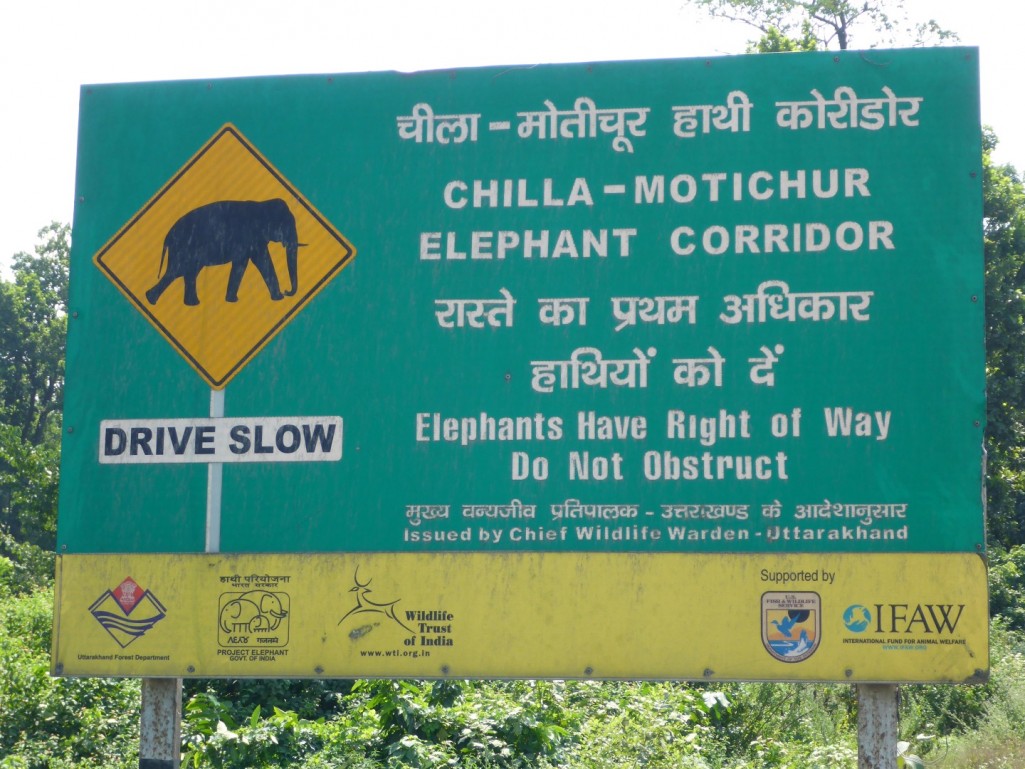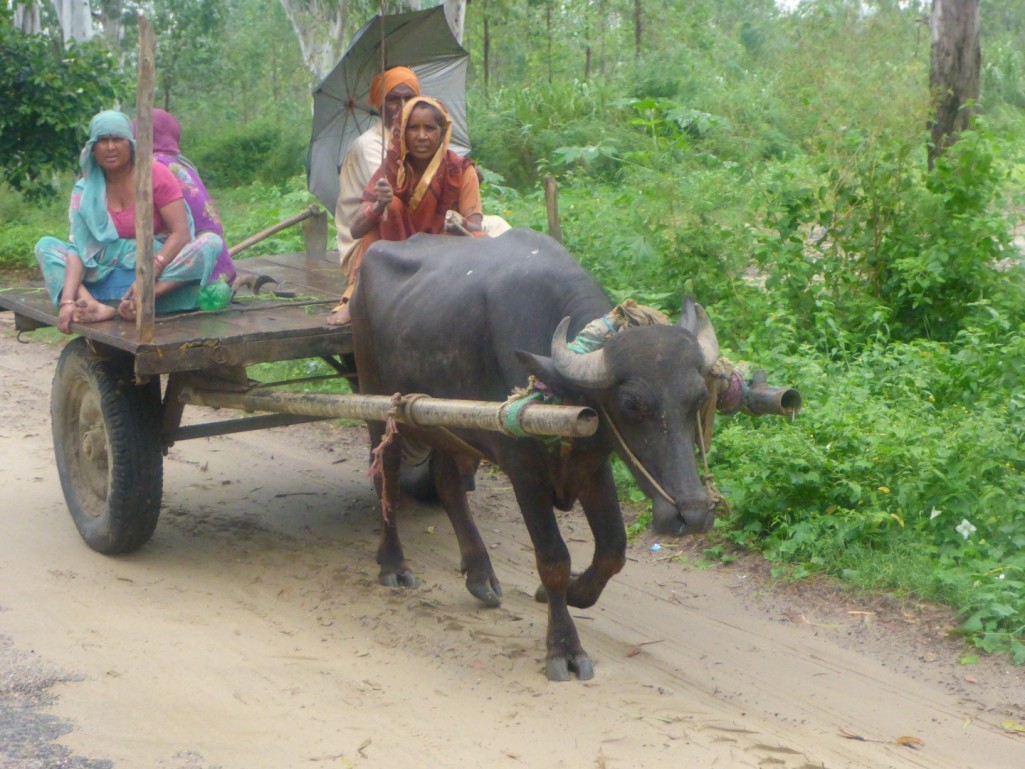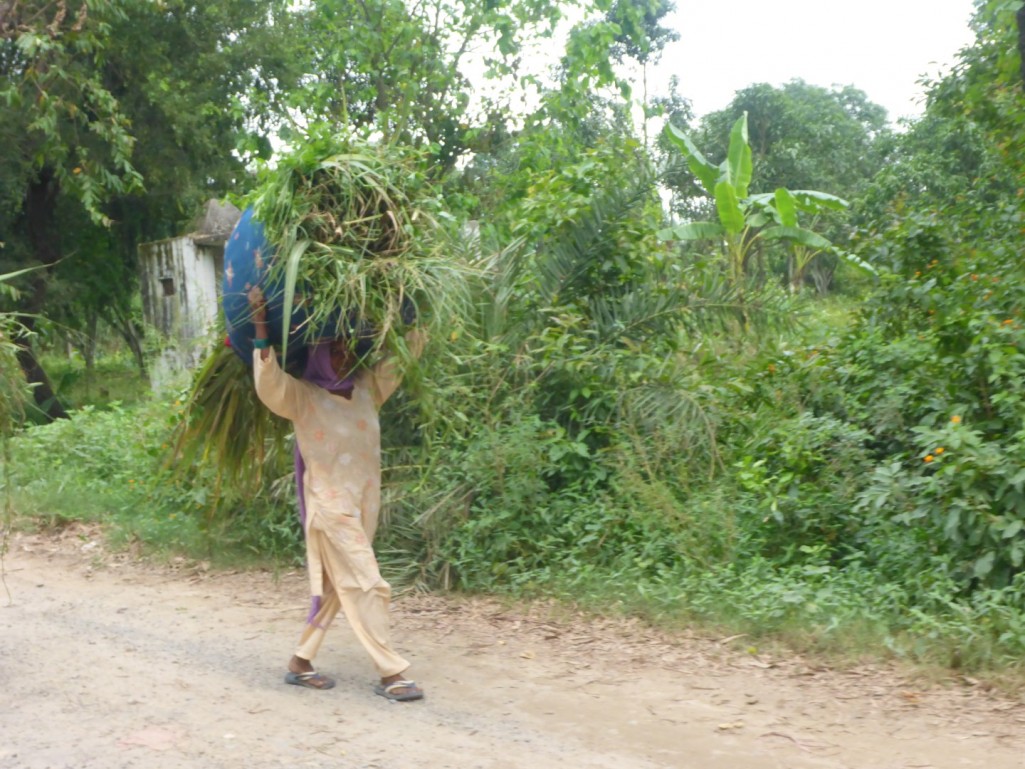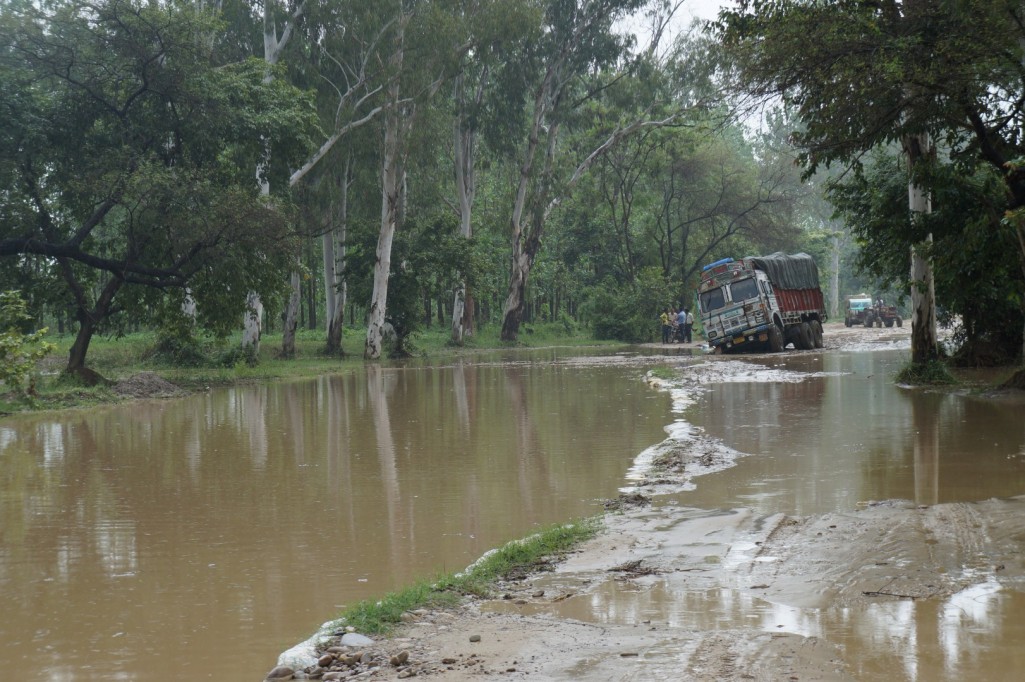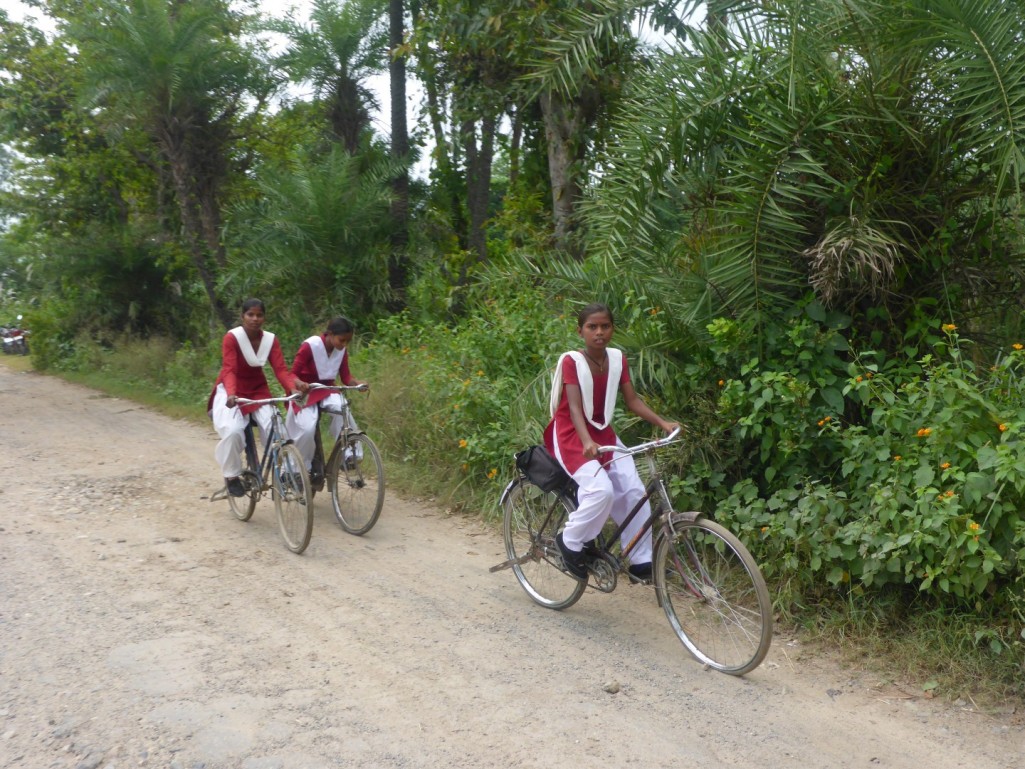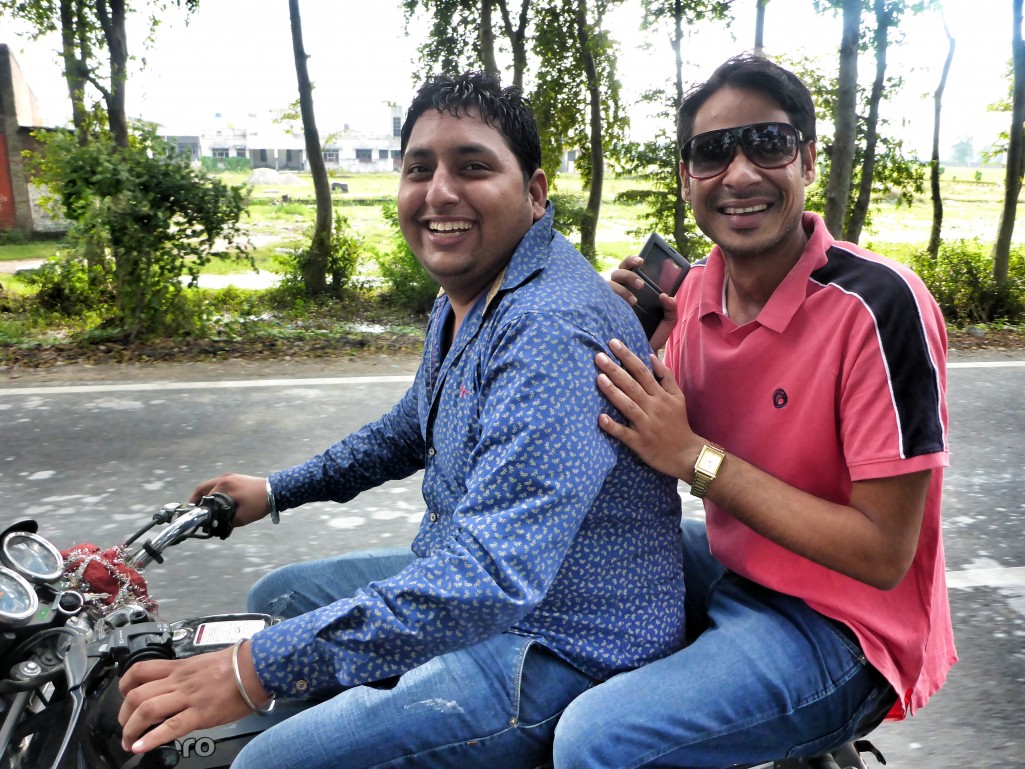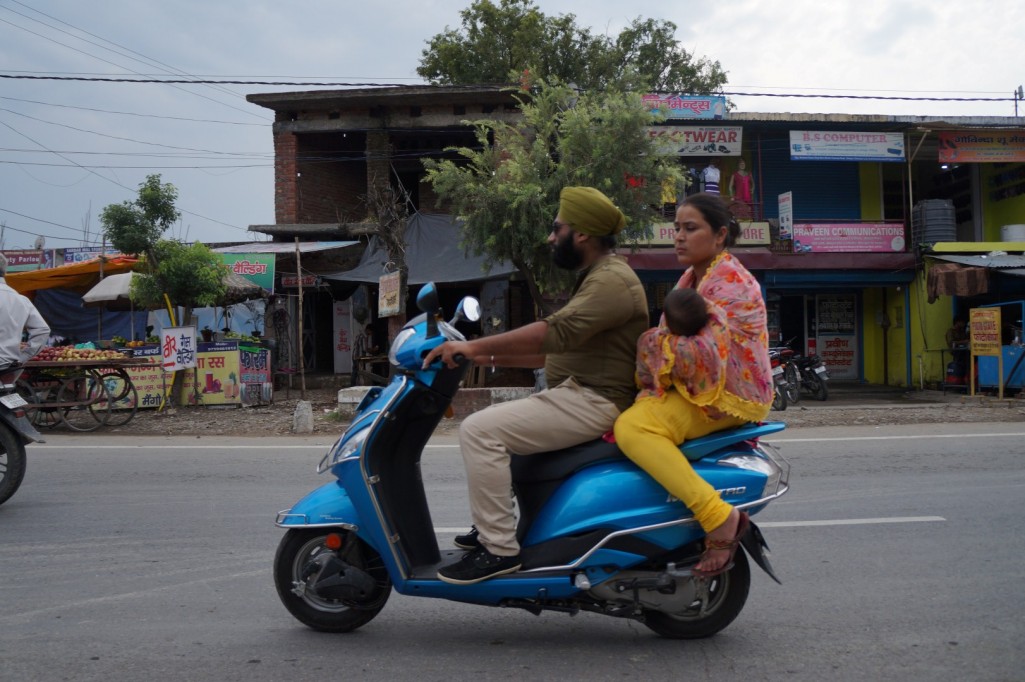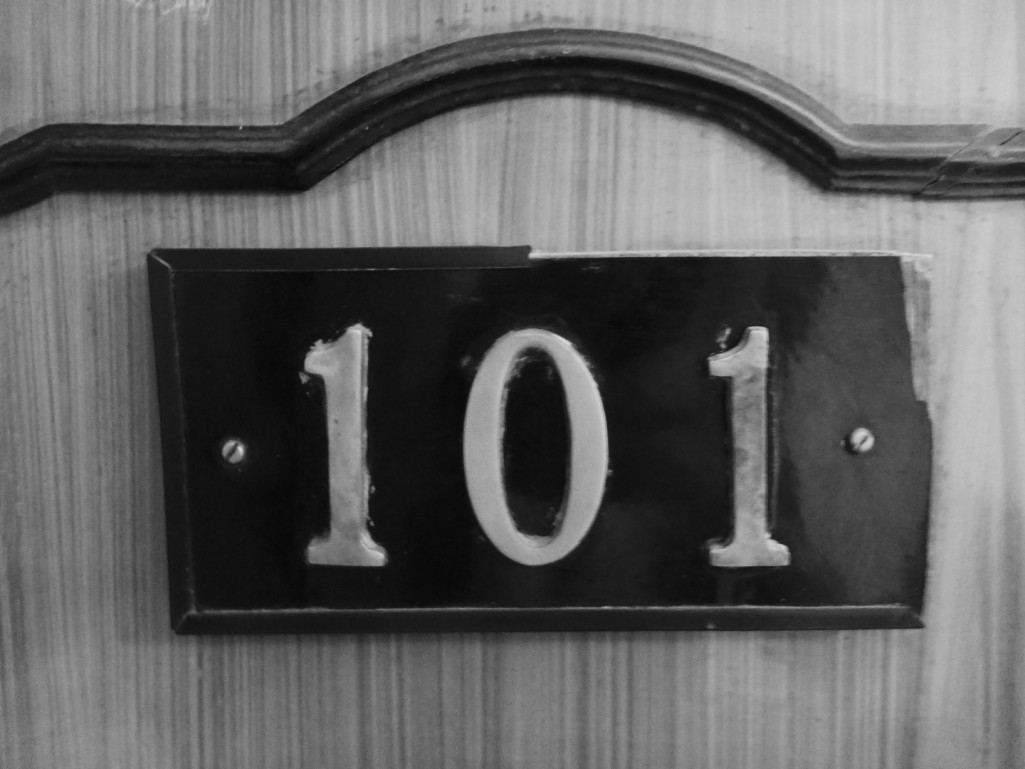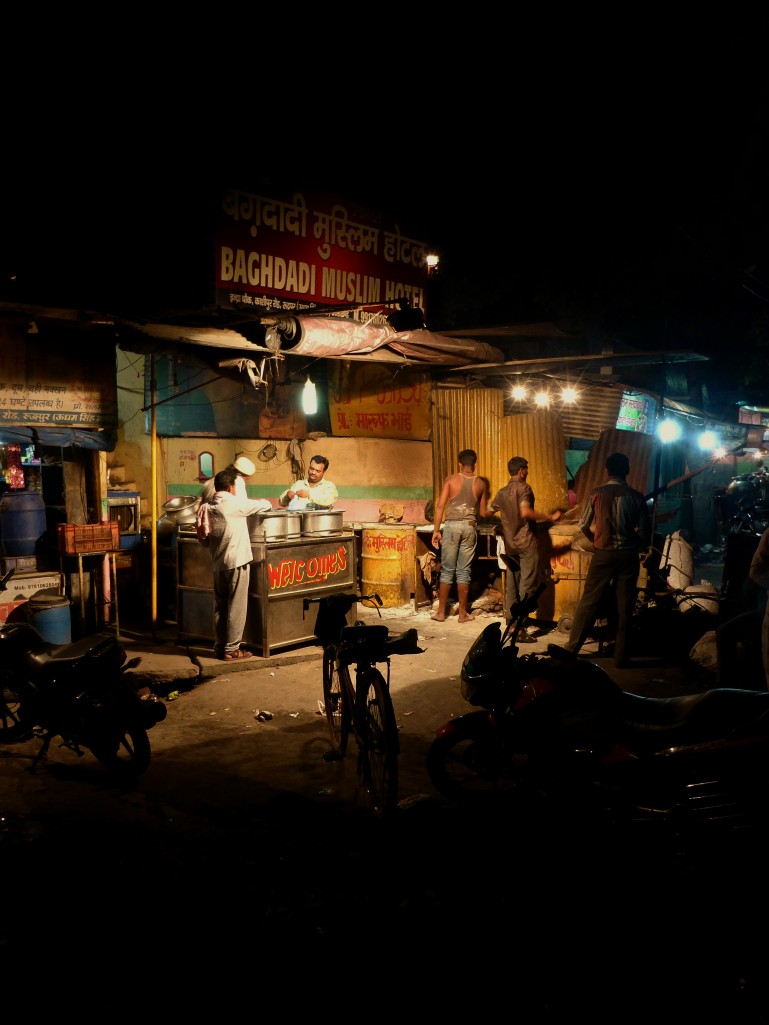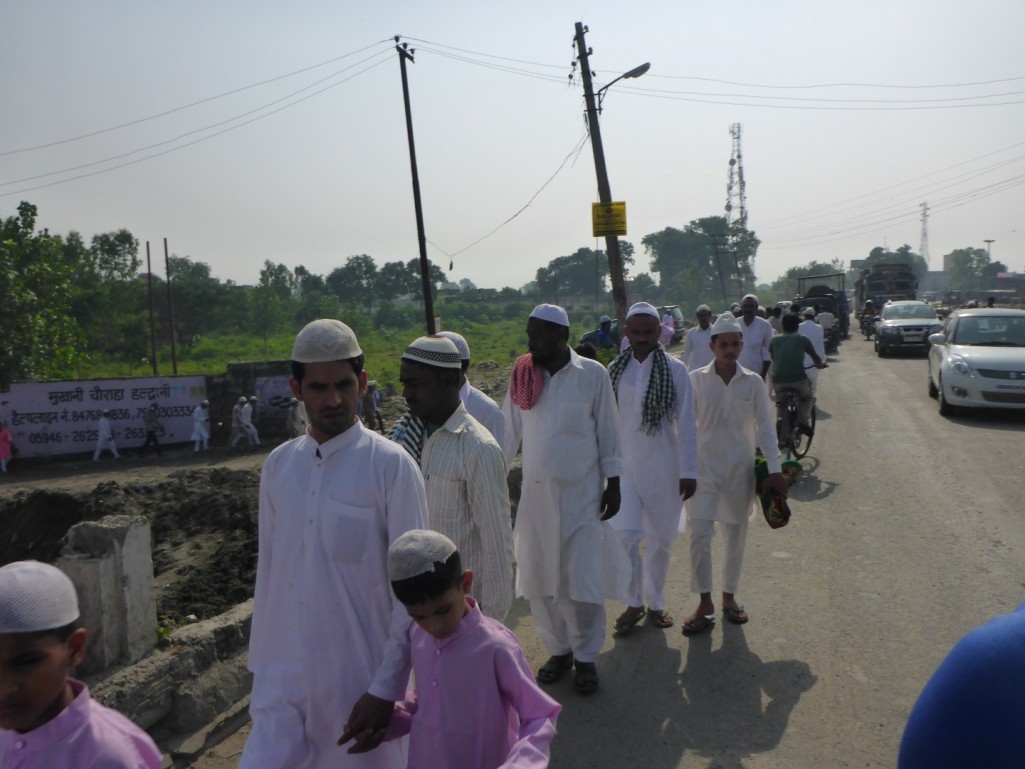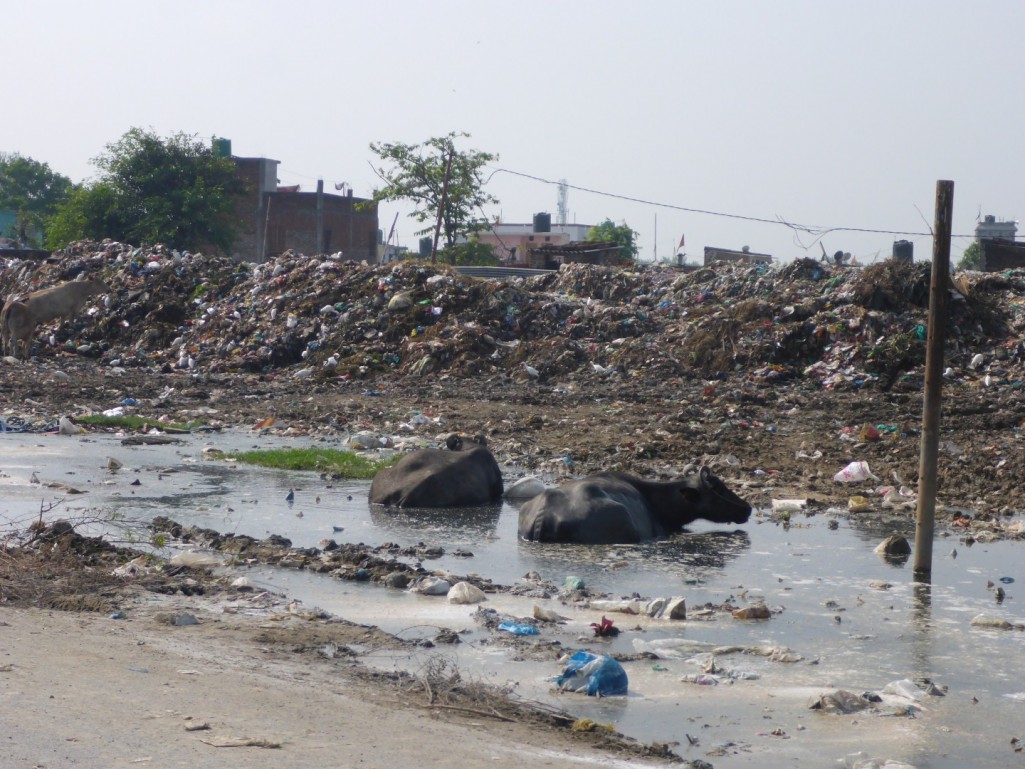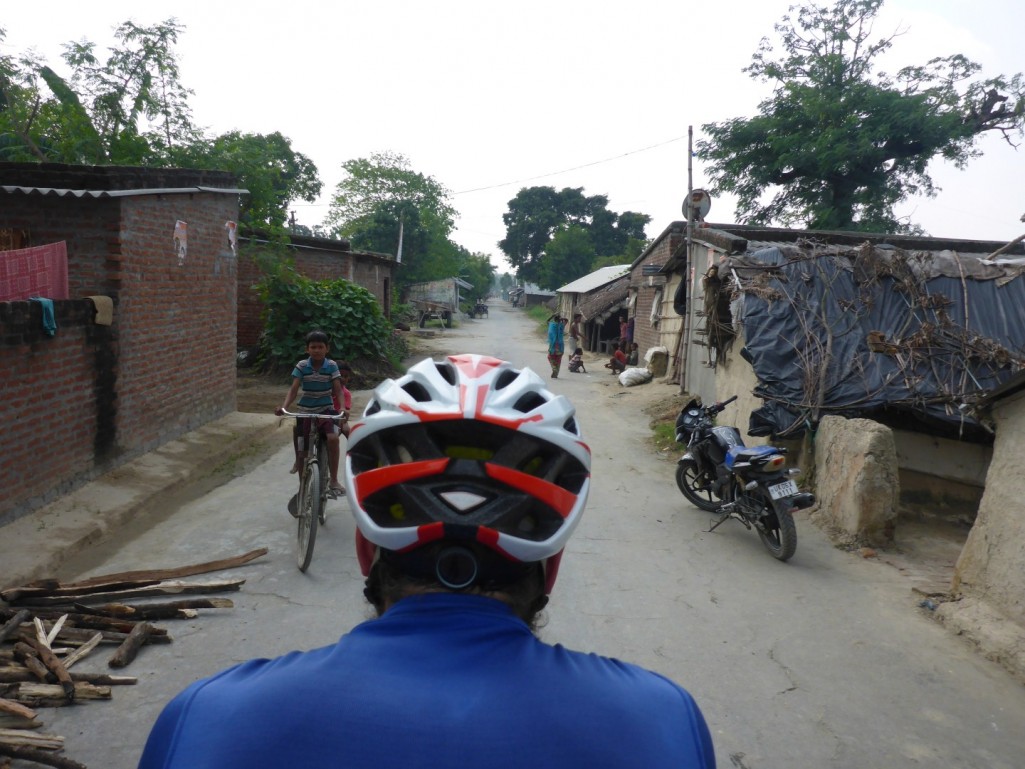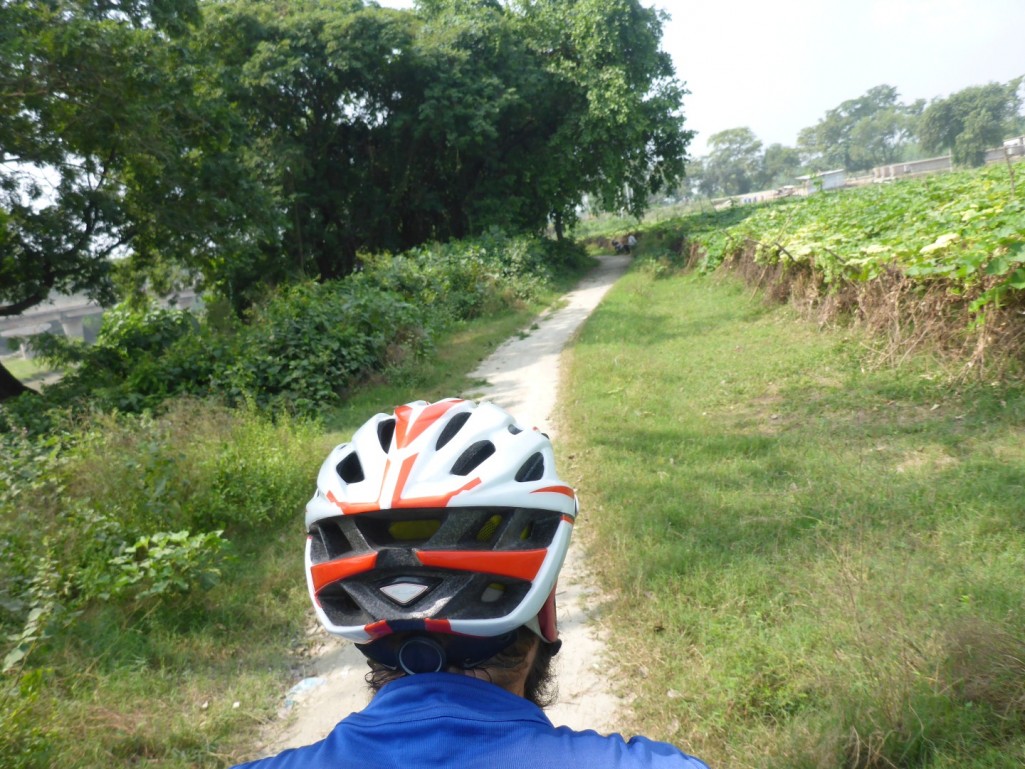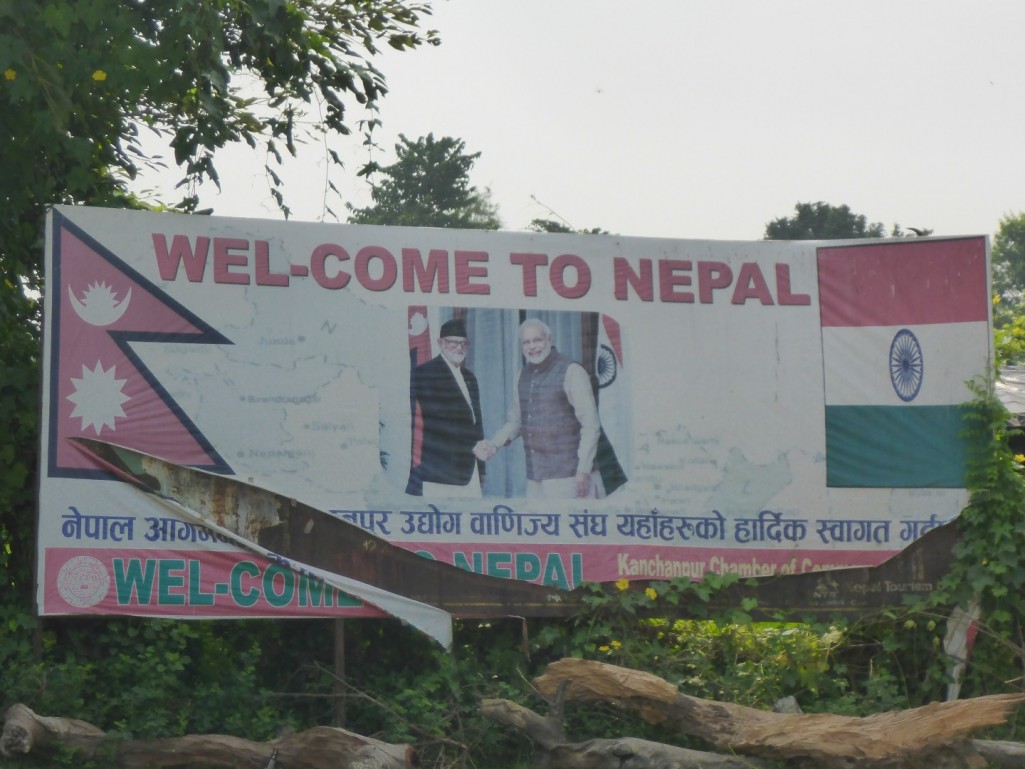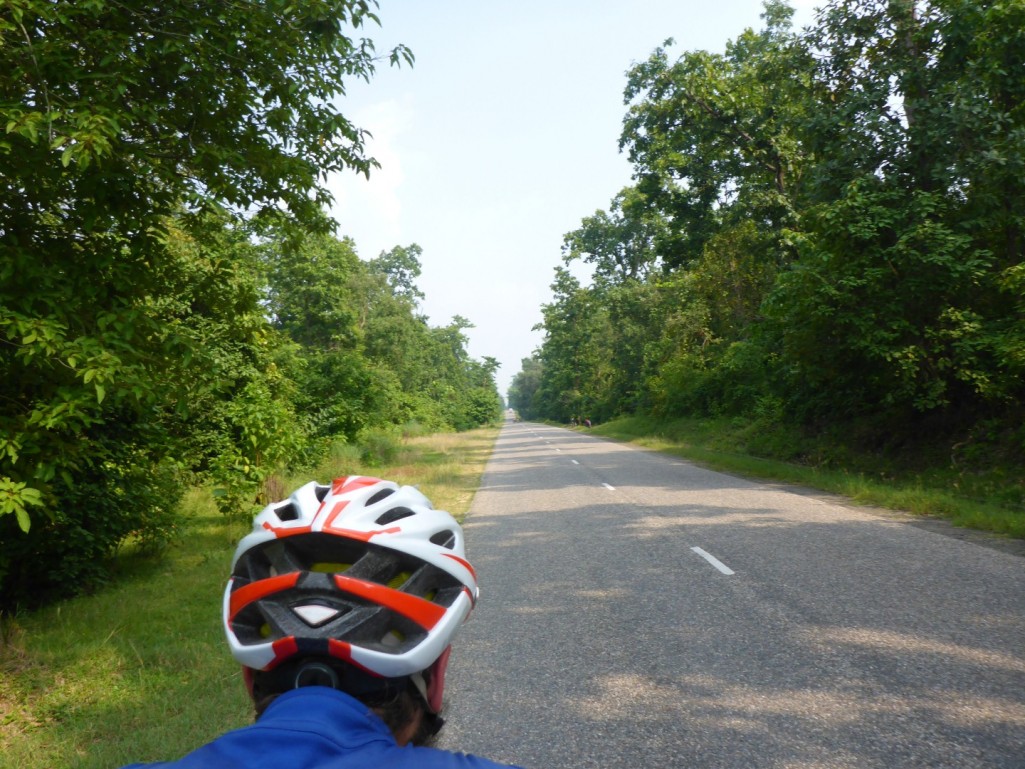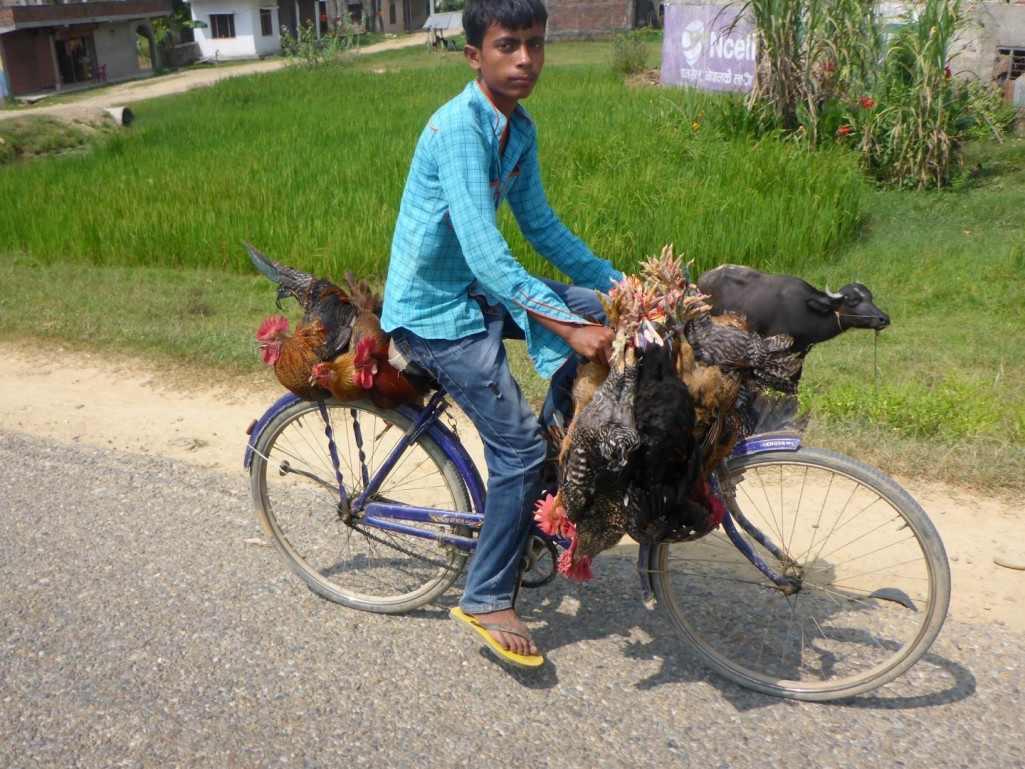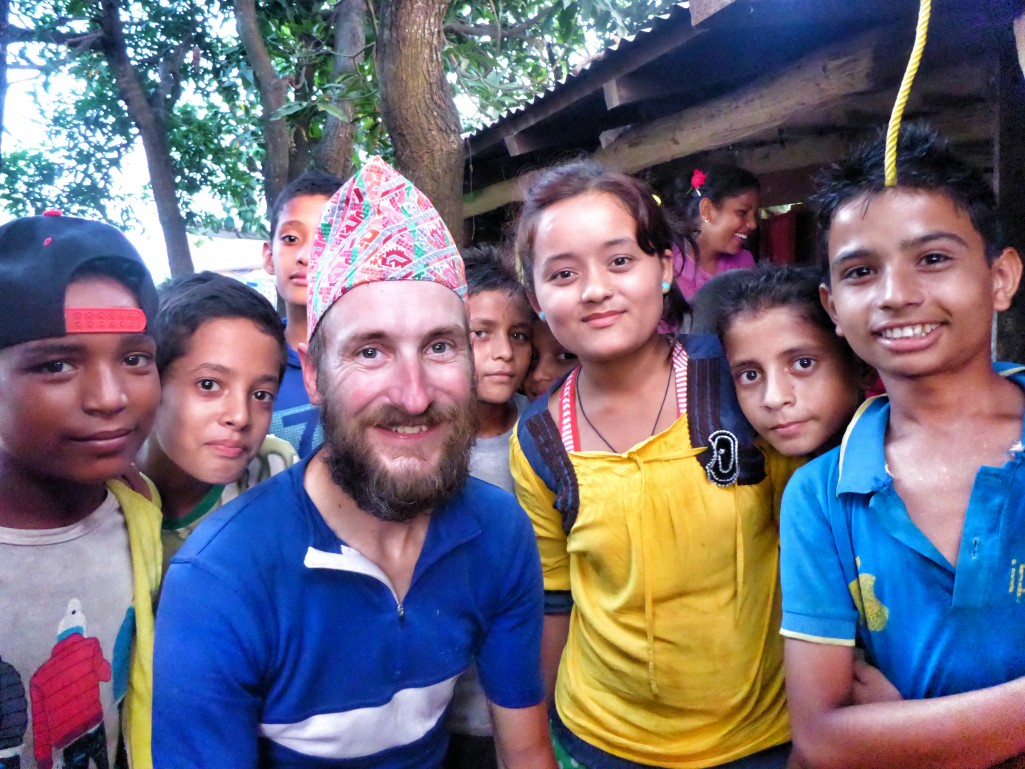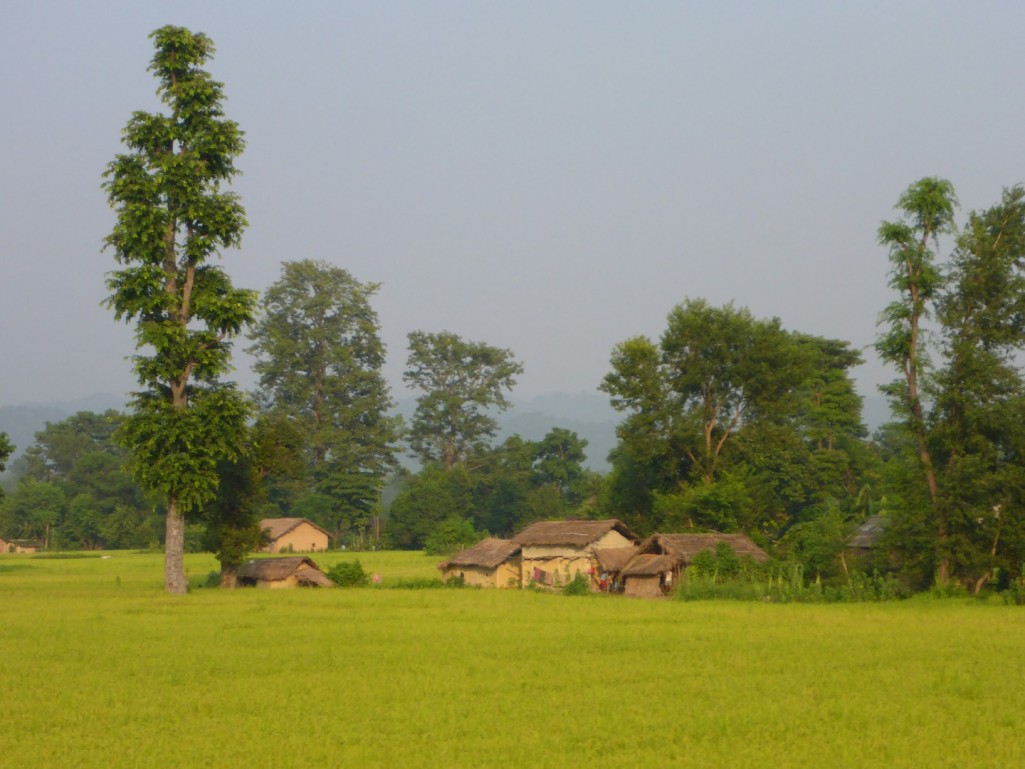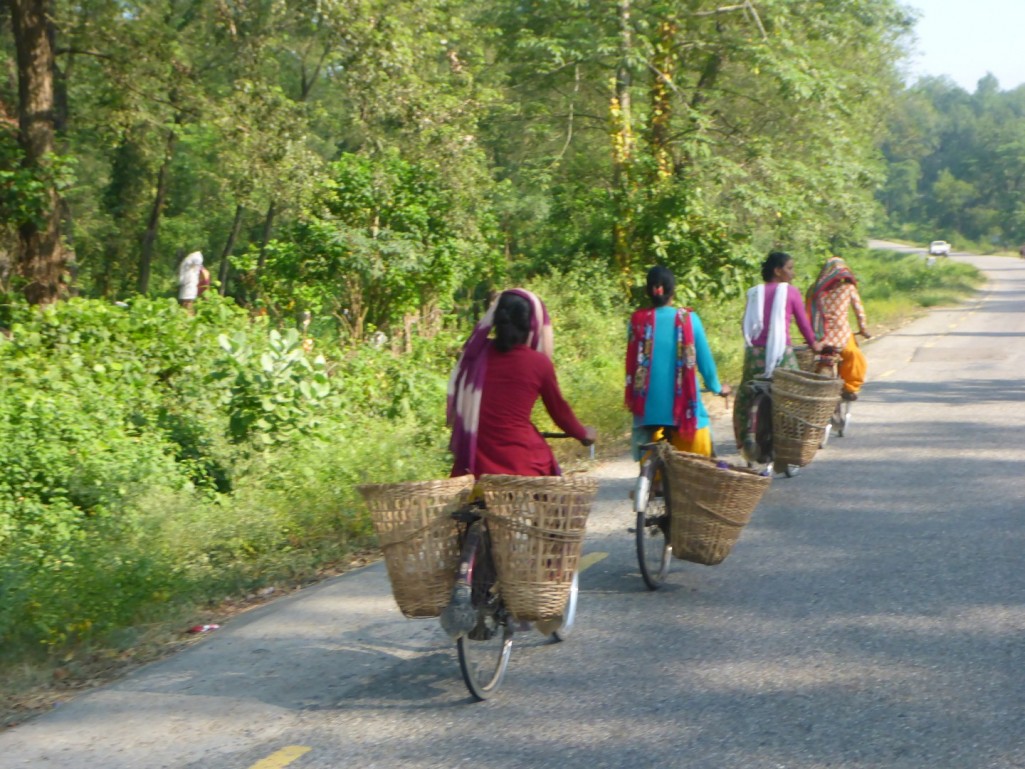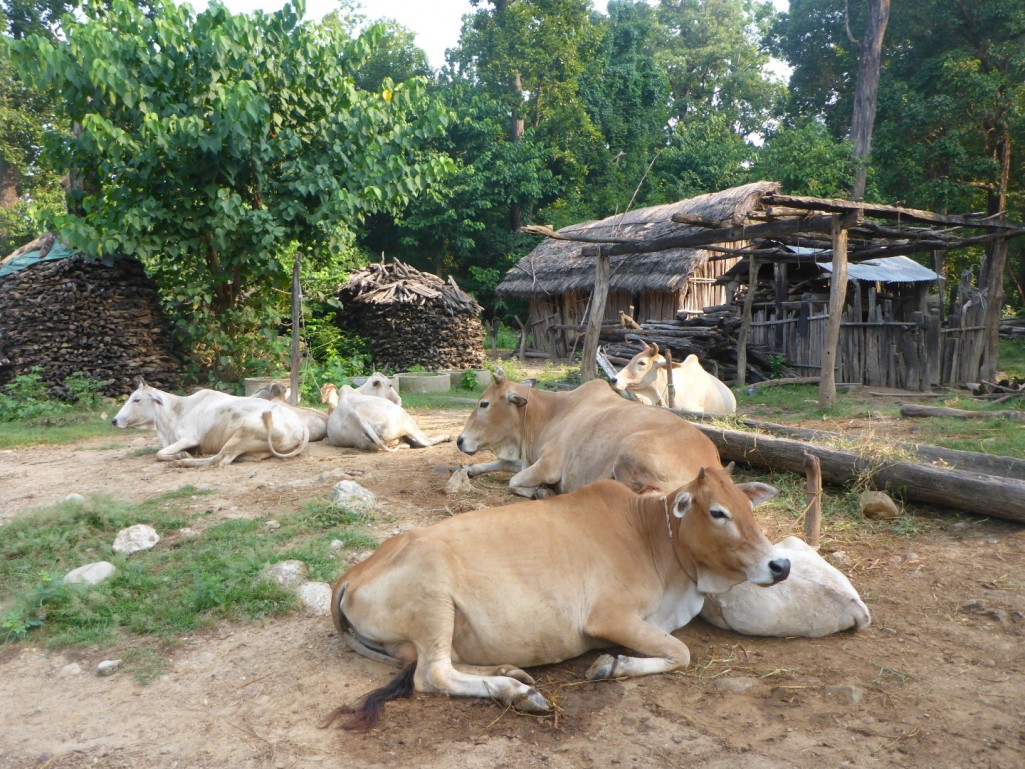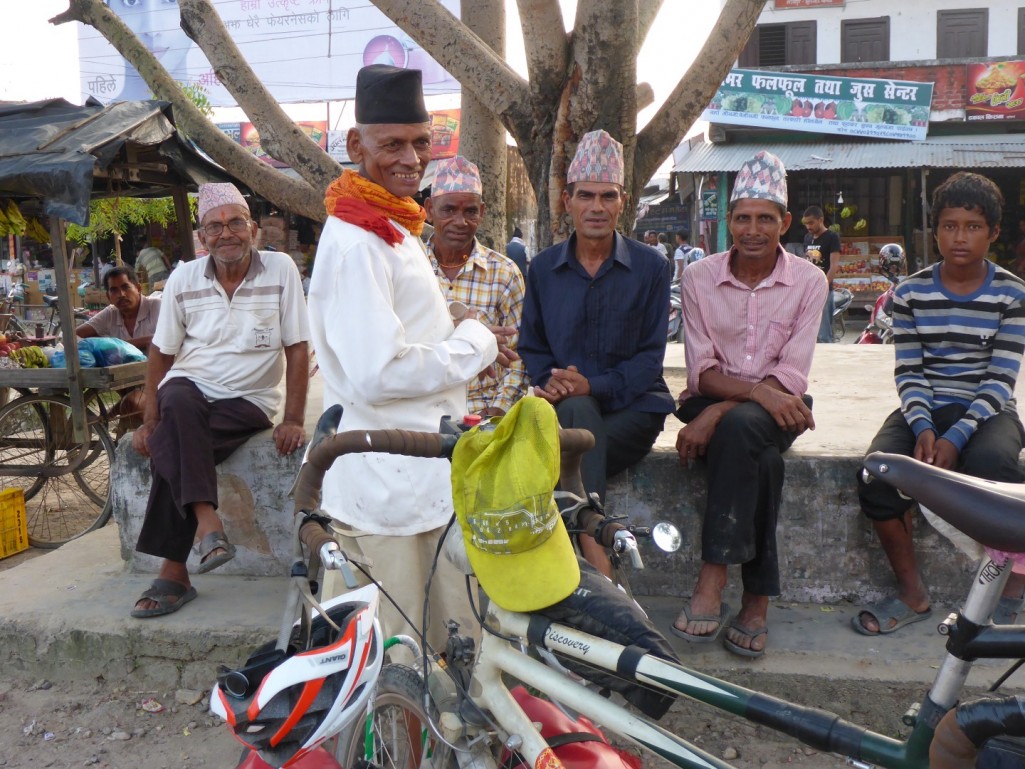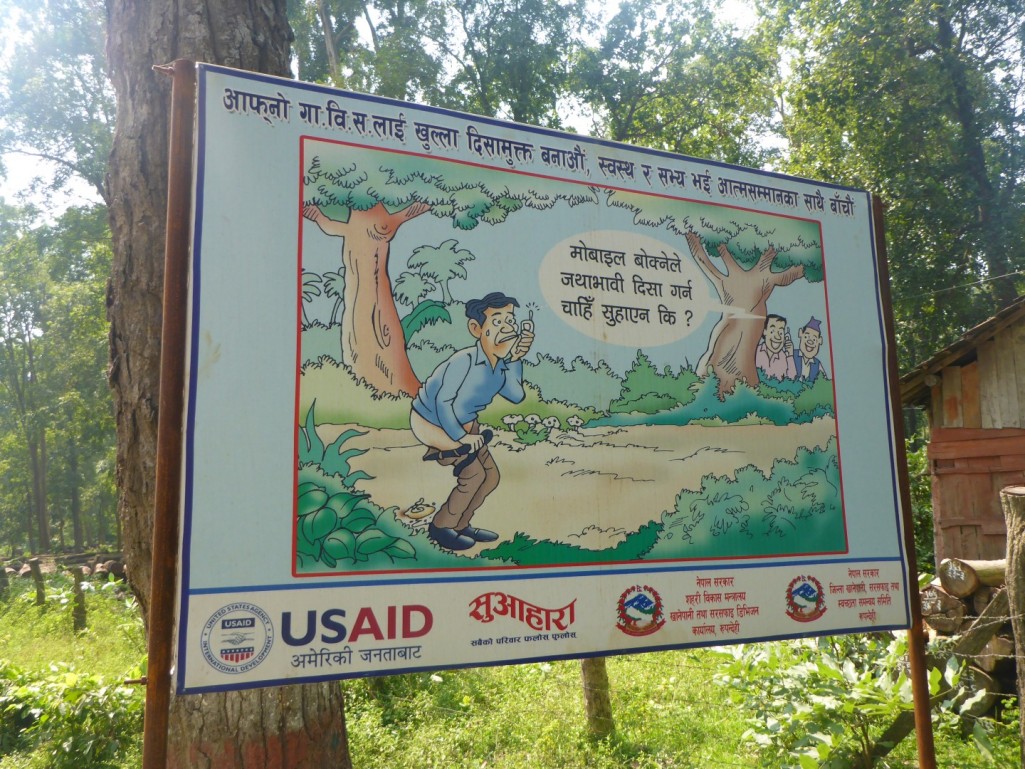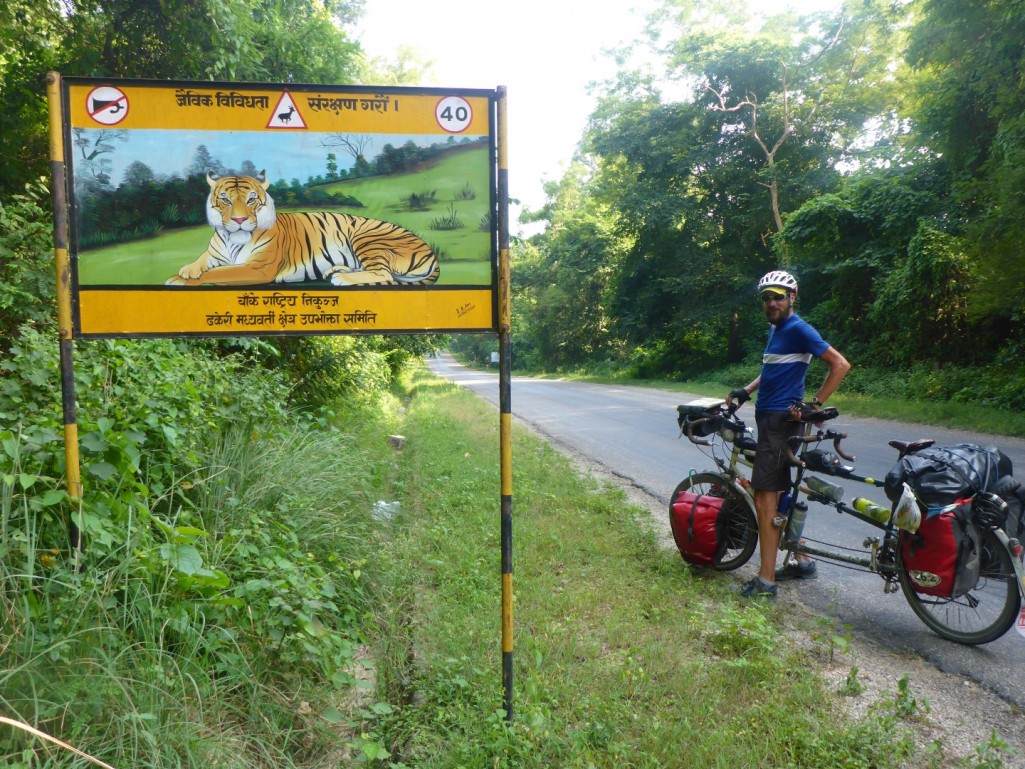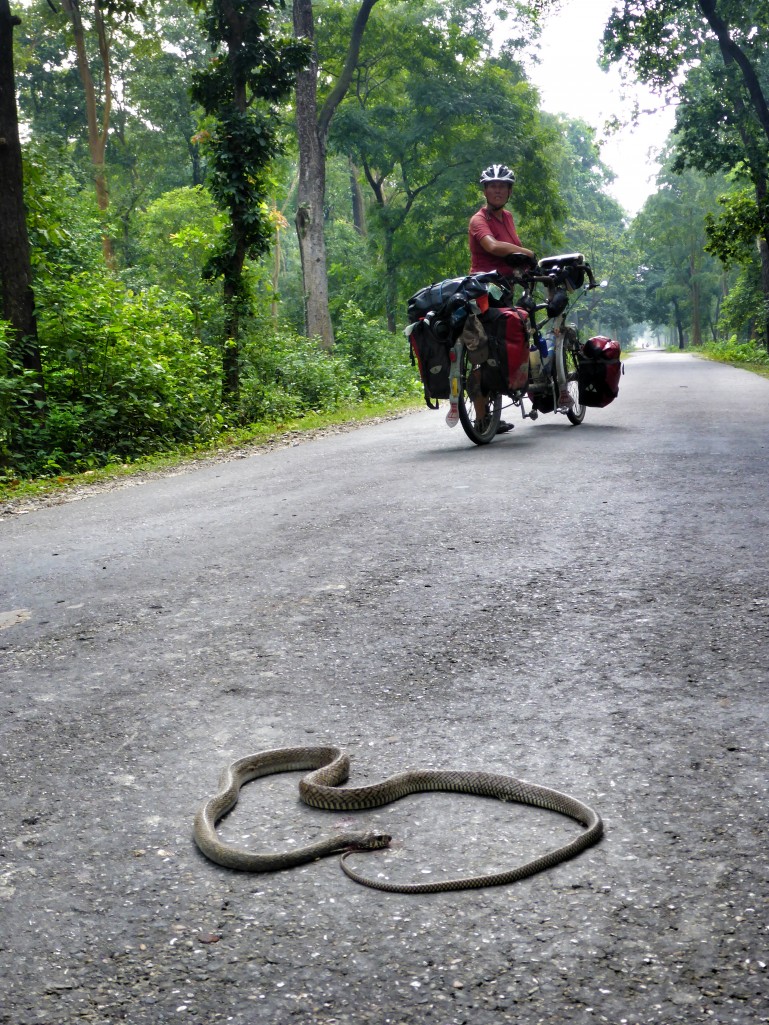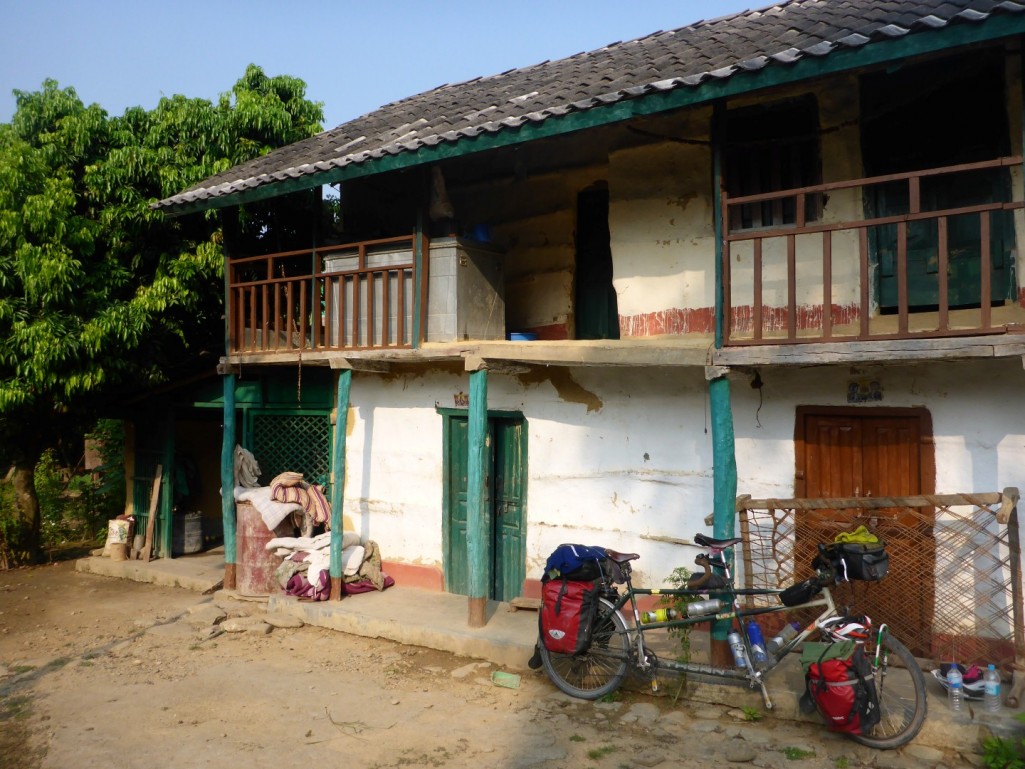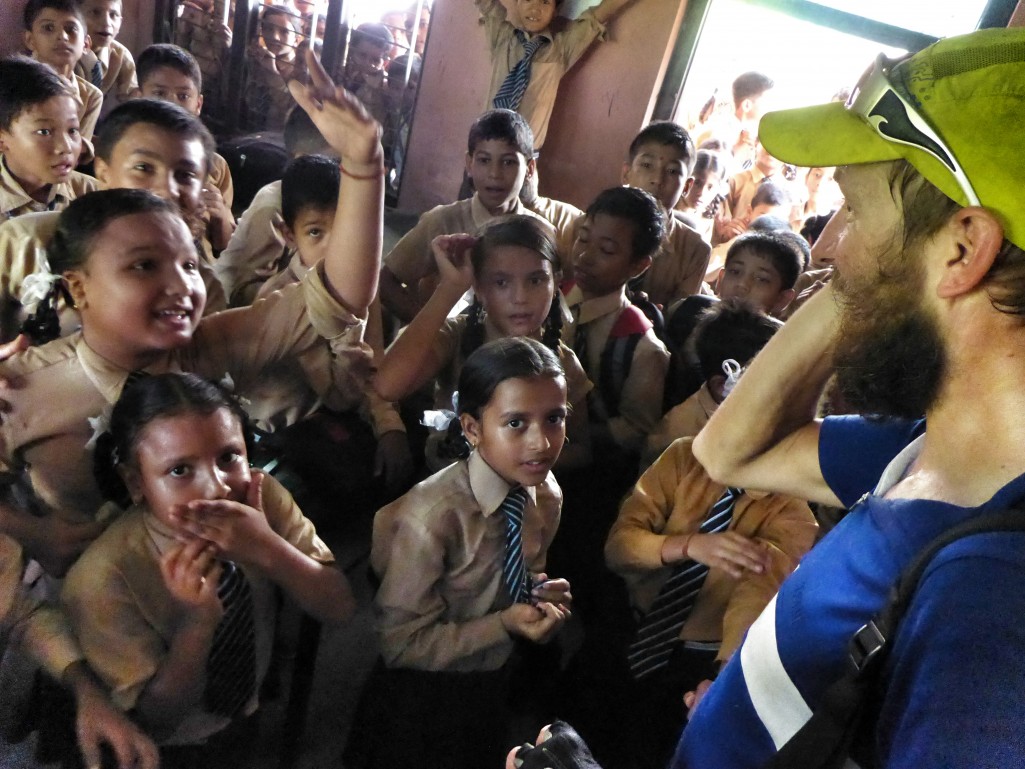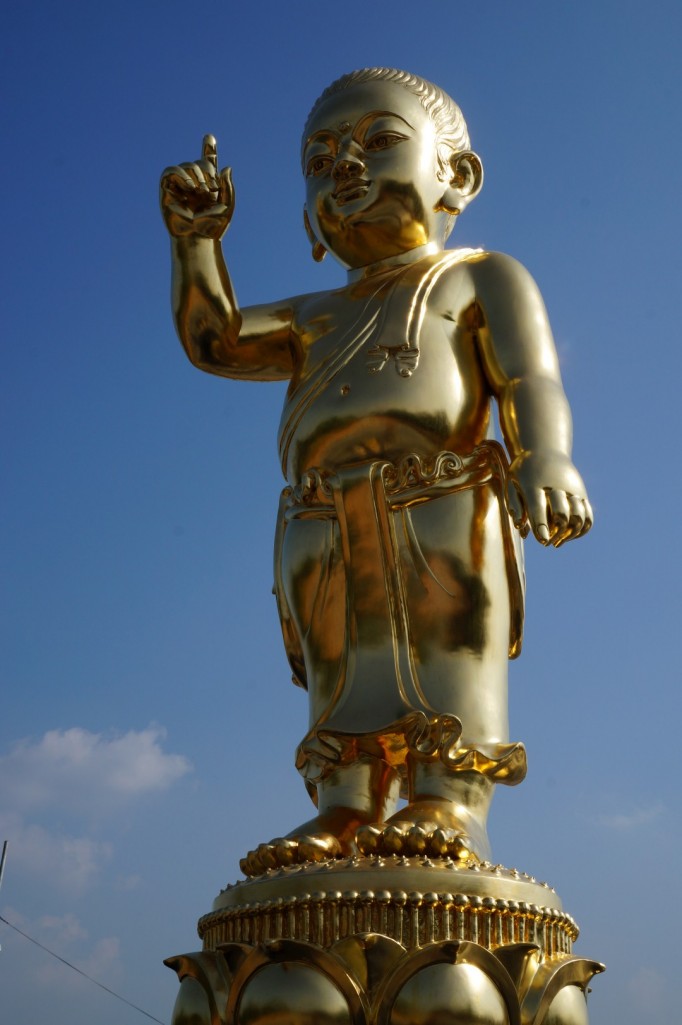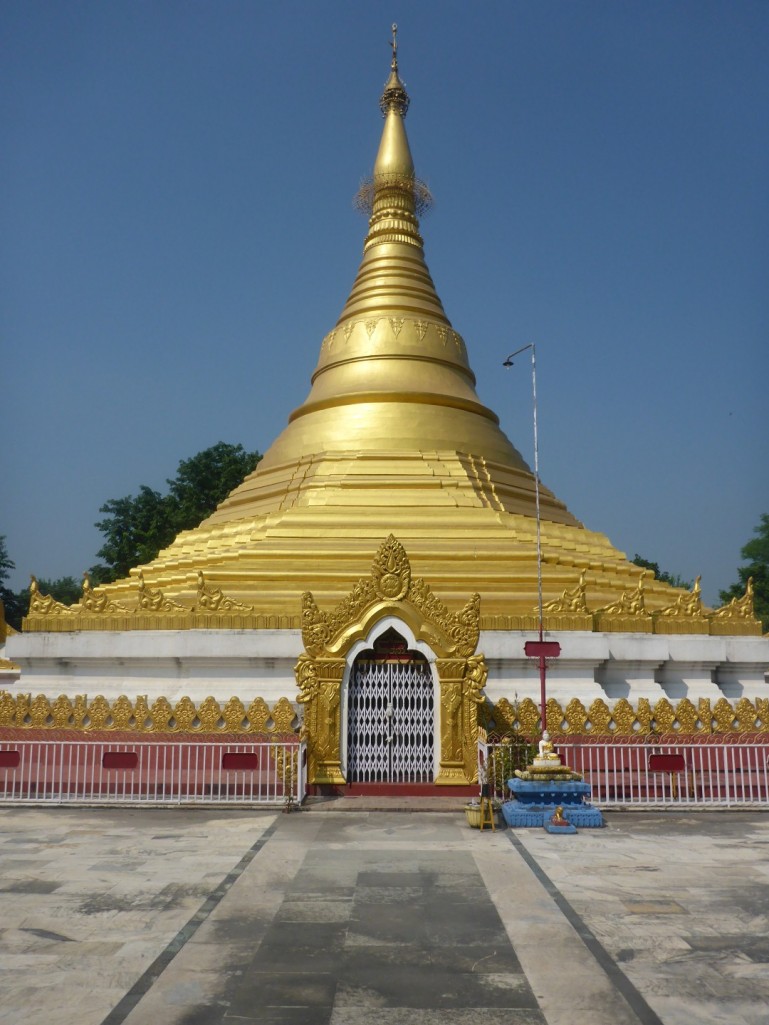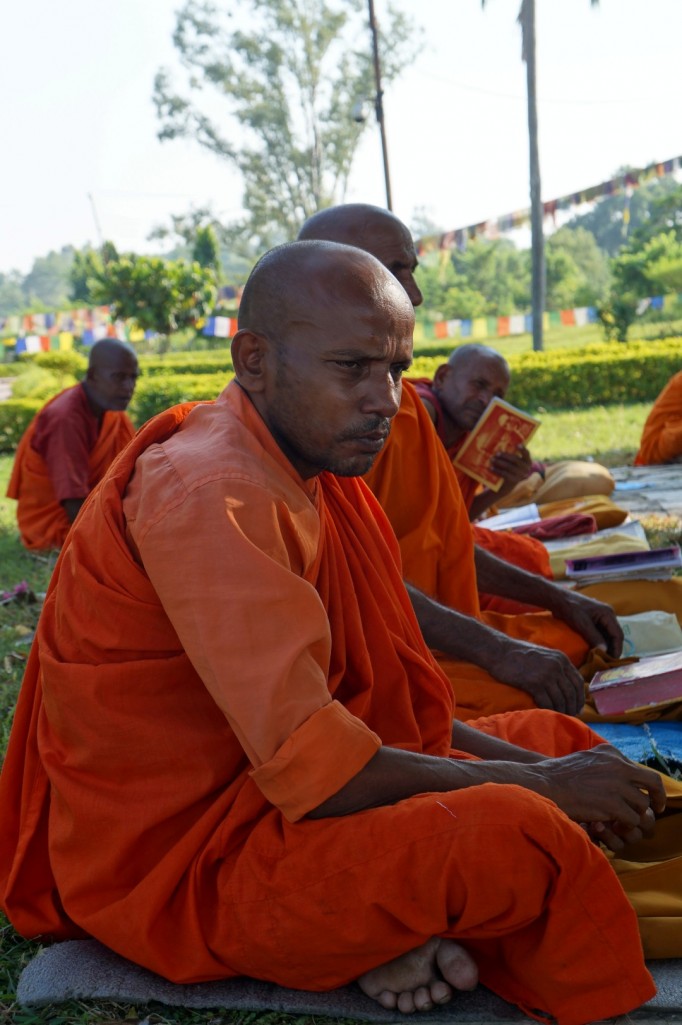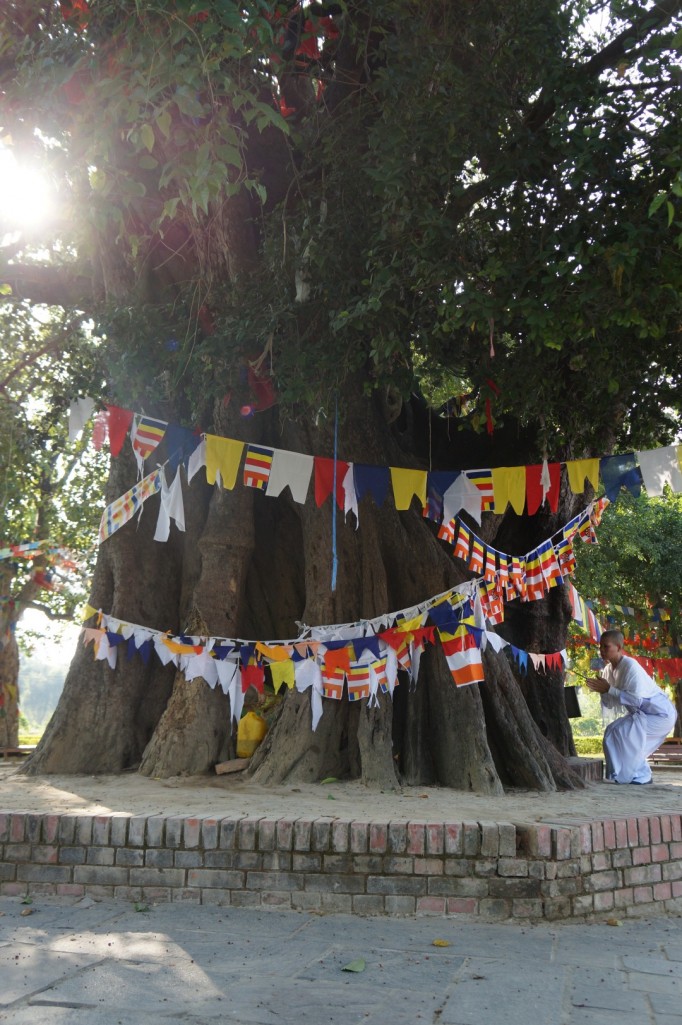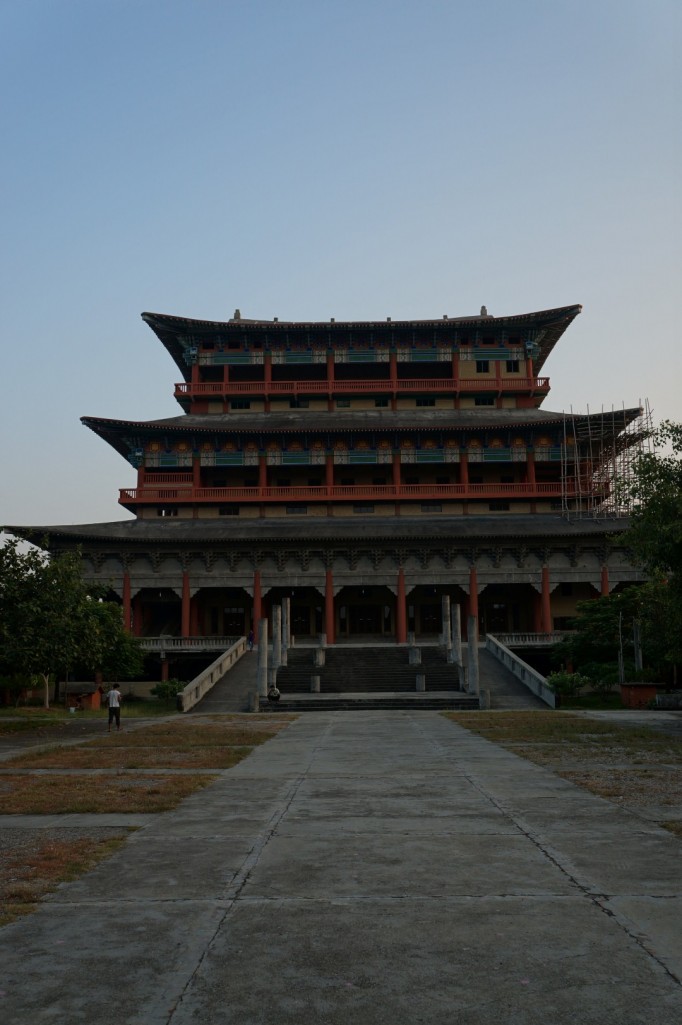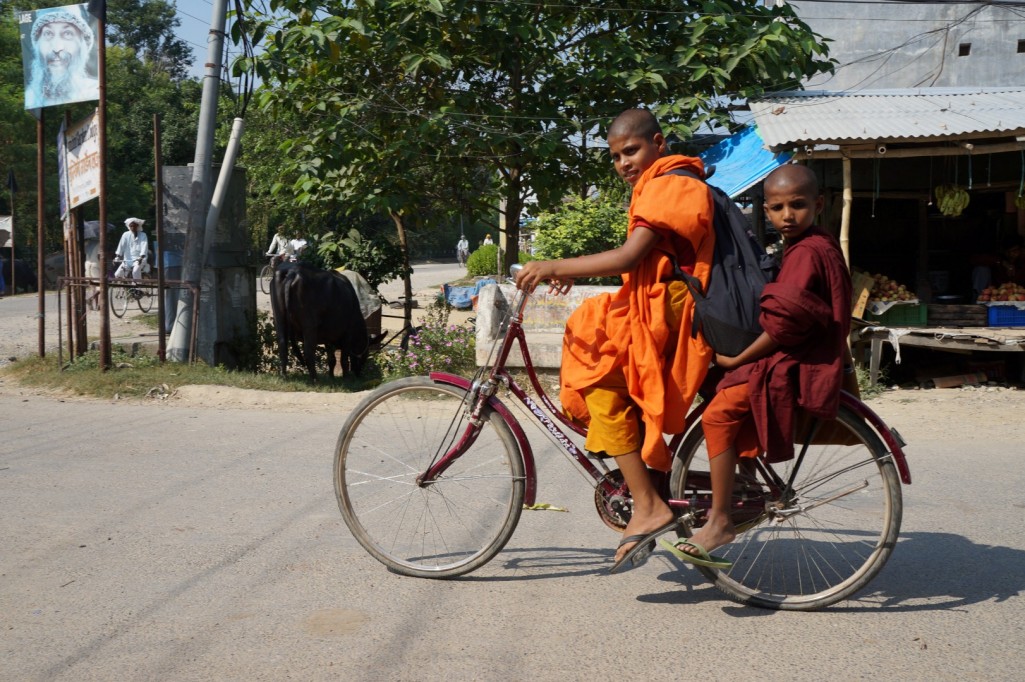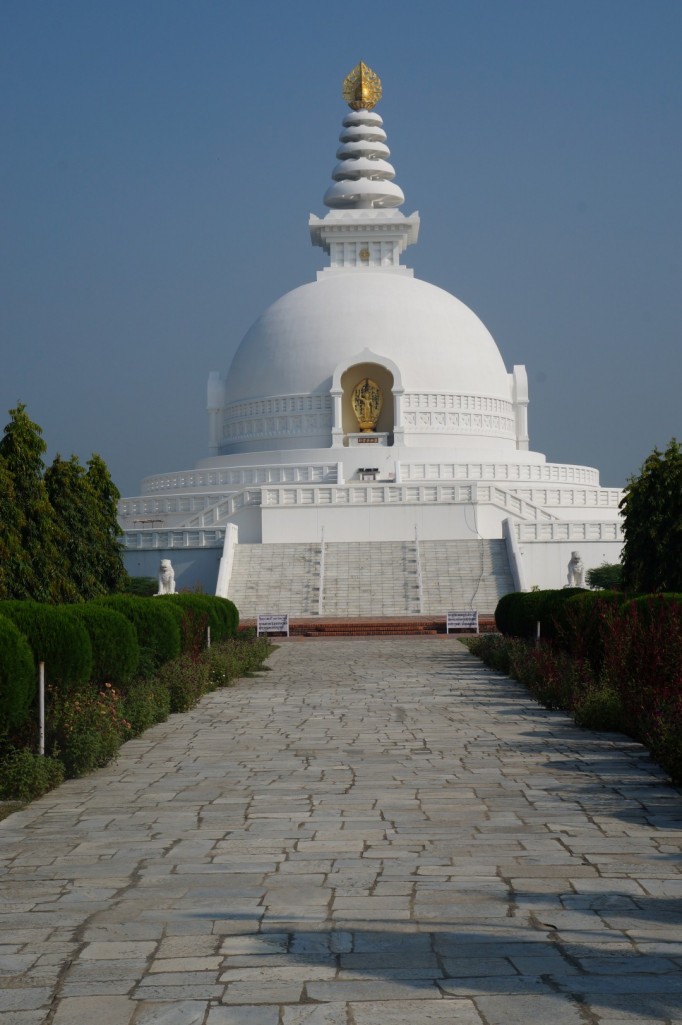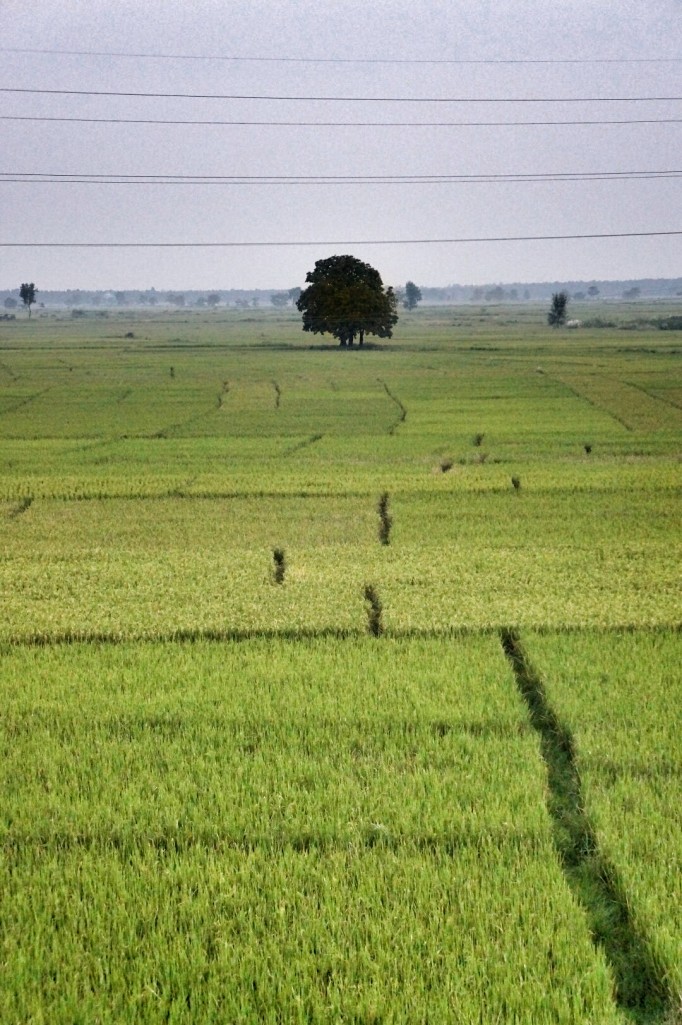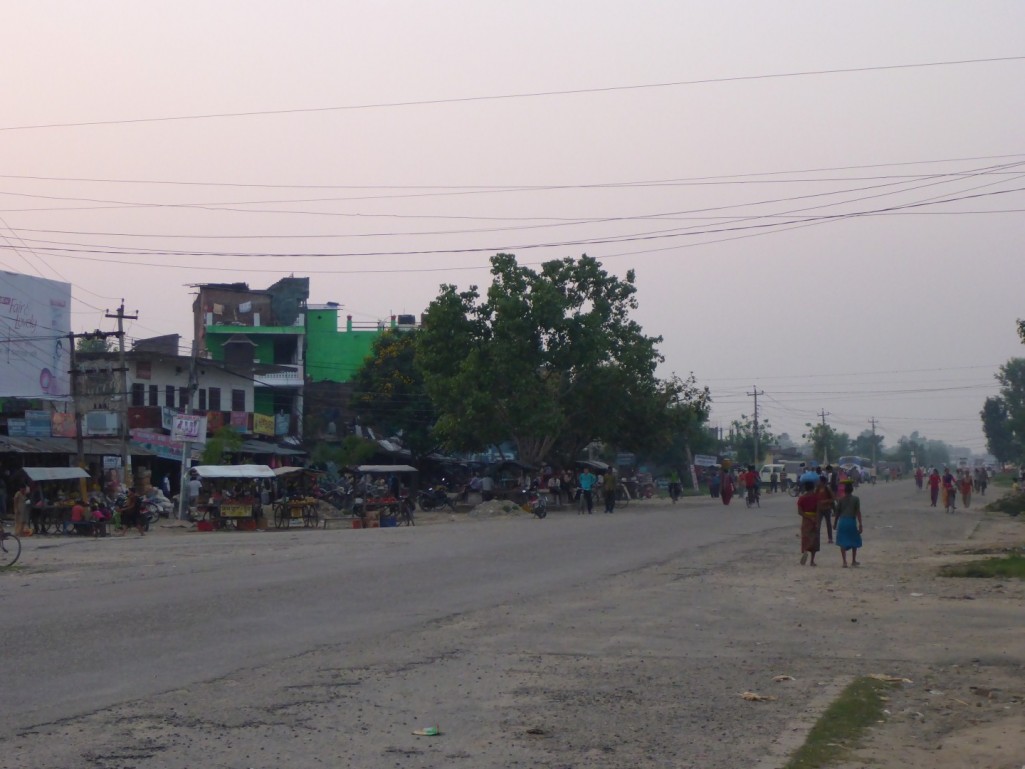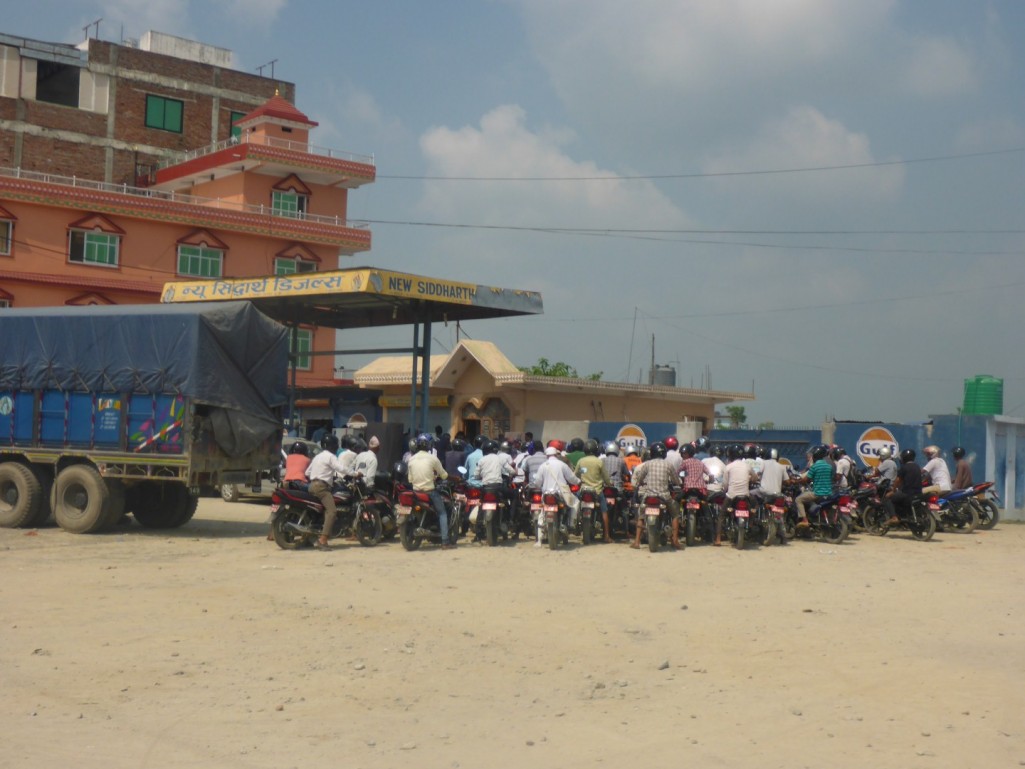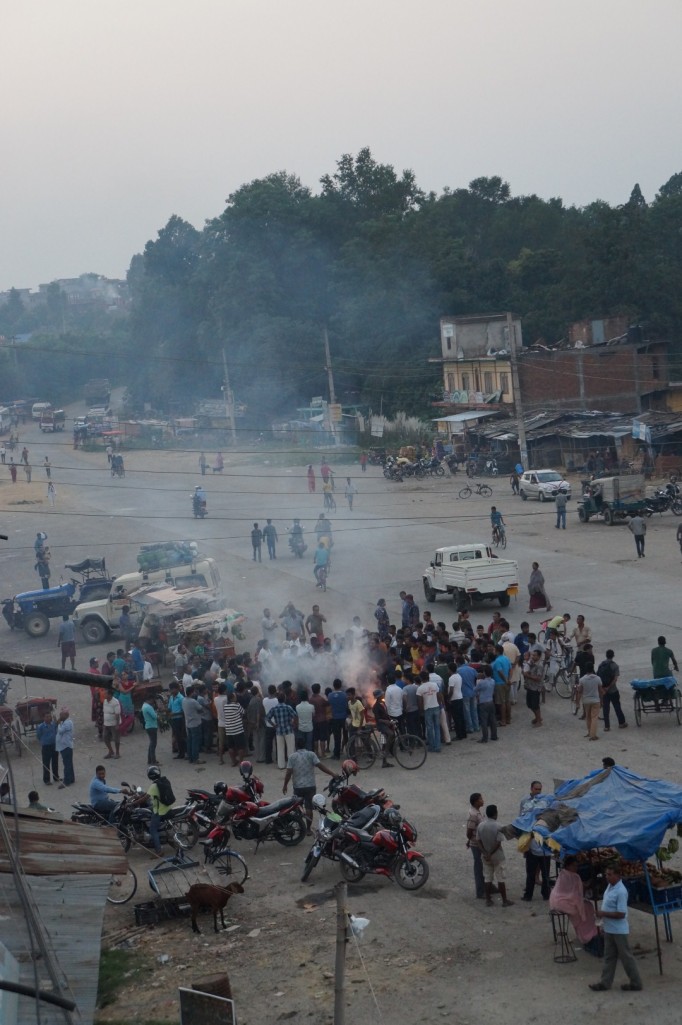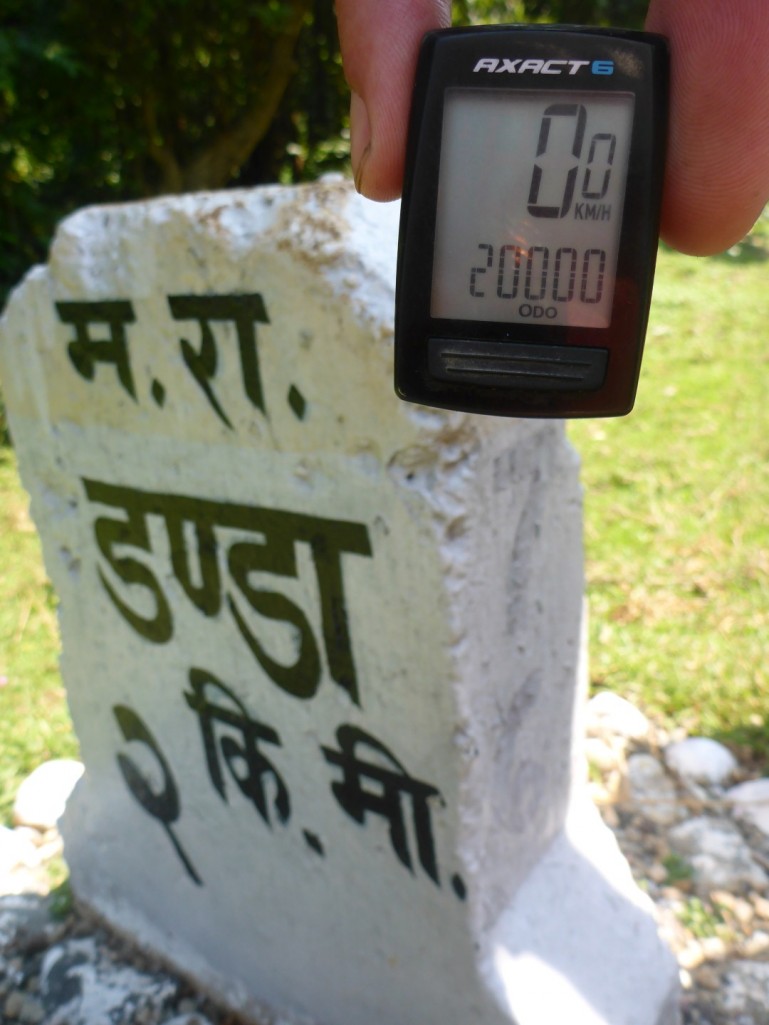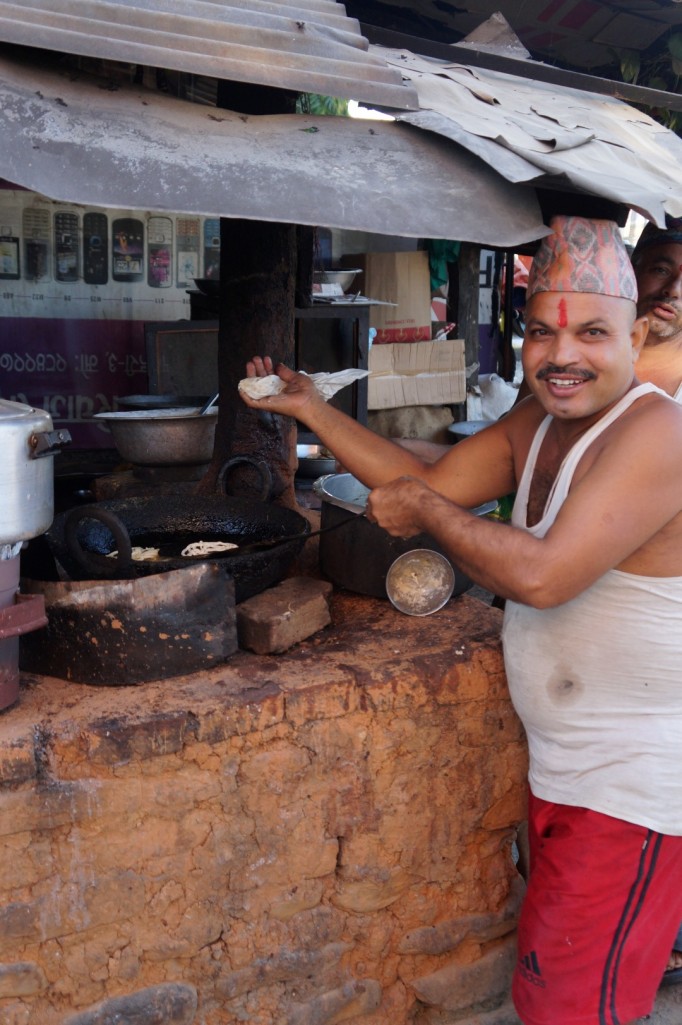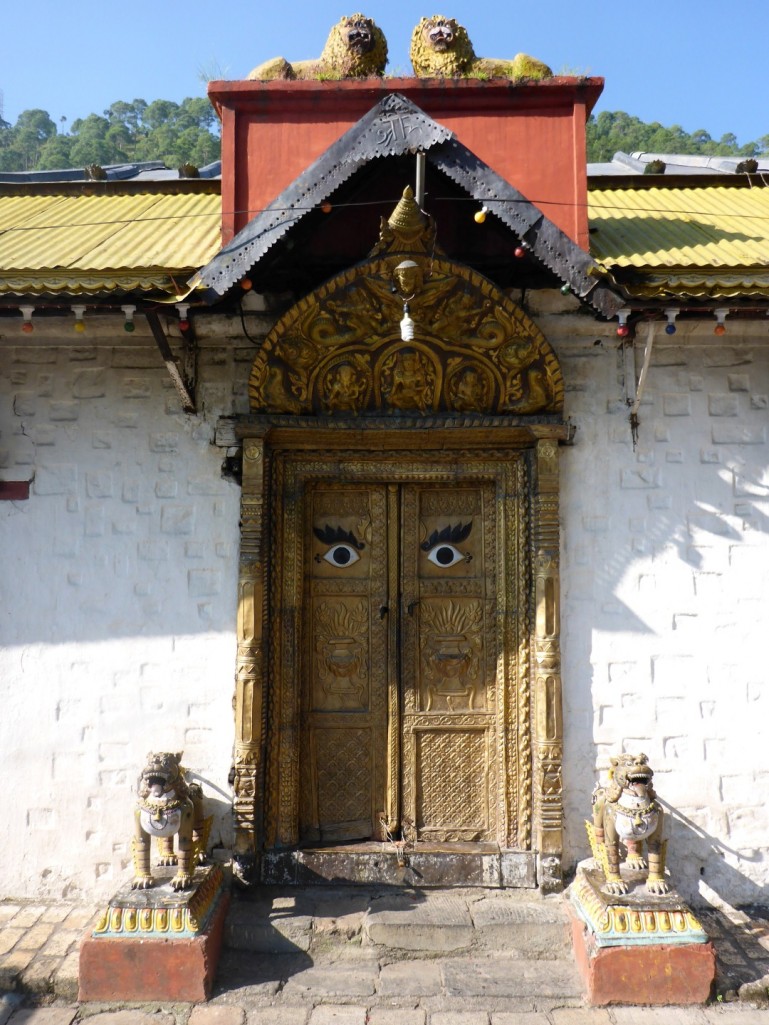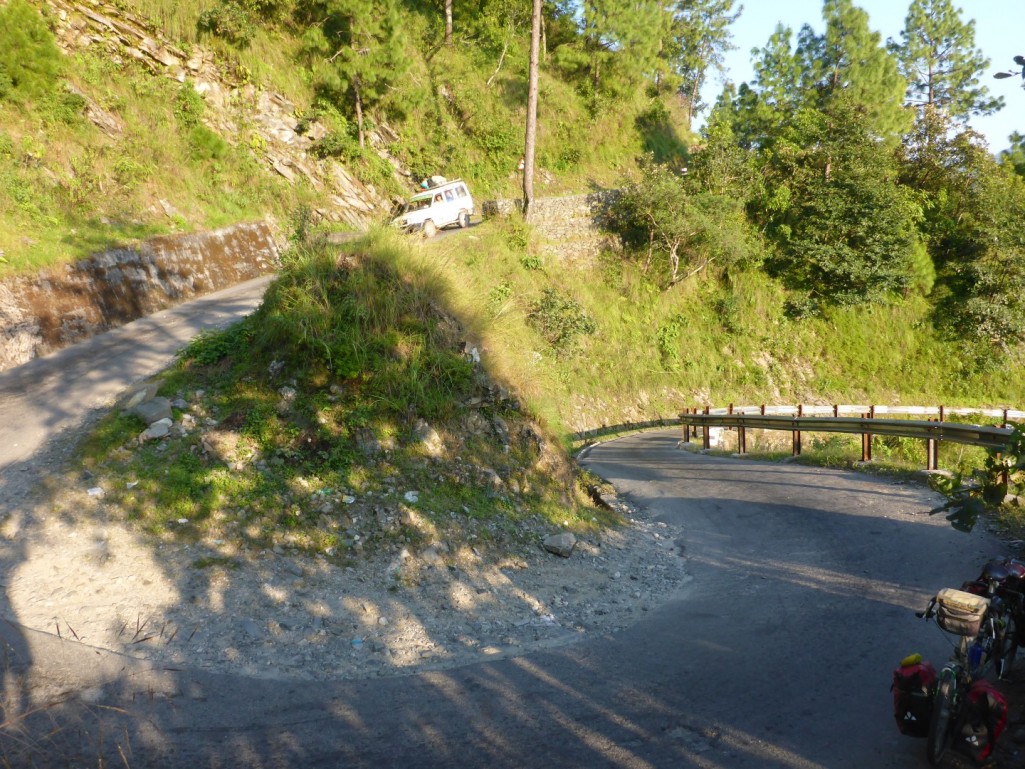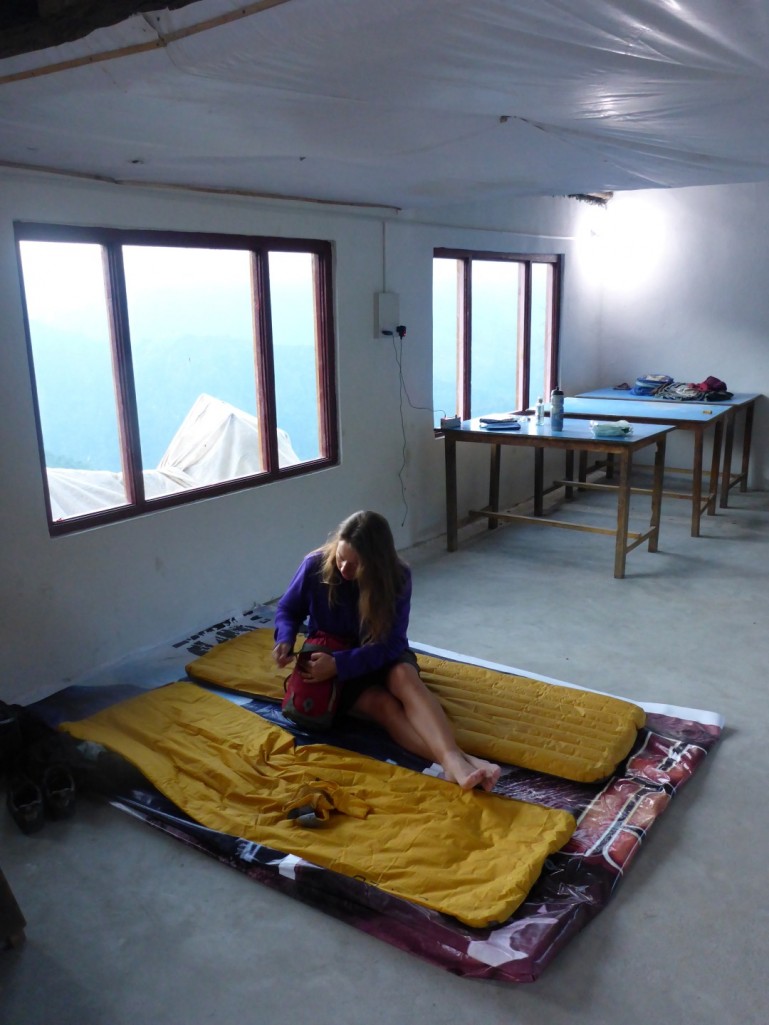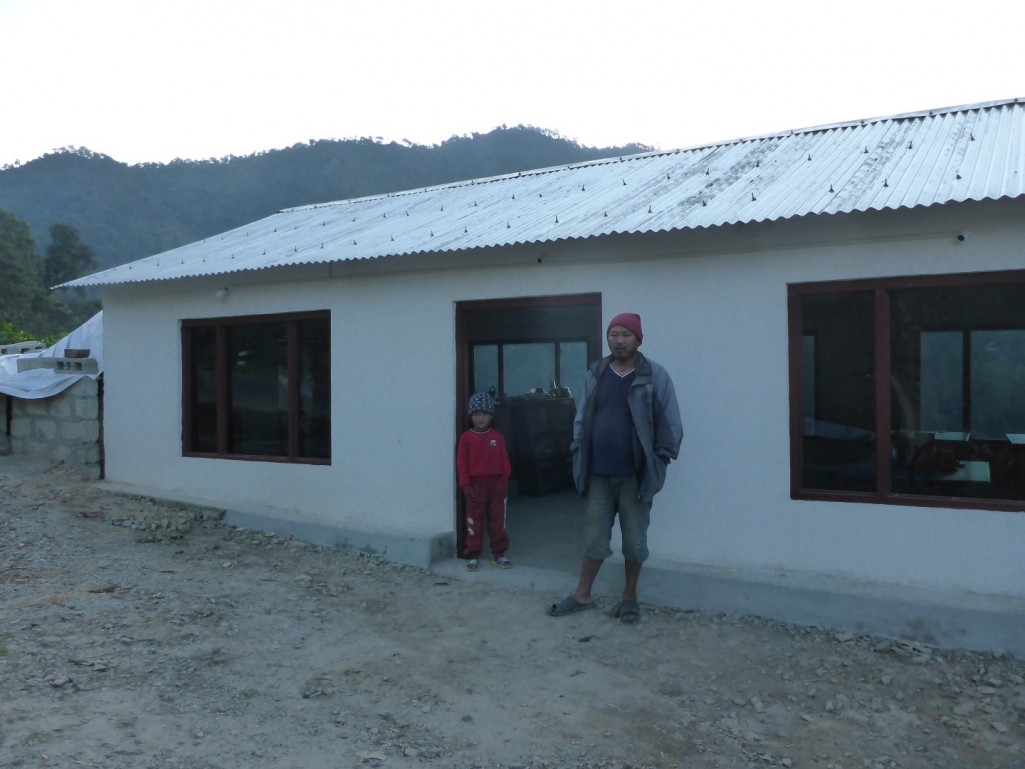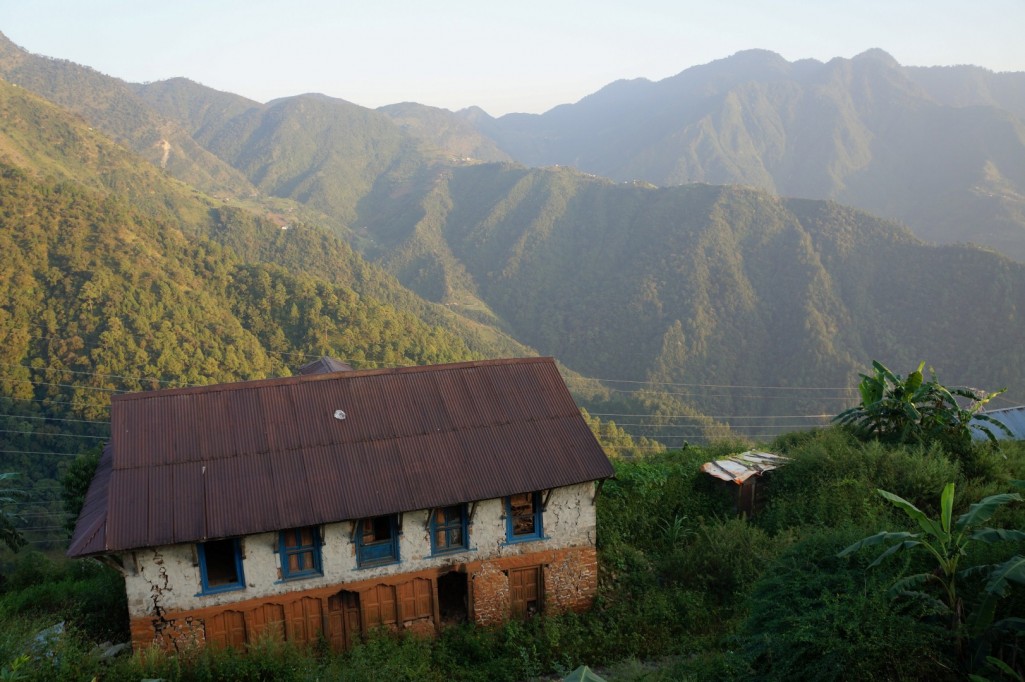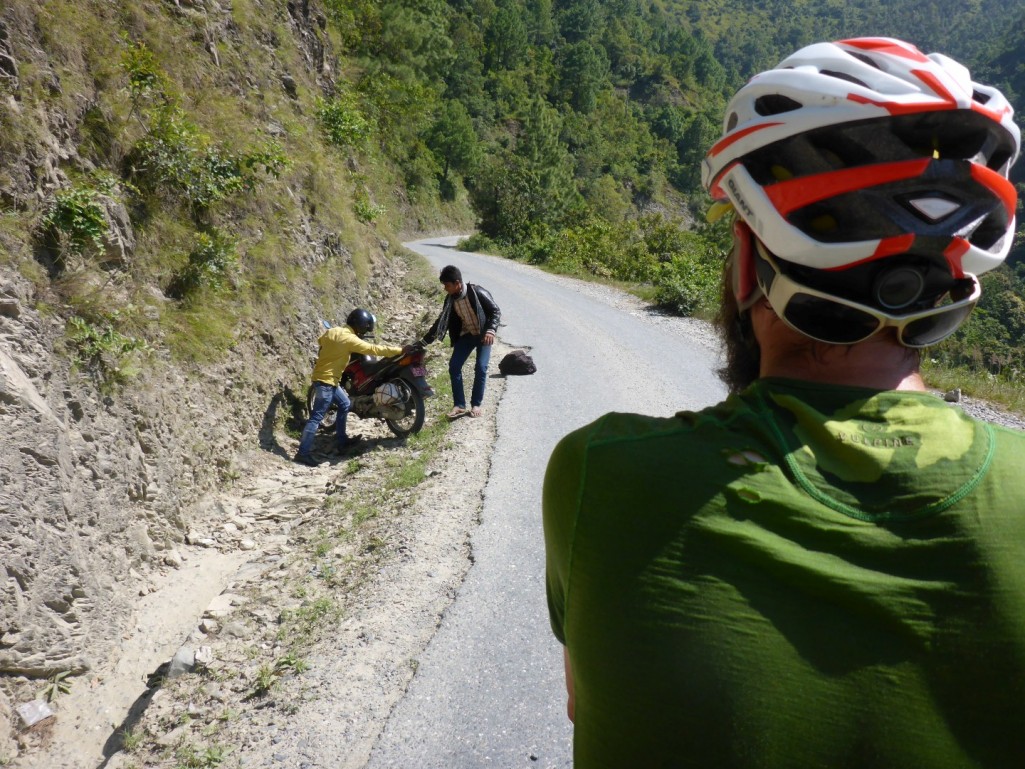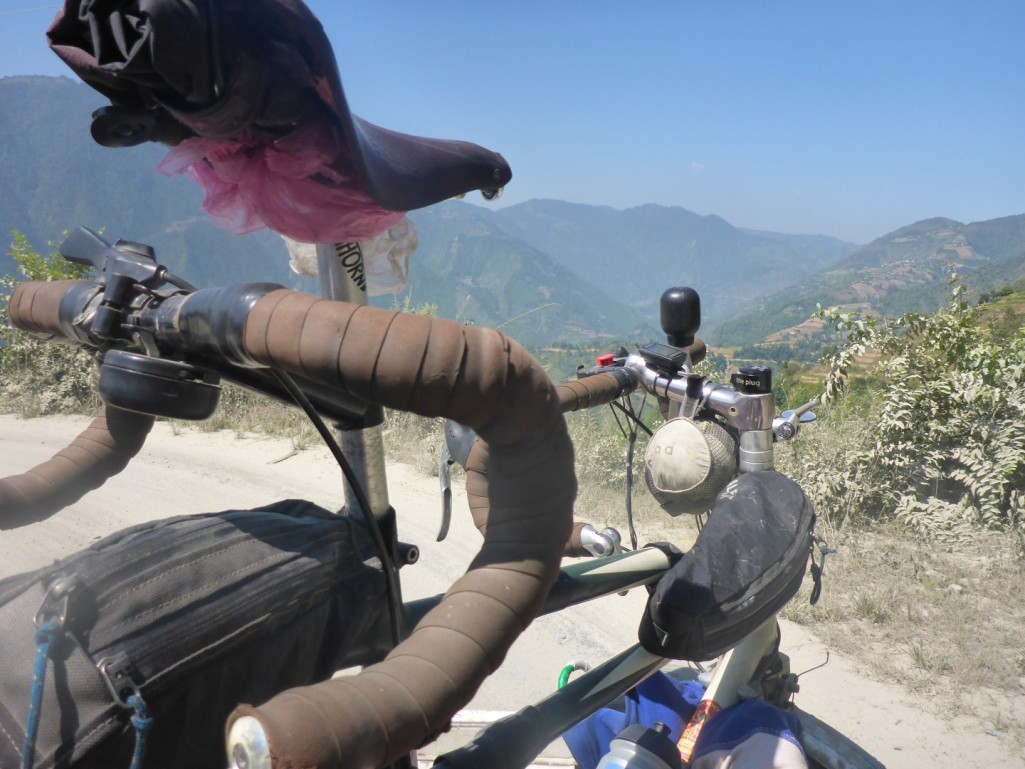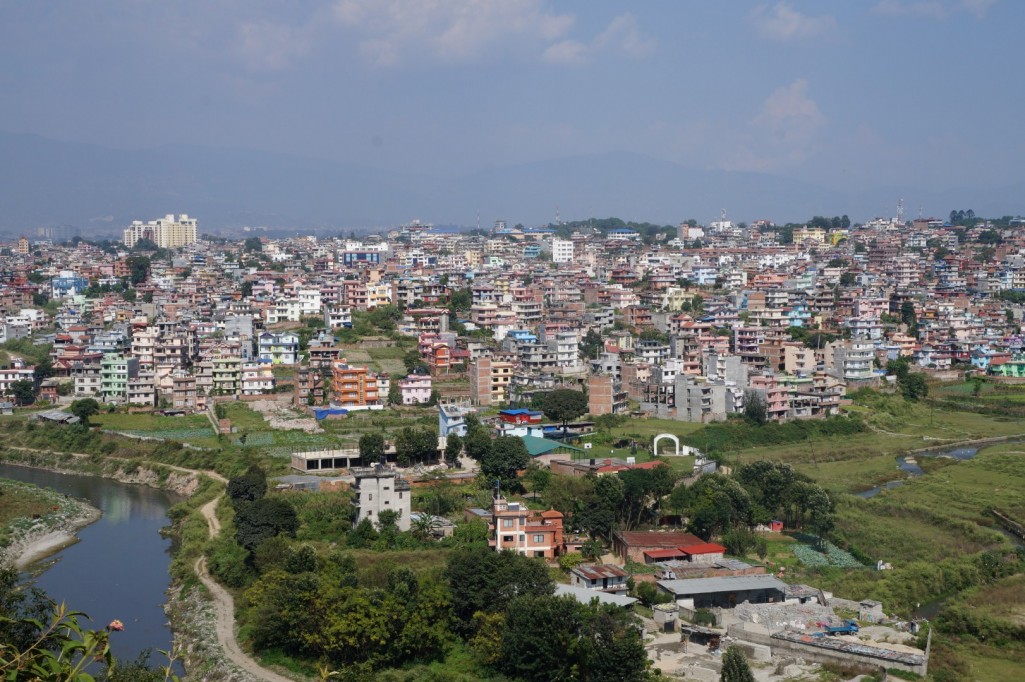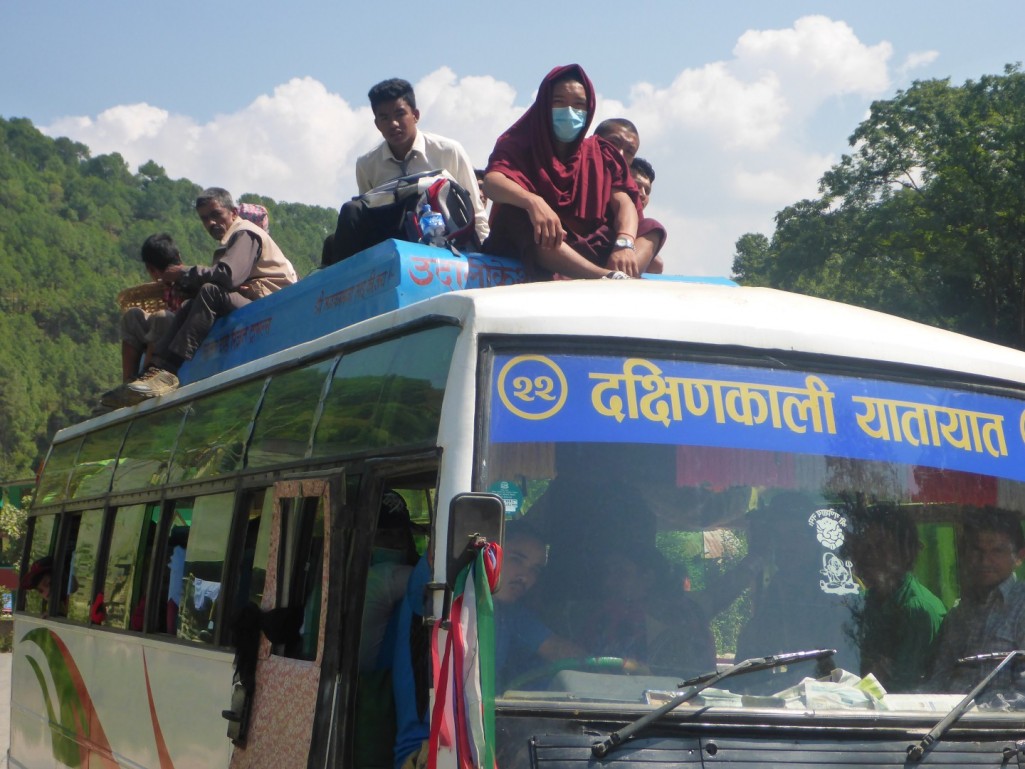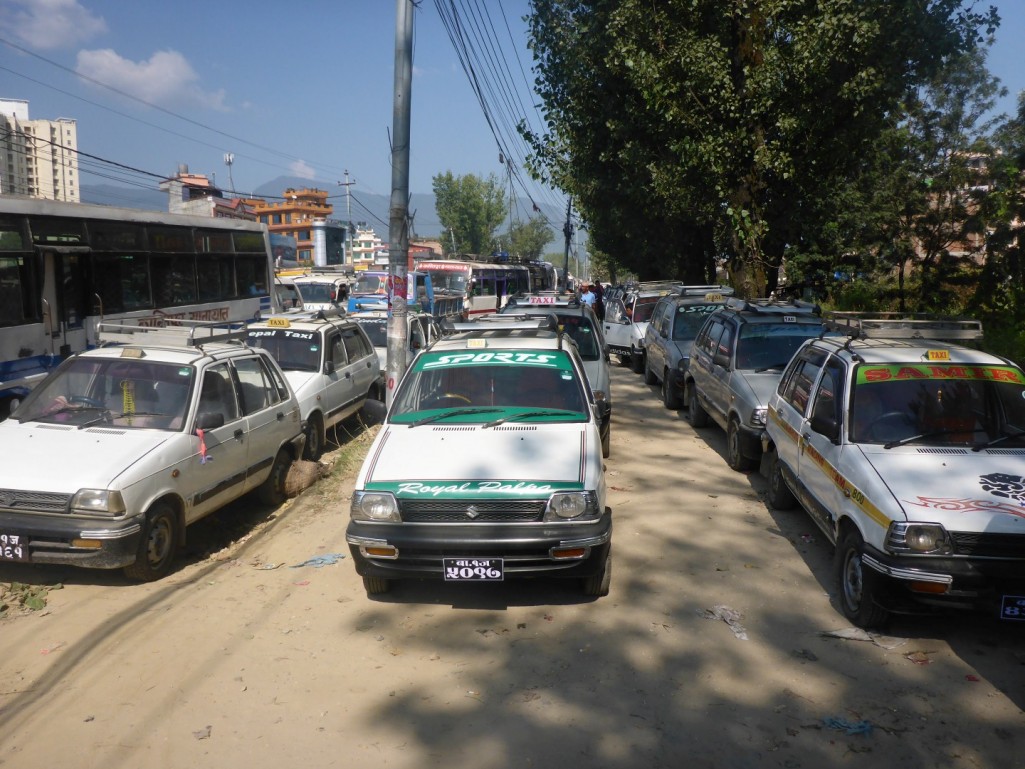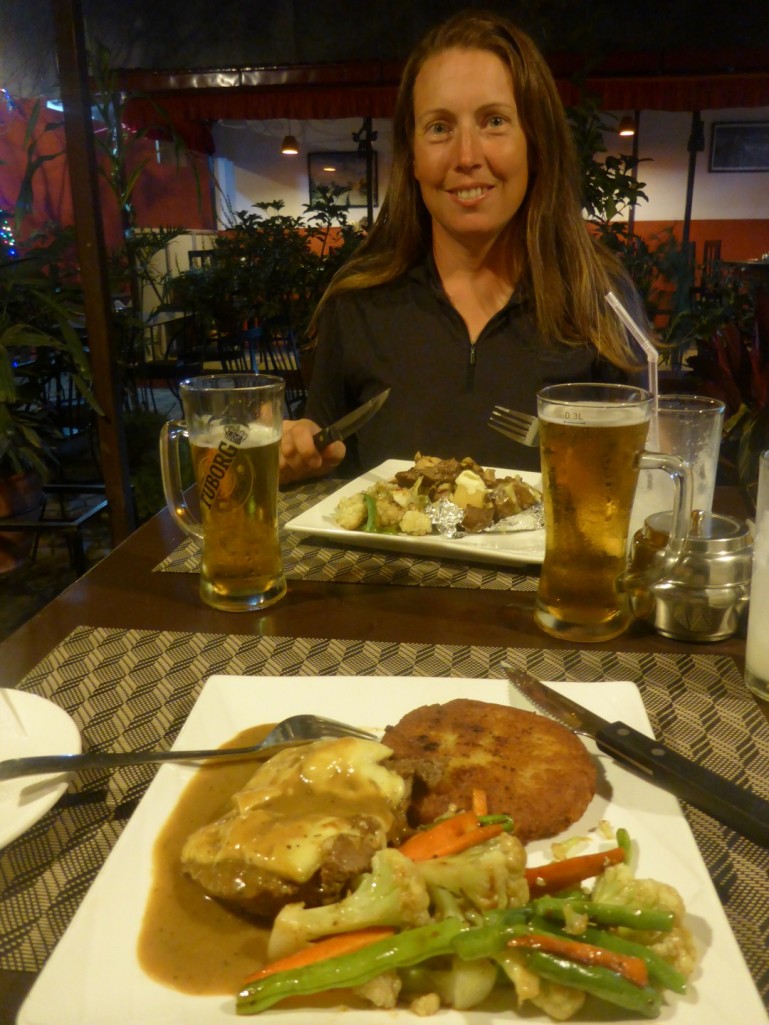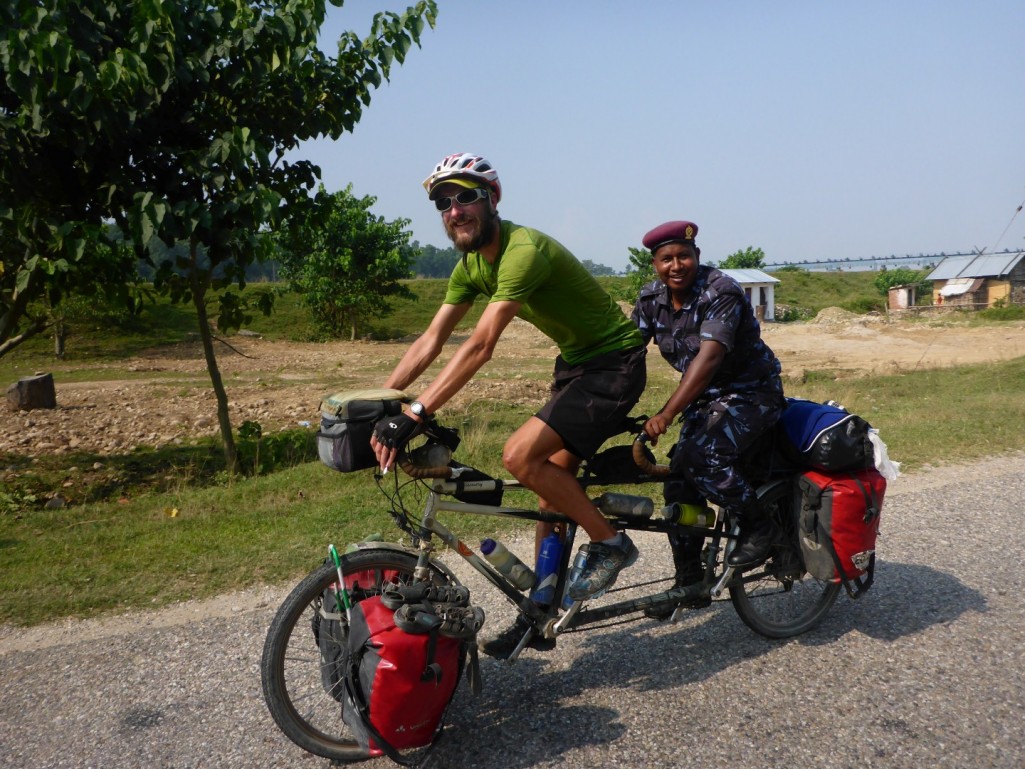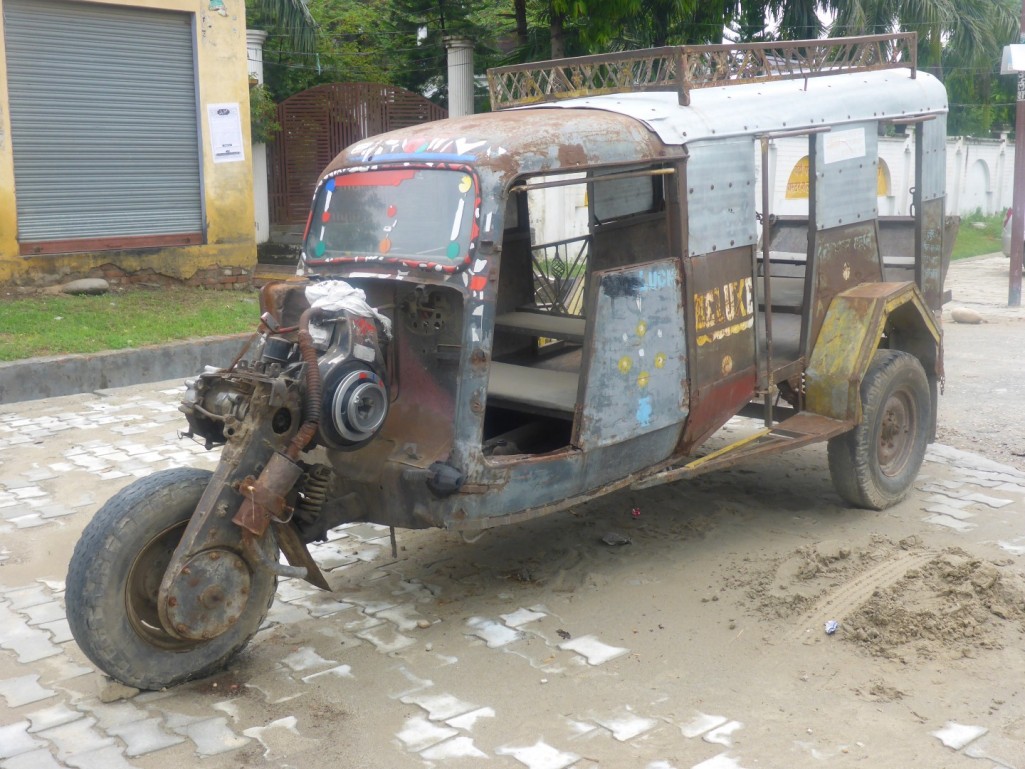Escape from Kathmandu / A Short Walk in the Annapurna Sanctuary

Sometimes what seems to be a small decision can have a big impact. Sitting in a roadside stall in a small Indian town called Nagina that happened to have WiFi, I was trying to arrange postage of our next parcel of parts with my brother via a WhatsApp call. All the couriers that he’d spoken to refused to deliver to the post office box address in Kathmandu that we’d been given by a friend of a friend and we were running short on time to get things sorted out. In the end we elected to use Royal Mail, split the parts into two packages to meet their International Service weight limit and hope that the estimated minimum delivery time of 5 days would be correct. This decision would cost us nearly four weeks.
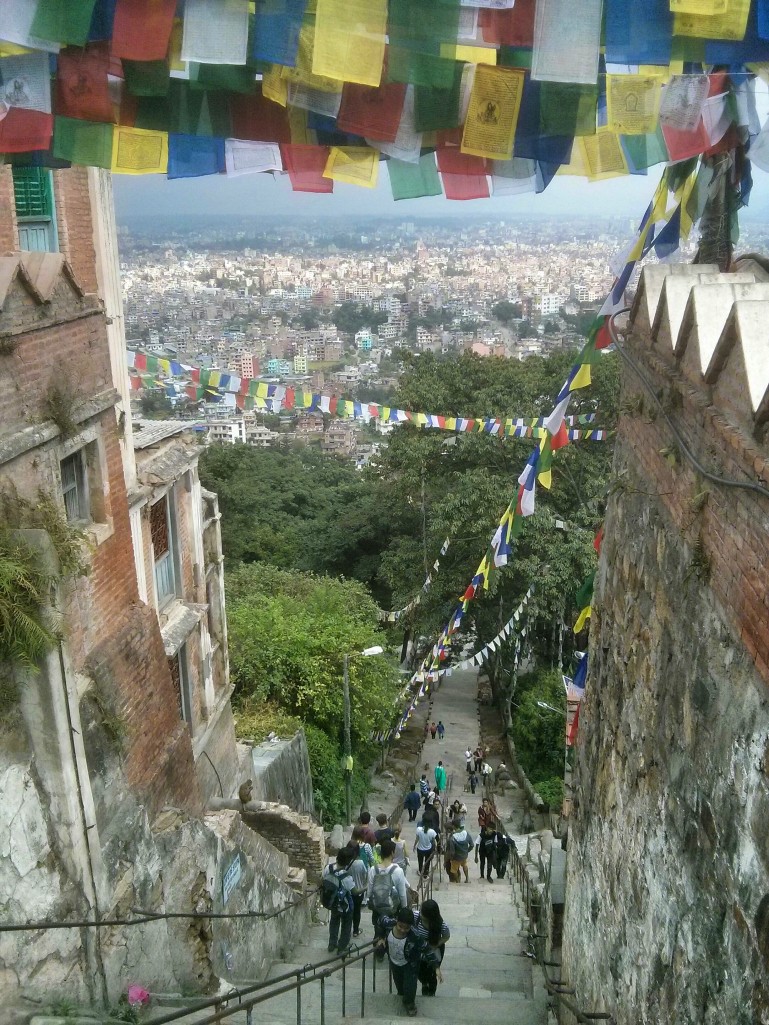
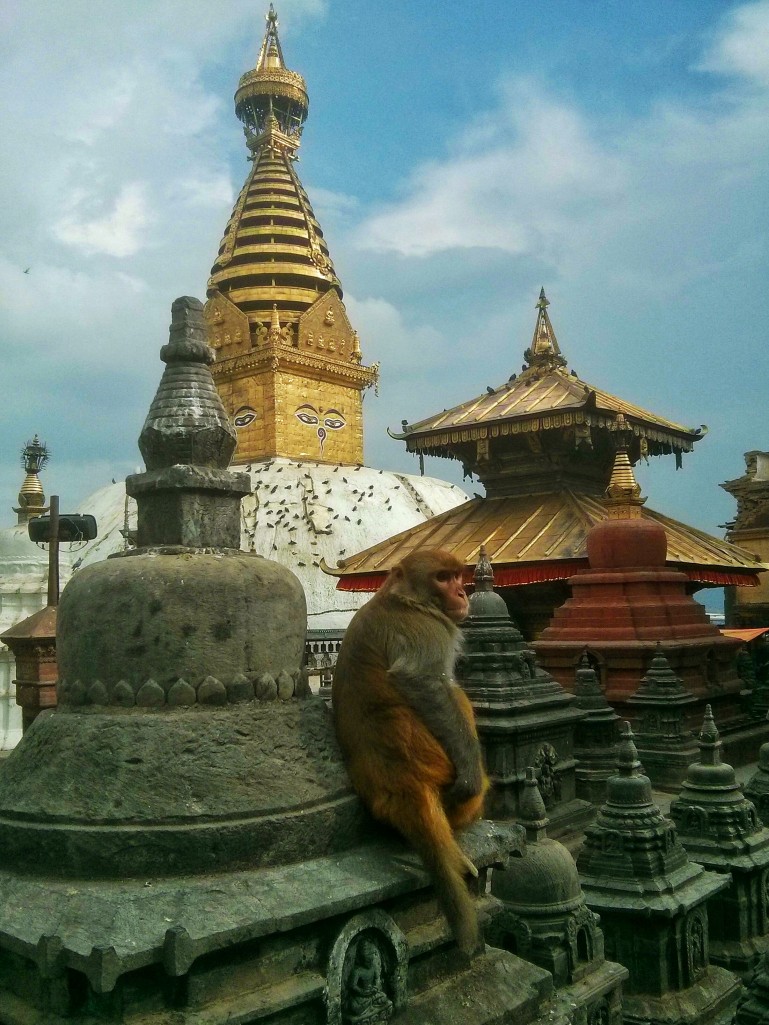
6th October 2015 – 1st November 2015
Having arrived in Kathmandu on the 6th day after the parcel left my brother’s hands there was of course no sign of it. Not a problem as we had our other favourite city pasttime of visiting embassies to keep us occupied. If TripAdvisor included international embassies we’d be star reviewers by now. In summary our experiences were as follows:
Indian Embassy, Kathmandu
***
Convenient online application is flawed by inflexible staff at the visa processing centre. Photos have to be the correct size to the nearest mm, forms must be filled out in intricate detail and you must have exactly the correct cash to pay the non-refundable fee. The price for UK citizens is very high ($140 each) and the 7 day wait also spoils the experience. An additional letter was required to be able to get a triple entry visa instead of the standard single entry.
[We needed new visas as we’d spent longer than planned in Himachal while Kirsty recovered leaving too little time to get across to Myanmar. Tourist visas can’t be extended either, even if you ask nicely]
Bangladeshi Embassy, Kathmandu
*
Only open from 9am to 12pm. Can’t issue visas for travellers using land borders, only those arriving at an airport. Despite their own website claiming buying a visa on arrival is possible at all land borders they in fact could only tell us we could get it from Benepol, some 500km out of our way. We waited over an hour to be told all of this and left empty-handed. [We later decided to skip Bangladesh all together after two terrorist attacks, targeting non-Asians and claimed by ISIS put the country on high alert. Our friends Pete and Josh cycled through with a police escort with sirens blaring making the experience highly stressful and less than enjoyable.]
Myanmar Embassy, Kathmandu
****
Loses a star only because of its location which is at the top of a steep hill and nowhere near the point on Google Maps where it claims to be. Other than this, the staff were friendly, efficient and issued our 28 day visas the day after we handed in our applications and $20 fee. [From others’ experiences Kathmandu seems to be much easier than Delhi for getting a Myanmar visa].

Many people will remember the footage shot in Kathmandu immediately after the earthquakes in April. The impression given was of widespread devastation in the capital and we’d braced ourselves expecting to see lots of evidence of the damage. In reality the buildings that were affected seem to be in localised areas with the majority of the city apparently unharmed. Sadly it’s a lot of the historical structures that were hit hardest. The main Durbar Square has huge piles of rubble in place of temples that had stood for hundreds of years. Gaping cracks have opened up on walls and you have to dodge timber supports that are propping up some precarious repair work in several streets.

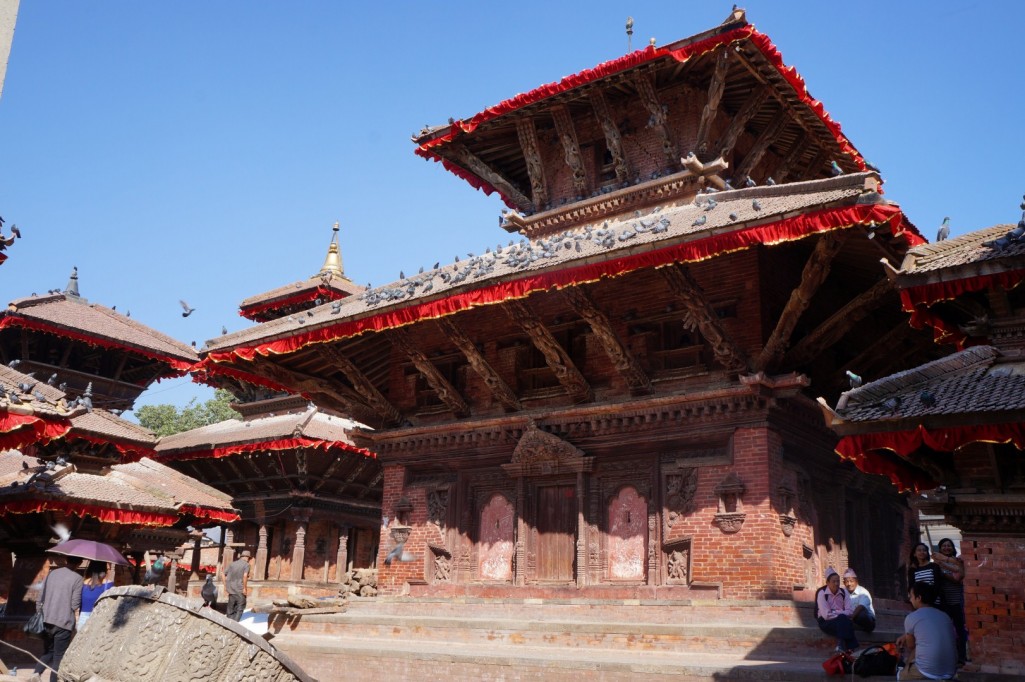
One of the saddest sights is the Boudhanath Stupa, one of the landmarks of the city and the one of largest Buddhist stupas in the world. The ‘quake didn’t destroy it but caused enough damage to make the towering top section with its iconic Buddha eyes so unstable that it has had to be dismantled. One day it’ll be rebuilt, but not without a lot of hard work and with the need for a lot of funding.
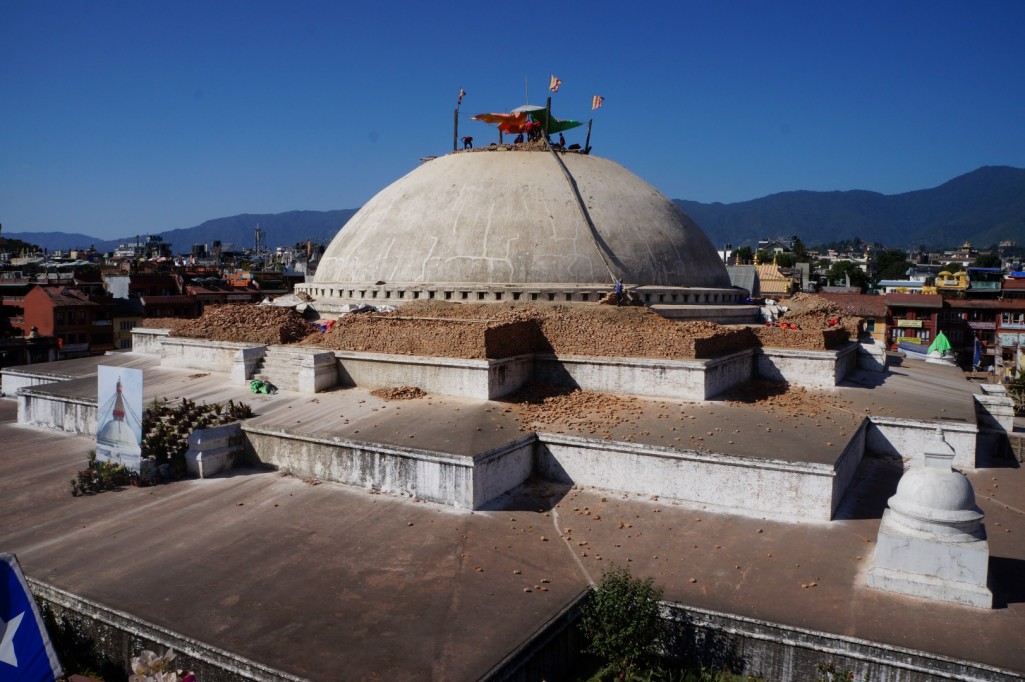
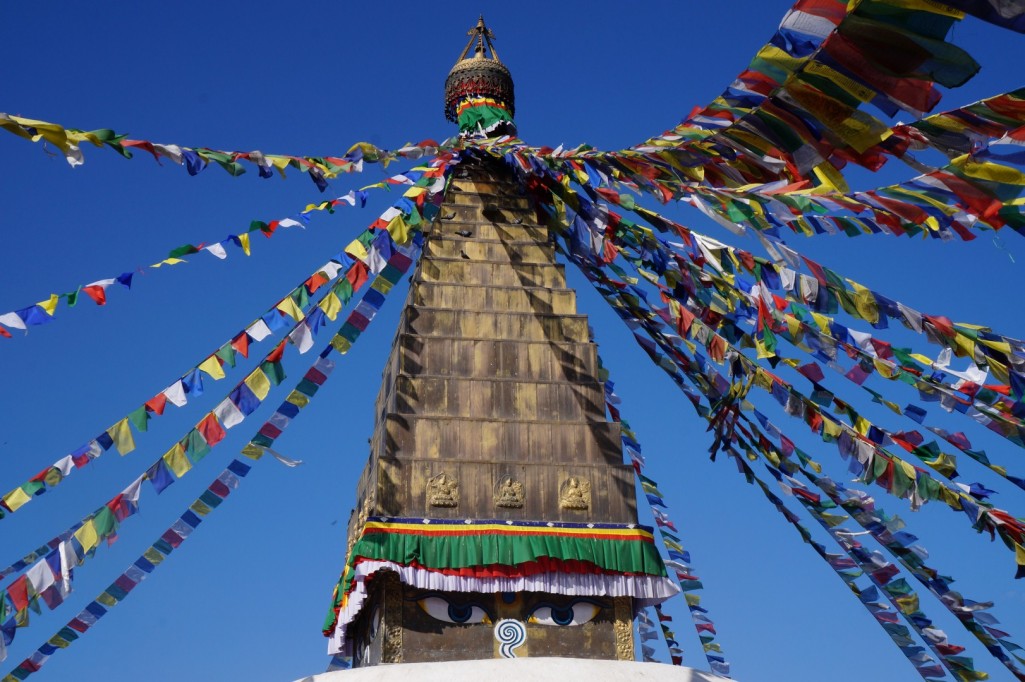
There are many NGOs and charities working in Nepal which means there is a busy expat community. This also means there is a popular Hash House Harriers running club: The Himalayan Hash House Harriers. I join them for the weekly outing that takes us on a fantastic route on the southern outskirts of the city, across streams, up hills and through rural suburbs. Two wiry Nepalese set the pace at the front and are uncatchable on the climbs. During the customary ‘refreshments’ after the run I chat to a few of the other members from Poland, Italy, Germany, England and Australia. All of them either working for various aid agencies or studying crisis management.
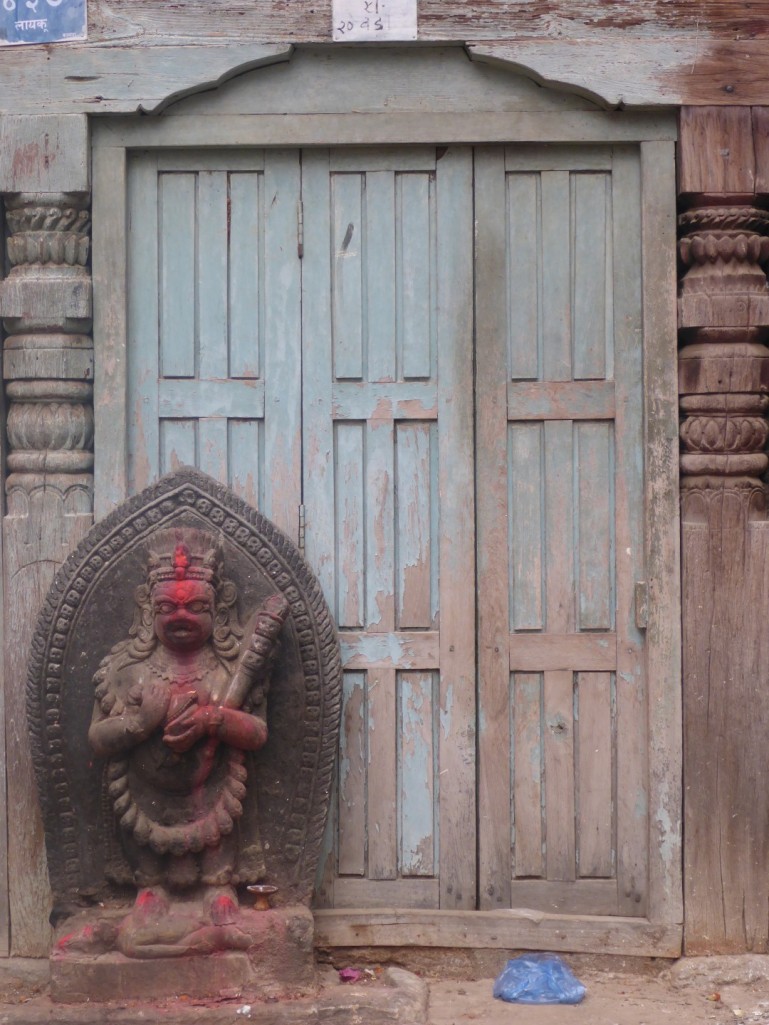
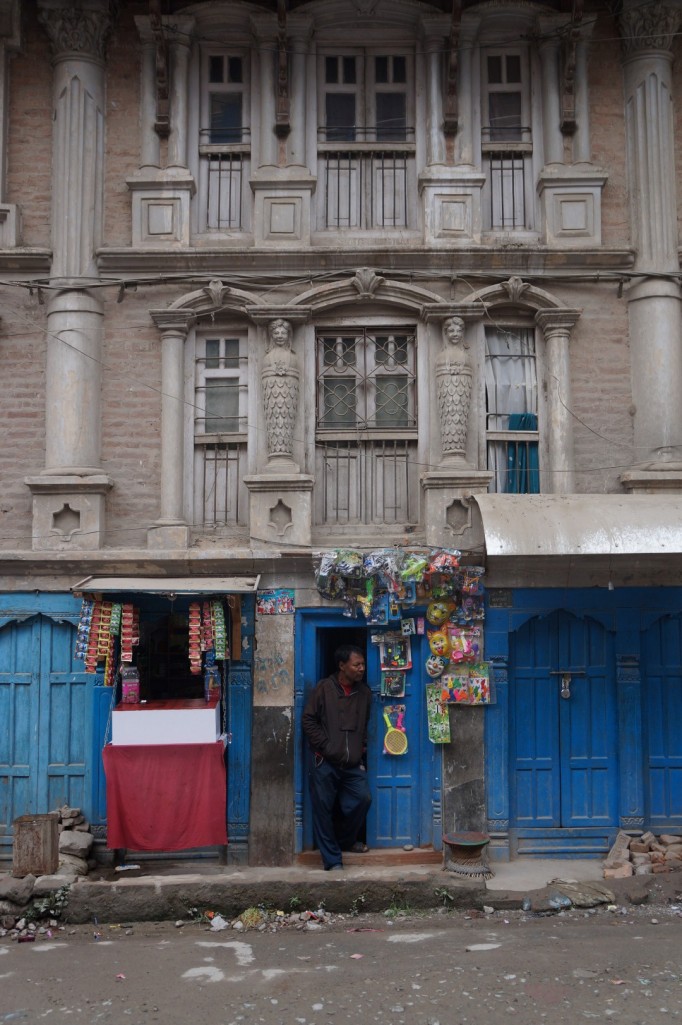
Although the earthquake was 6 months ago there are still hundreds of people living in tents or sharing the homes of friends and family. It’s a massive task to build more permanent shelters but with winter fast approaching it needs to be done quickly. Unfortunately the fuel crisis has put a halt to the effort as there are now not enough vehicles to transport material out to the remote areas worst affected. Container loads of supplies are also stuck at the border, unable to cross due to the restrictions put in place by the Indian Government. A lot of people see this as a bigger crisis than the earthquake itself given that the whole country is affected and the overall impact on businesses and ultimately the lives of those who might have to spend a cold winter in a polythene tent is yet to be seen.
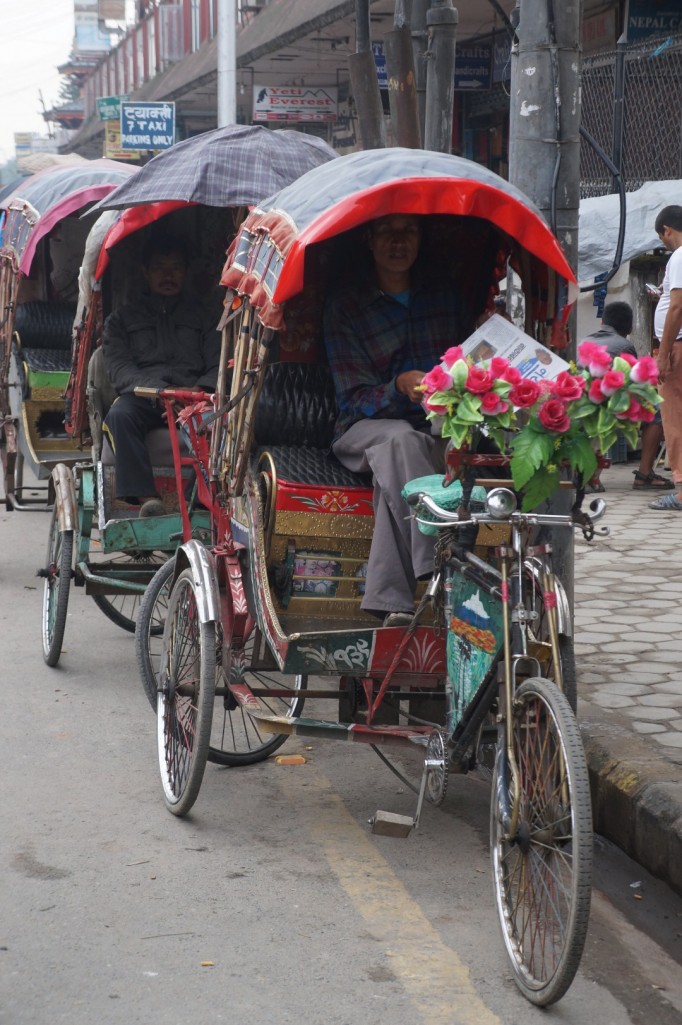
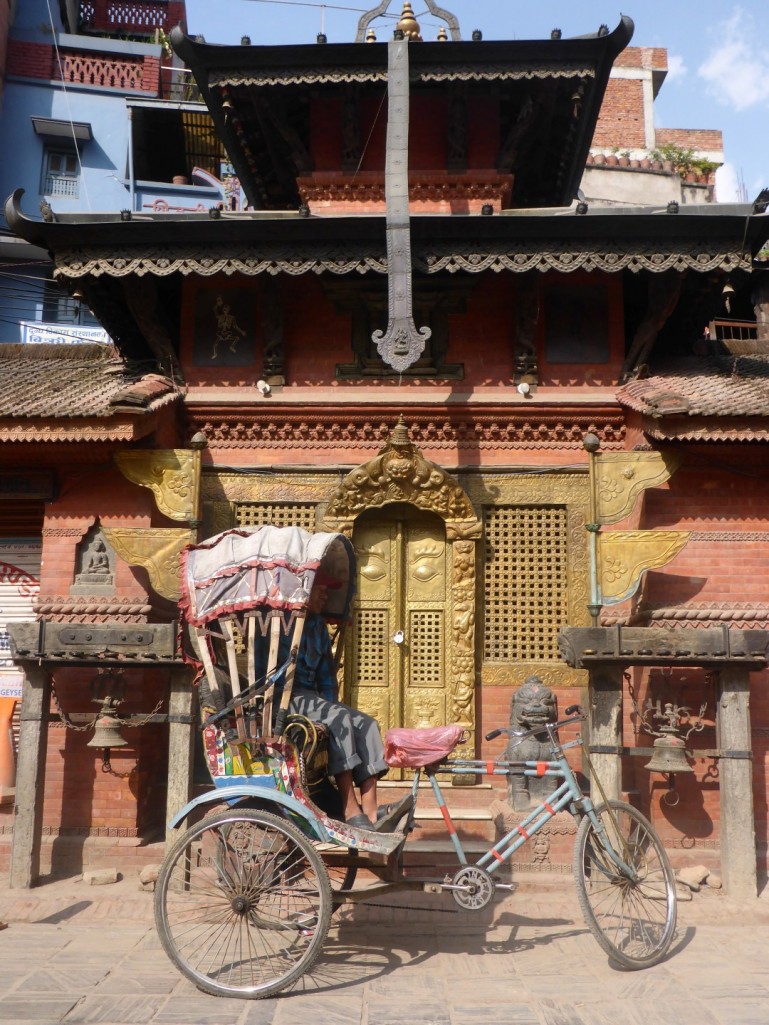
During our prolonged stay a new Prime Minister is elected and also their first female President but there seems to be no end in sight for the constitutional dispute. Meanwhile we watch shutters close on dhabas and cafes that have run out of cooking gas, taxi fares double or triple due to black market fuel prices and the number of tourists is a fraction of what it should be during the peak season.
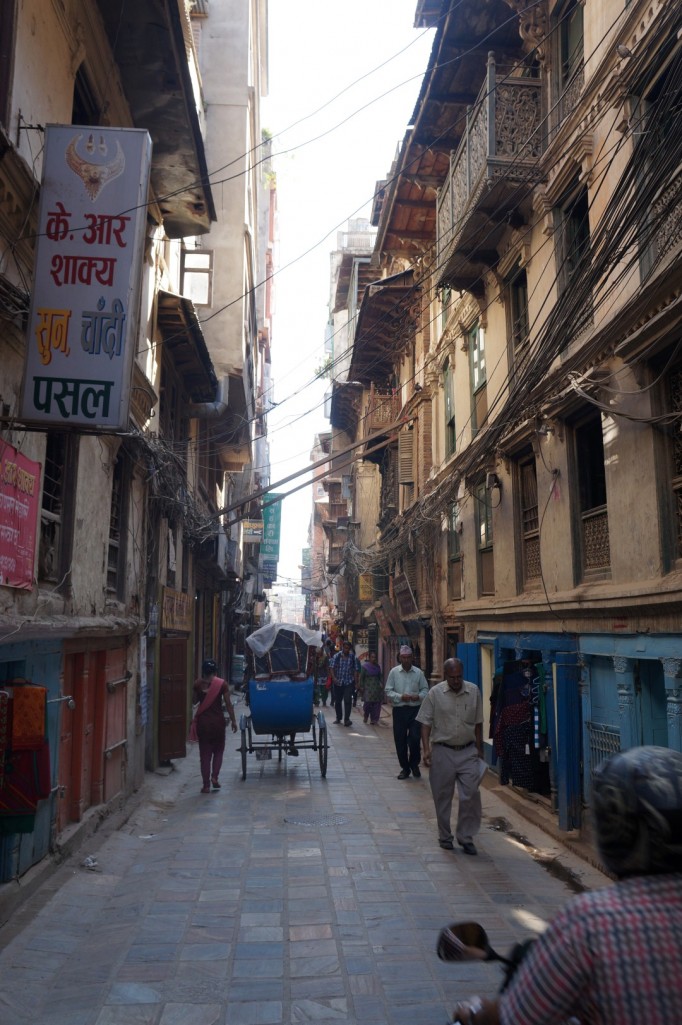
We do our bit by supporting the restaurants that are still open as frequently as possible. We spend a morning with Social Tours learning how to make momos and then sampling our handiwork. Another morning is spent at a yoga class discovering just how inflexible it’s possible to get after cycling for so long and not stretching once.
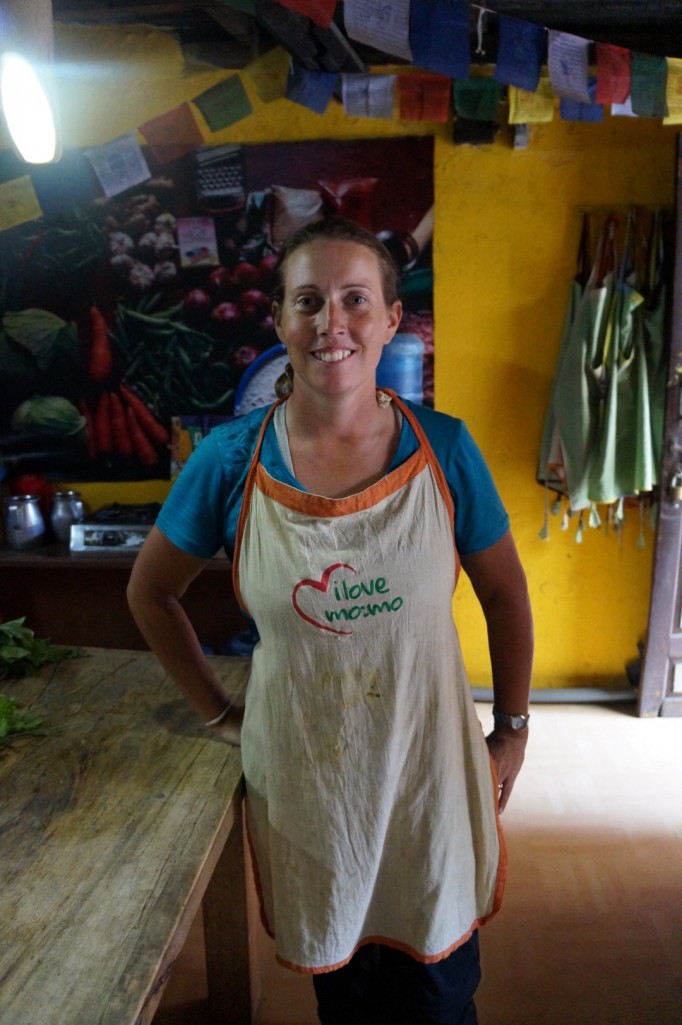

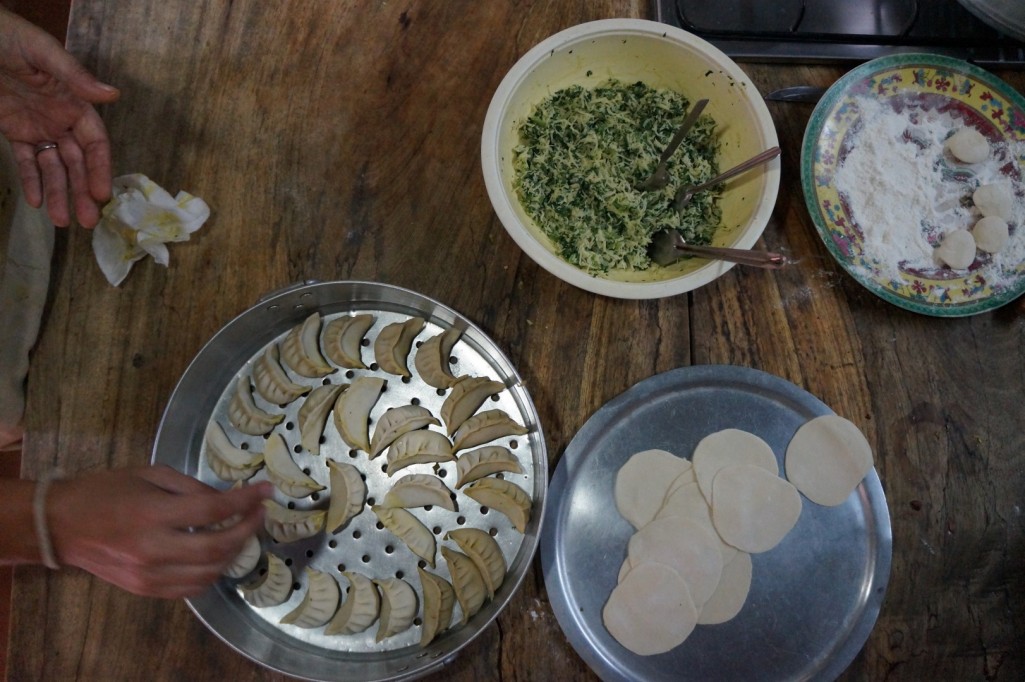
A few of the tour companies have been plugging a social media campaign to encourage visitors back to Nepal. Tourism is by far the biggest source of income in the country so it’s vital that people realise that, despite the earthquakes everything is open for business. They want us to spread the message and encourage you to take a trip to #NEPALnow!

After 10 days waiting (16 since it left the UK) there’s still no sign of the parcel so it’s time for an excursion to help pass the time. We board a bus for the next biggest city, Pokhara with a couple of rucksacks and a map in hand of the famous Poon Hill trek.

Nepal is undoubtedly one the finest destinations on earth for those who like to walk. The mountain scenery is just incredible and the network of paths can be picked to cater for just about everyone, from leisure ramblers to the most serious of mountaineers. The route we had chosen took us into the Annapurna Sanctuary from Nayapol to Ghorepani then across to Ghandruk and down through Tolka to finish in Phedi. A moderate 5 day ‘tea house’ trek, so called because all the food and accommodation is available at regular intervals at tea houses in the numerous villages along the way so no need to carry much gear.
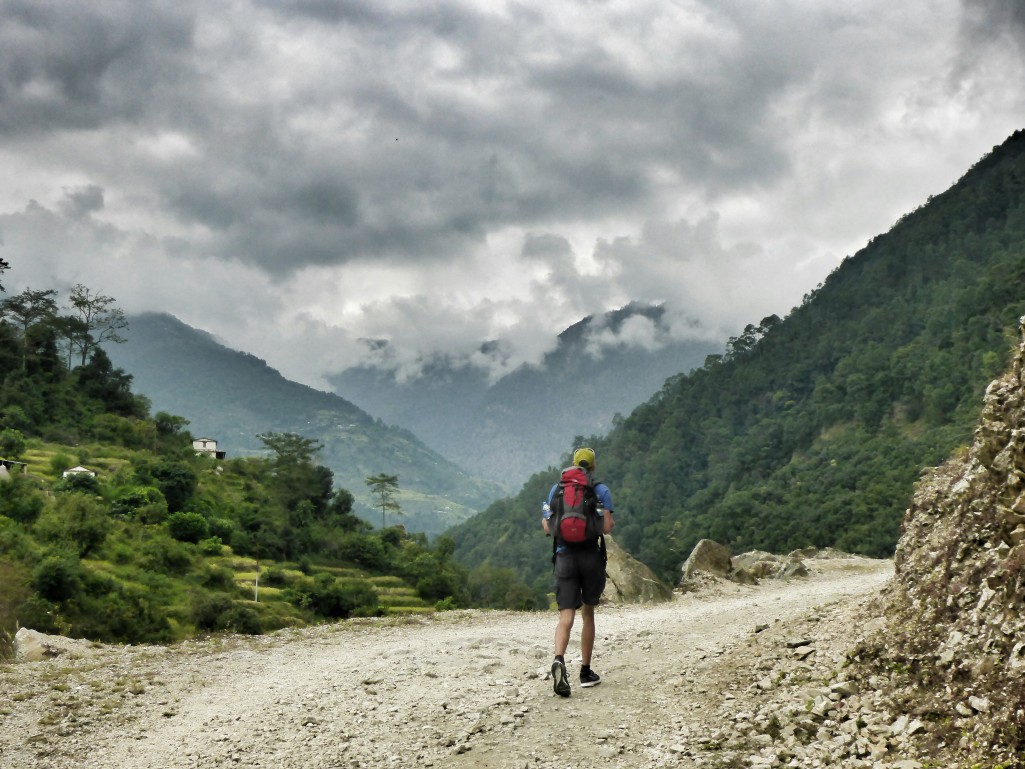
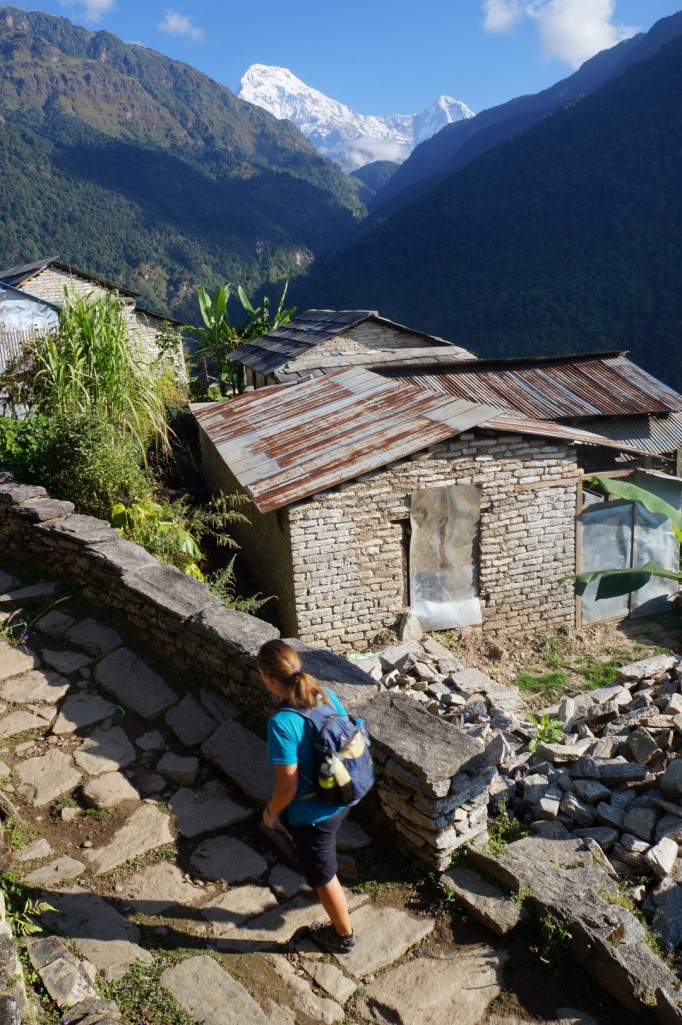
This doesn’t stop people packing the kitchen sink though and we pass many groups with an army of porters labouring away under the load of several backpacks, dry bags and holdalls strapped together and slung from a strap around their heads. Despite the unbelievable burden they are almost always 100m ahead of their clients and skip up the steep climbs in battered trainers, not a single Vibram sprung Gore Tex lined walking boot between them.
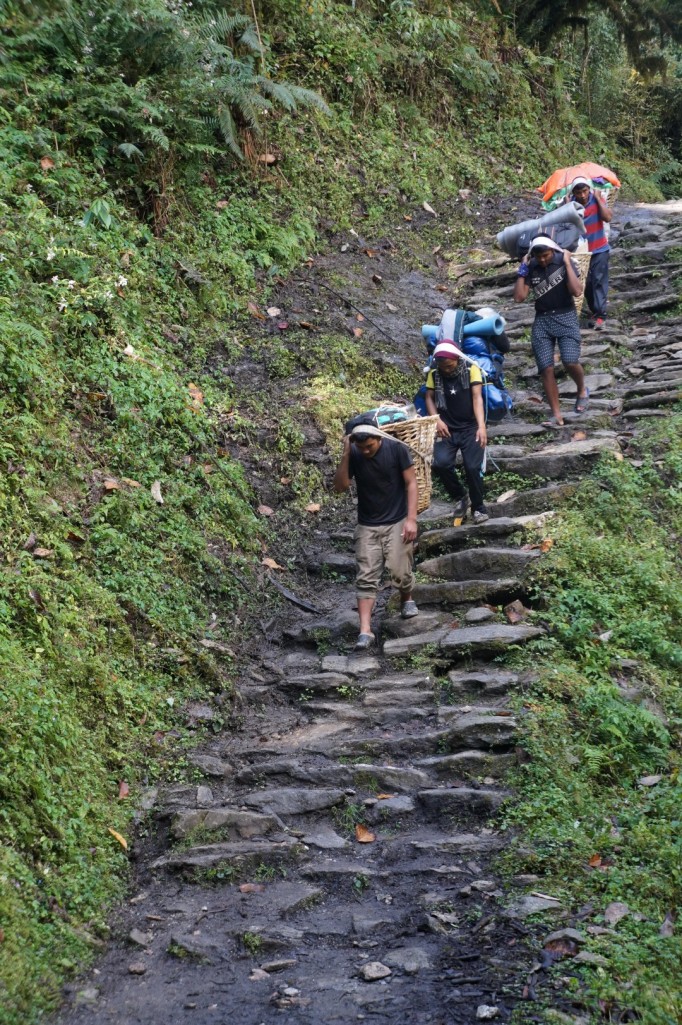
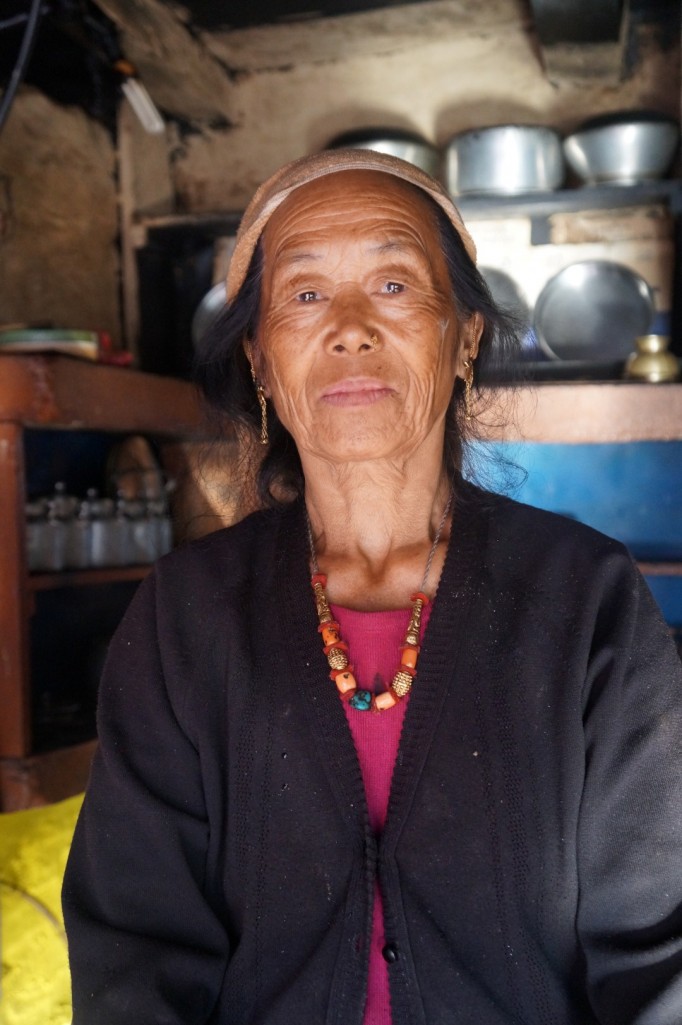
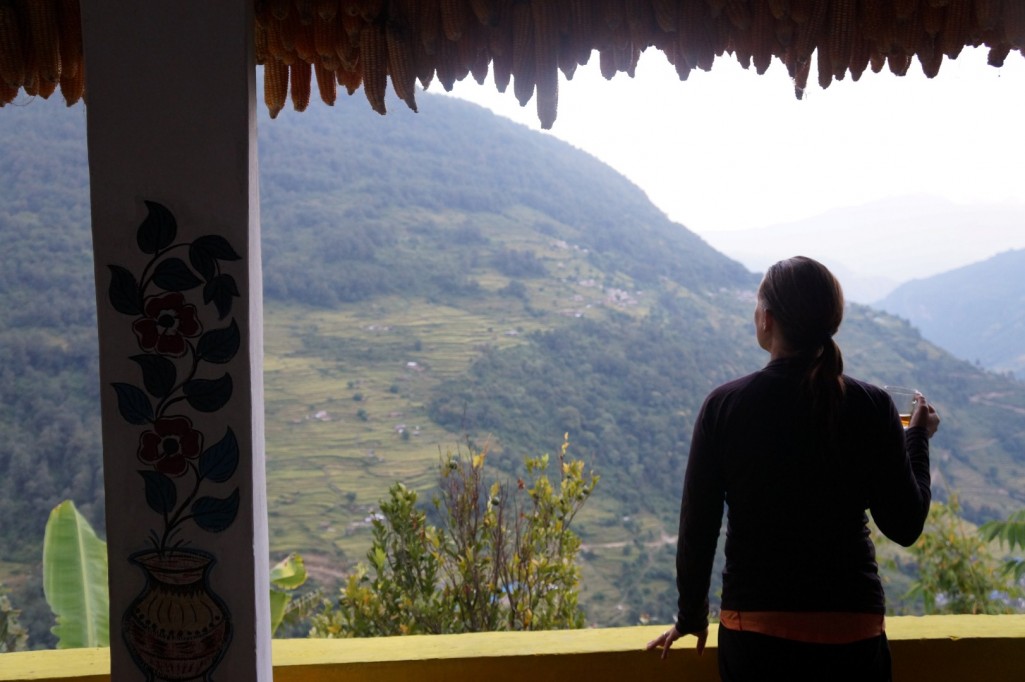
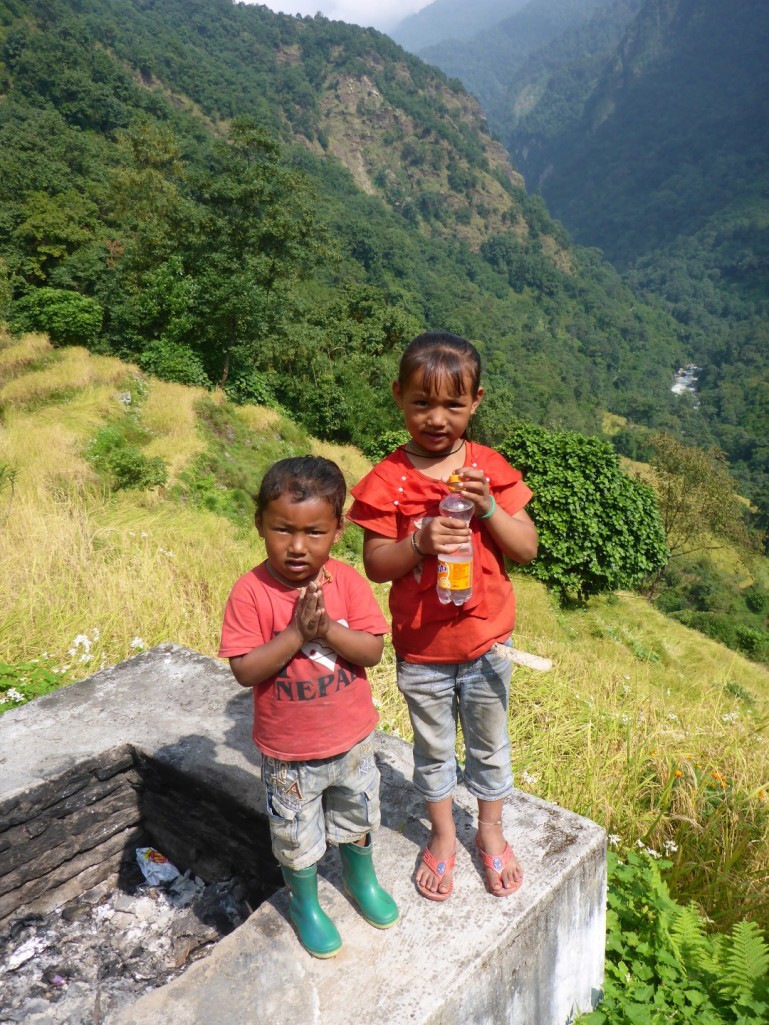
The highlight of the walk is the climb up Poon Hill at the dawn of the third day. Leaving Ghorepani at 4:30am we wind up the narrow path by torchlight, reminding me of night running exploits in Leigh Woods. At the top a crowd gathers to watch the sun slowly reveal the huge Annapurna range in a magnificent 270 degree amphitheatre of mountains. Our ‘hill’ top viewing platform is 3200m high, a mountain by most standards, but the frosted peaks towering in front of us are over 8000m reducing it to an insignificant lump.
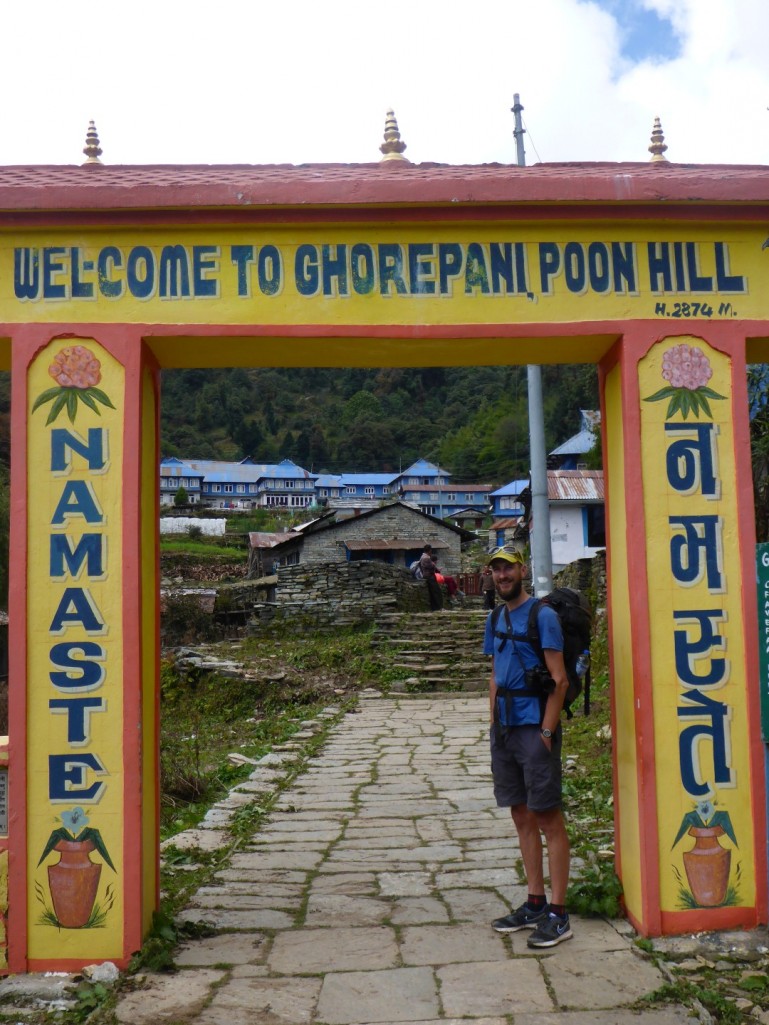
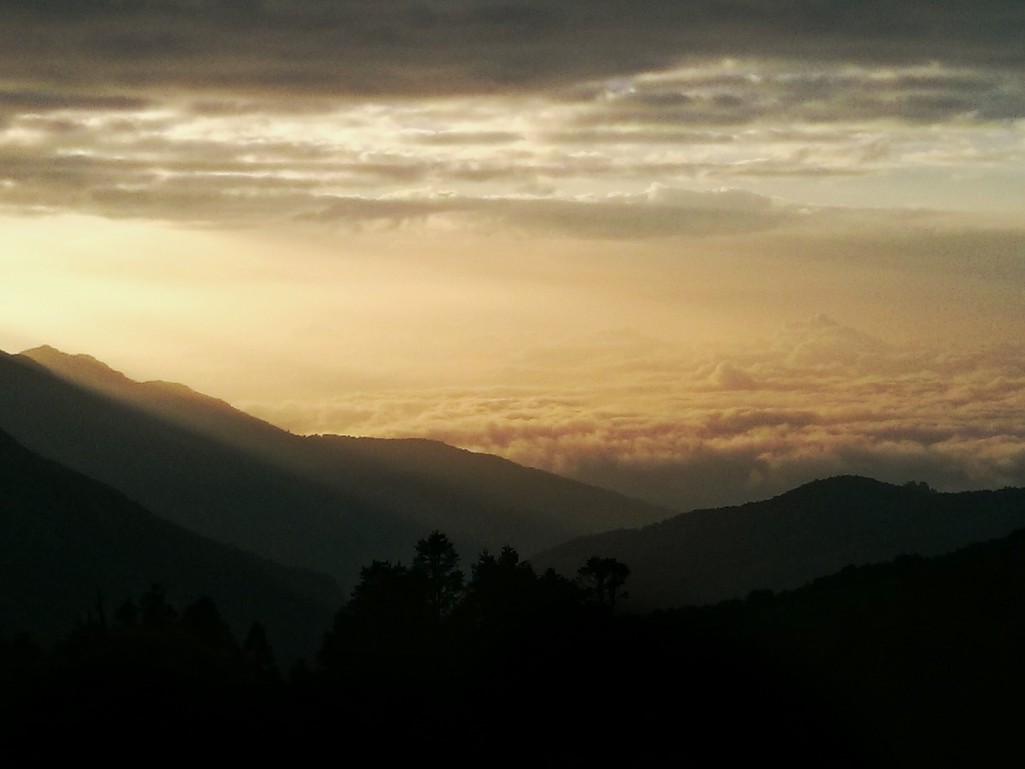
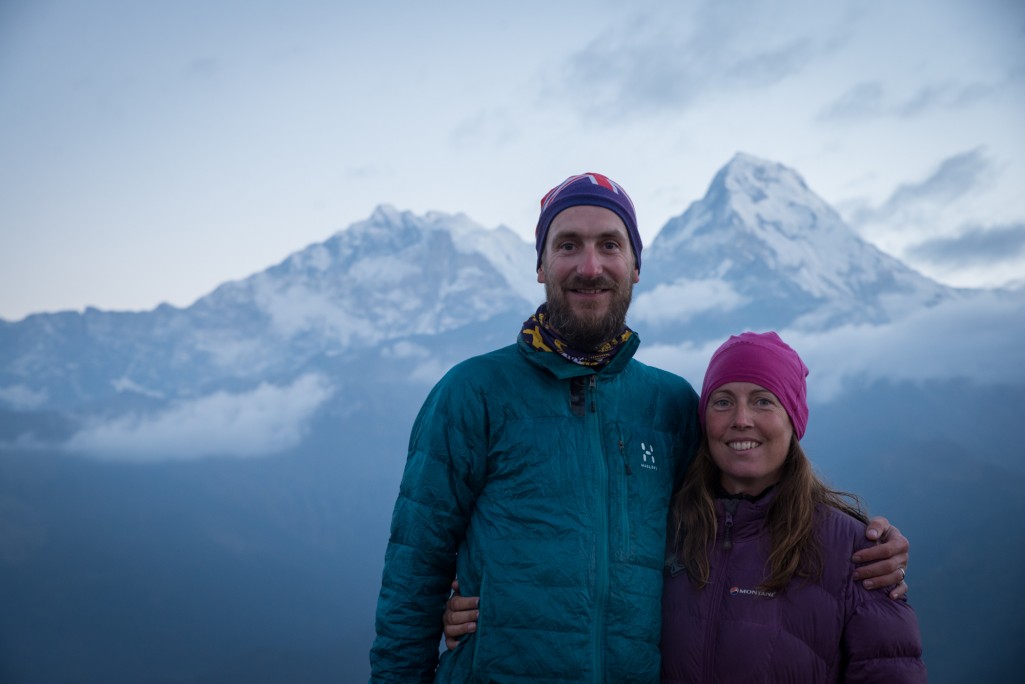
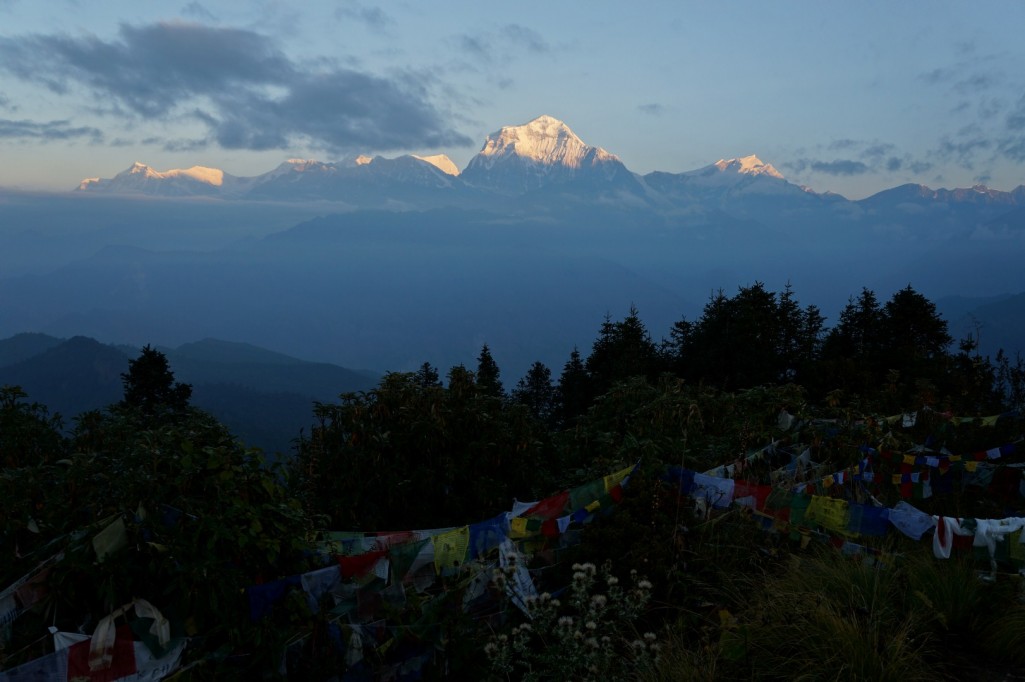

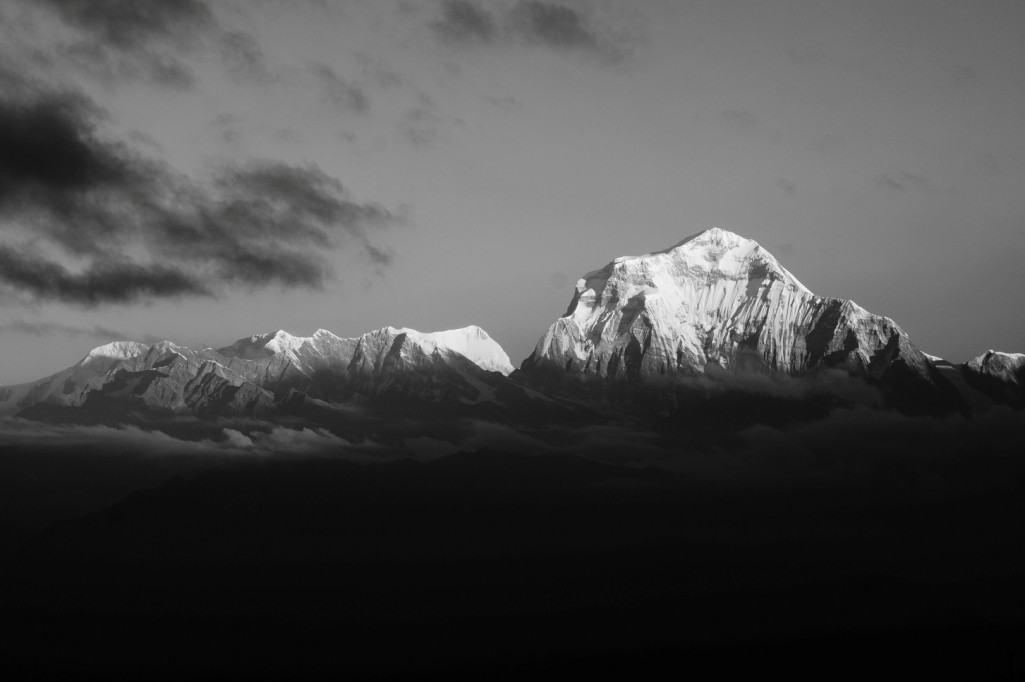
As well as providing a route for trekkers, the paths are the only links in and out of most of the small villages clustered on the hillside. There are no roads so everything that the people on the mountains need has to be carried in and out by horse or porter.
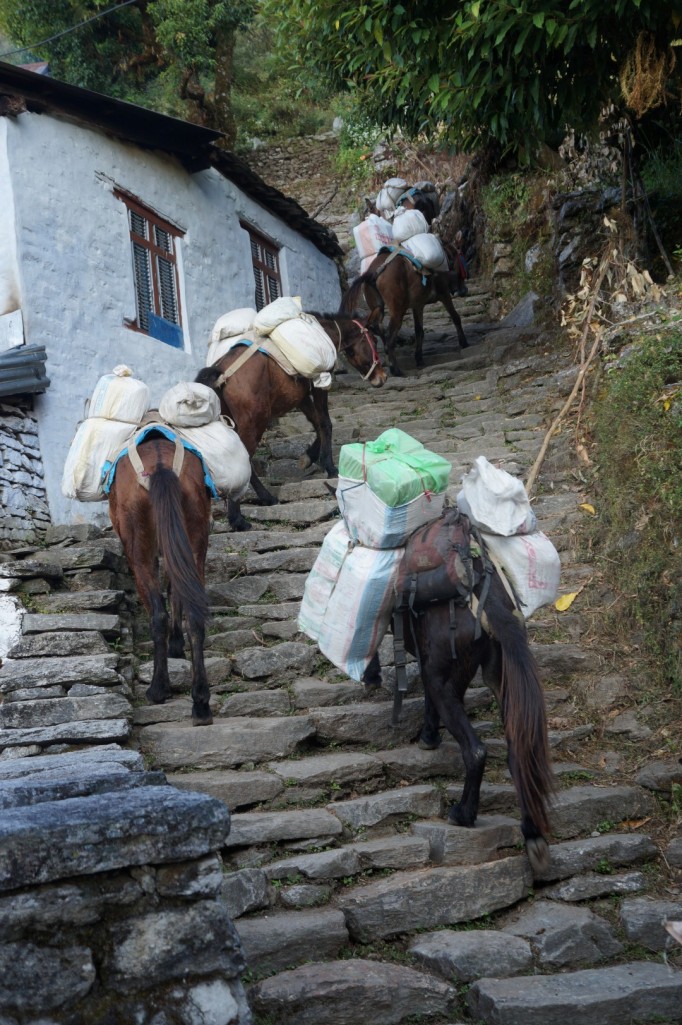

Just constructing the paths themselves must have been a mighty task with hundreds of metres of stone staircases laid into the steep hillside and threading their way through beautiful orange and yellow rhododendron forests. Climbing up was slow but steady, cycling muscles seem to be well adapted to going up steps. Coming down is more of a challenge as it wakes up muscles that have been mostly dormant for the last year or so. Kirsty gets an involuntary shaky leg action that Elvis would be proud of.

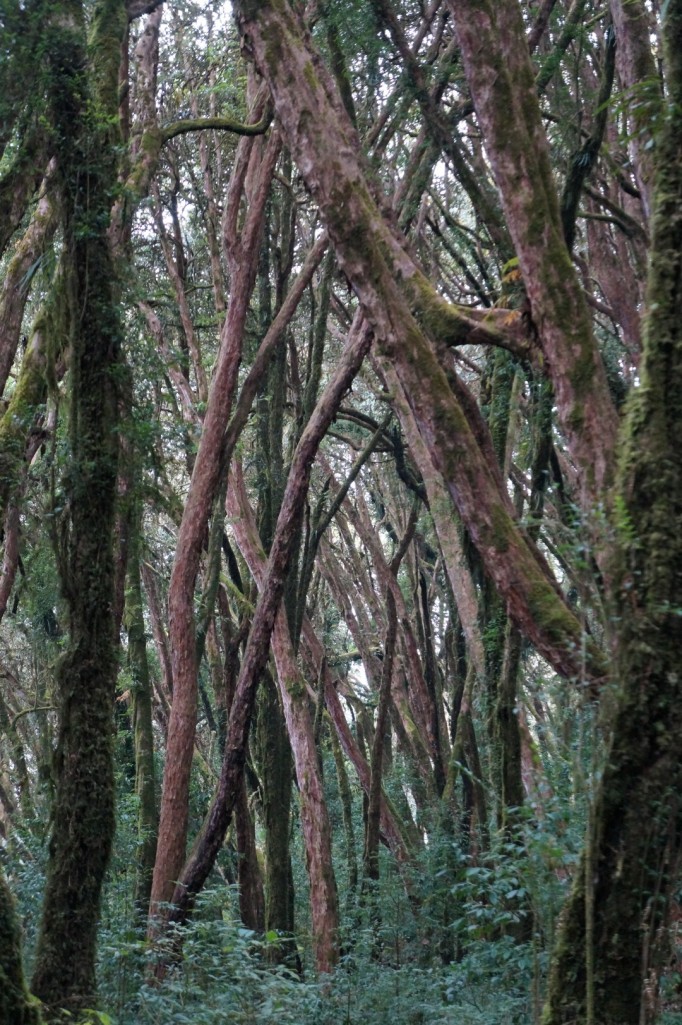
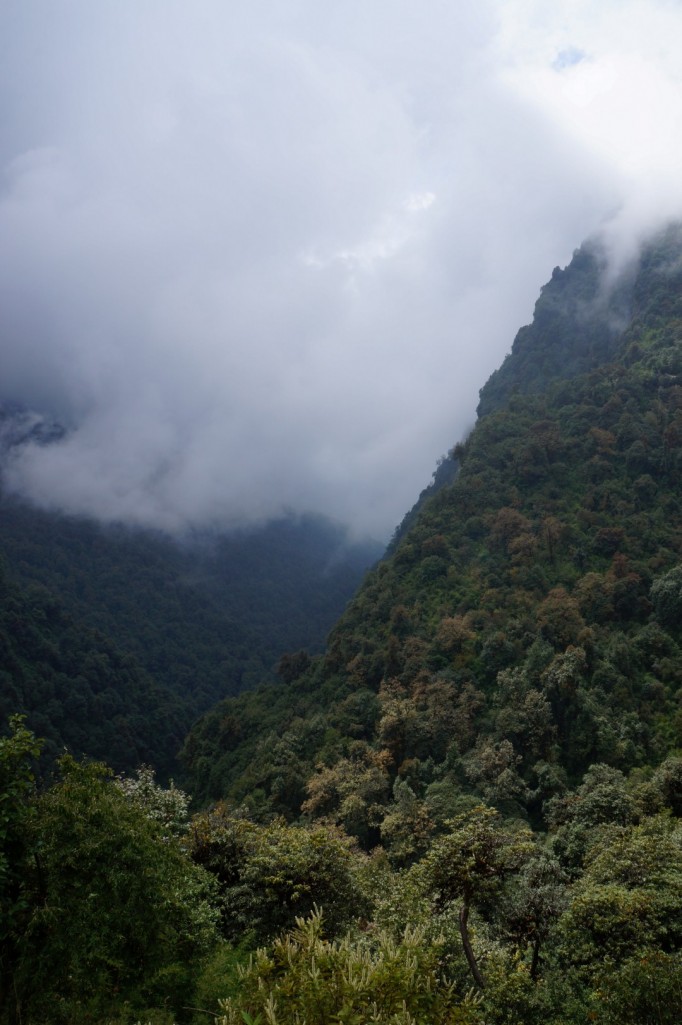
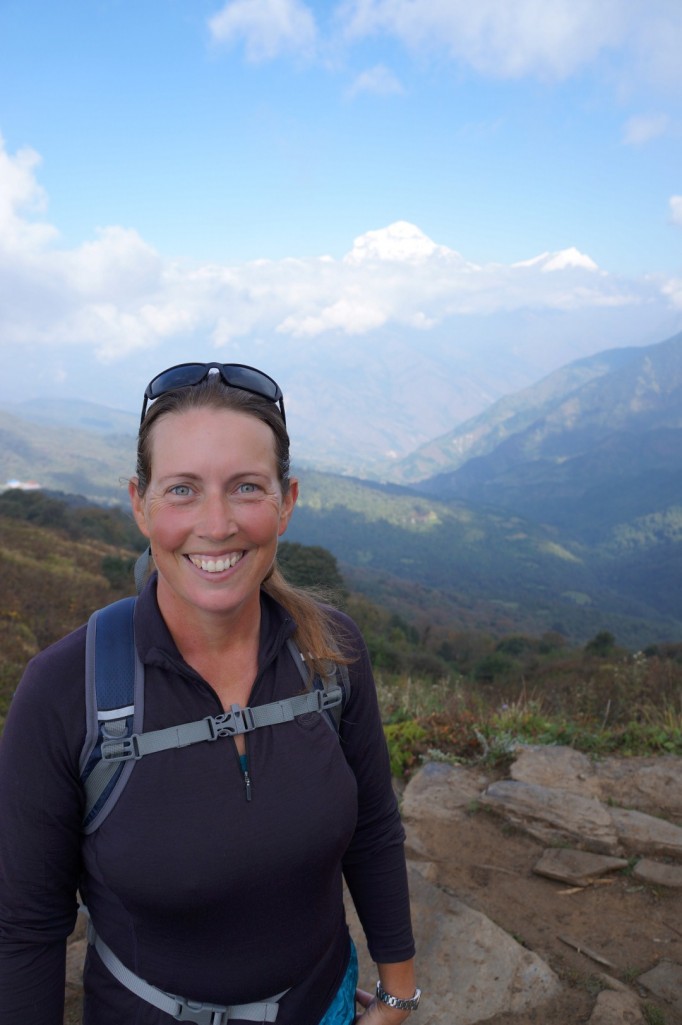

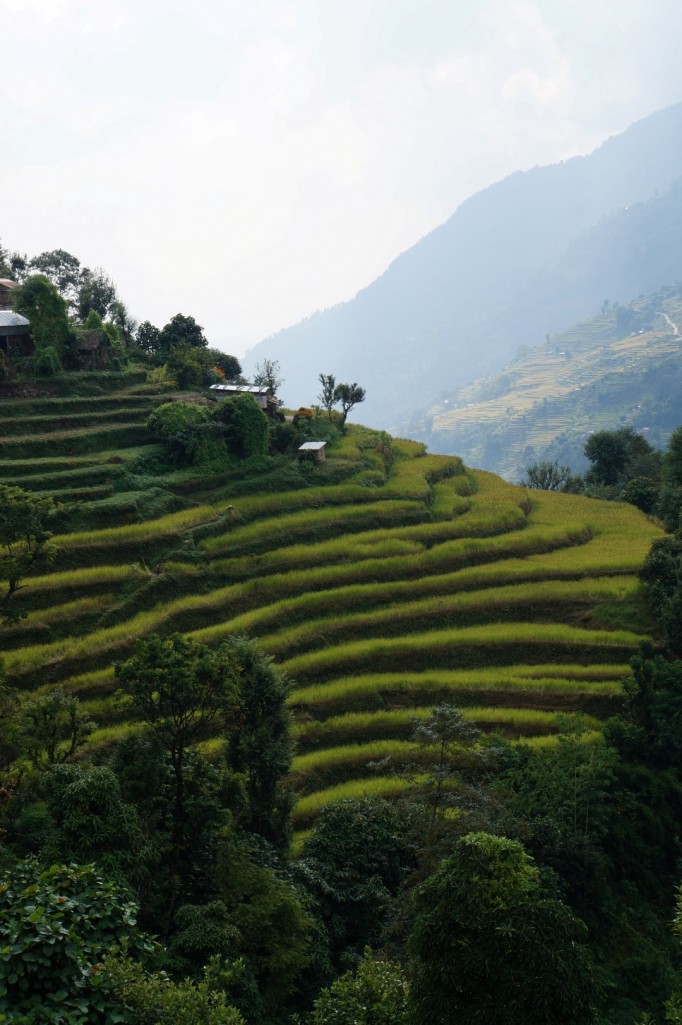
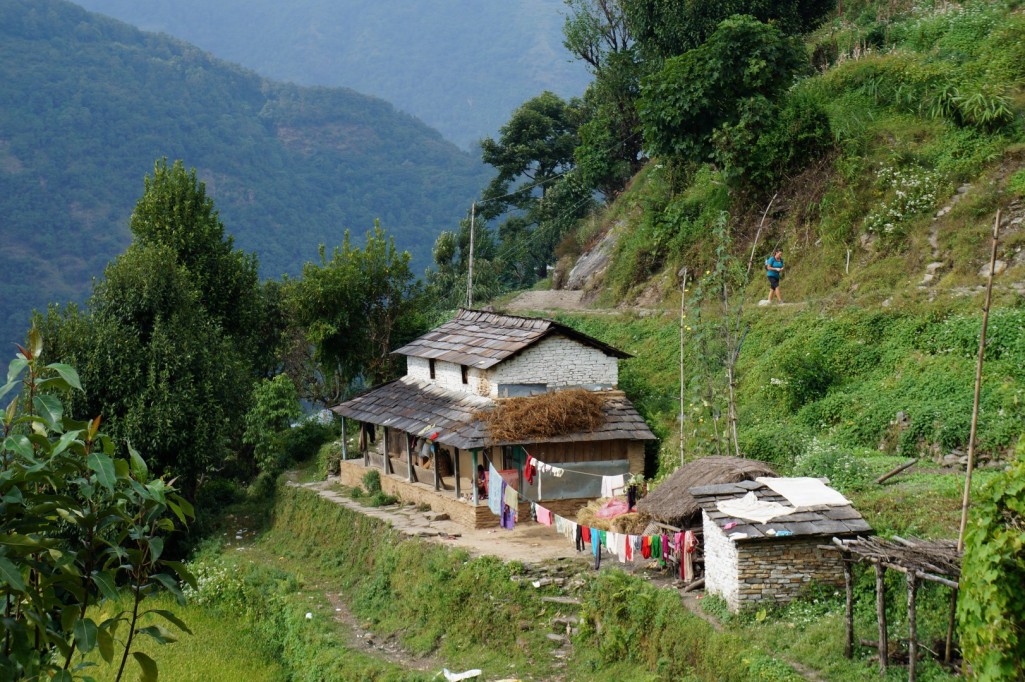
Other than a new set of aching muscles, the trek made a refreshing change from pedalling, almost feeling like a mini holiday within our maxi-holiday. The simplicity of carrying a few bits of kit on our backs and heading into the hills also gets my mind racing on ideas for foot-bound adventures, something I’d written off in the past as being too slow but now I can see the appeal.
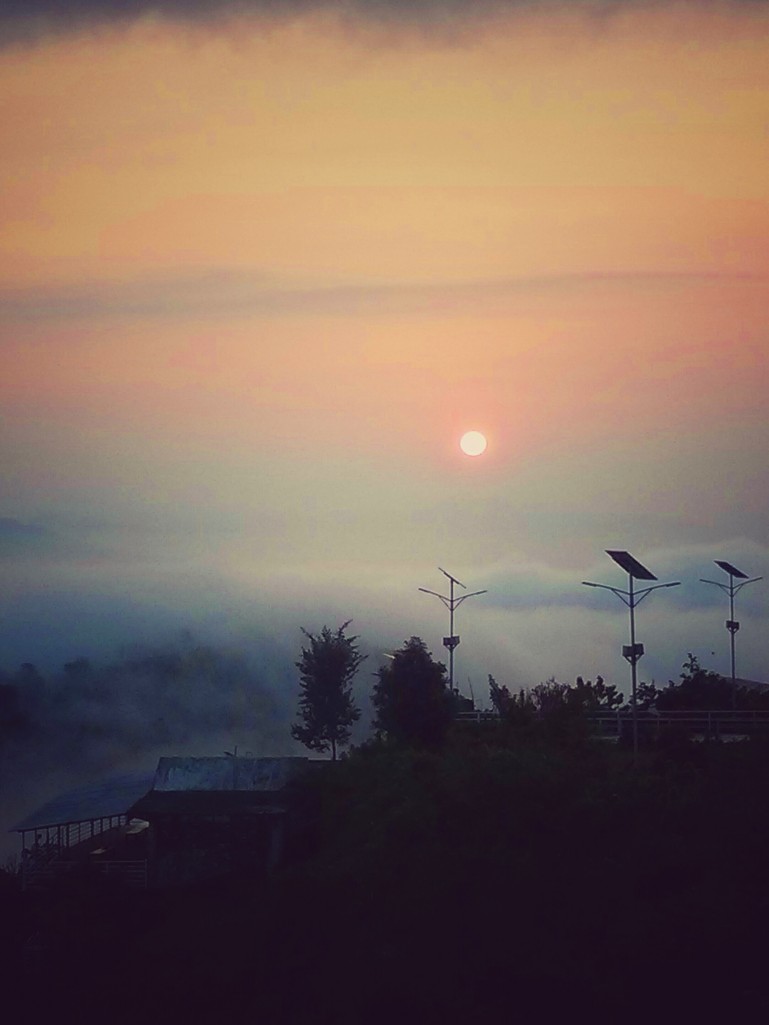
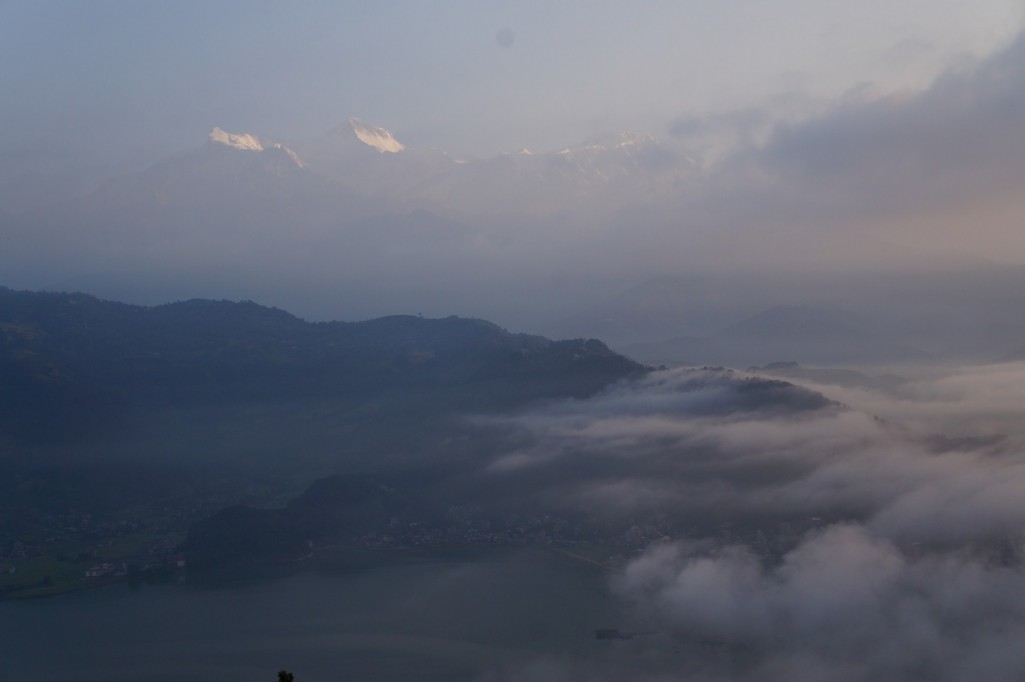
The biggest festival in the busy Nepali calendar is Dashain and it’s been slowly building up over the days that we were in Kathmandu but reaches its climax once we get back to Pokhara after the trek. Everywhere there are children flying kites, playing on huge bamboo ‘Pin’ swings and families enjoying a stroll round the lake with foreheads caked in red paint and rice. This is their equivalent of Christmas Day.
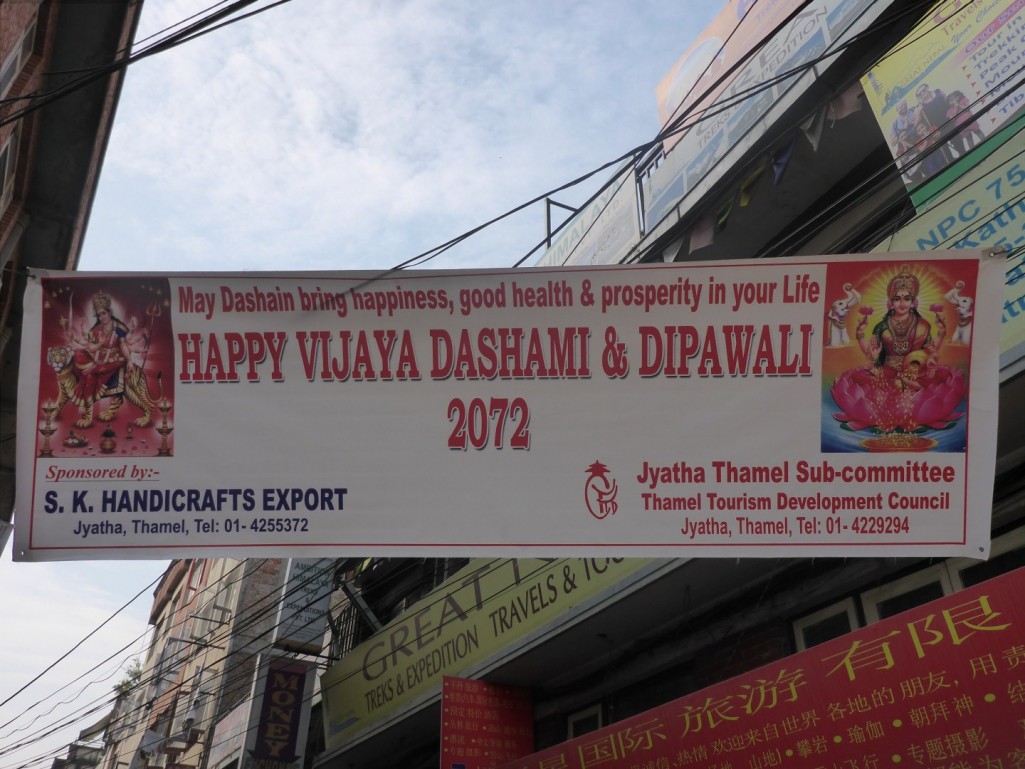
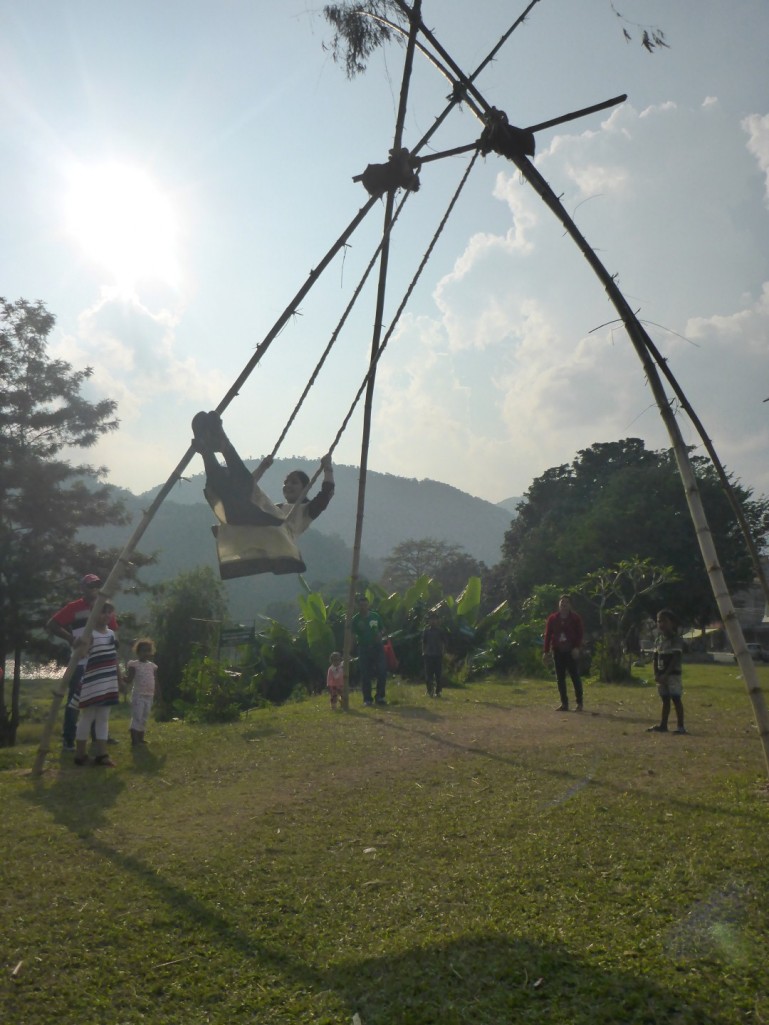
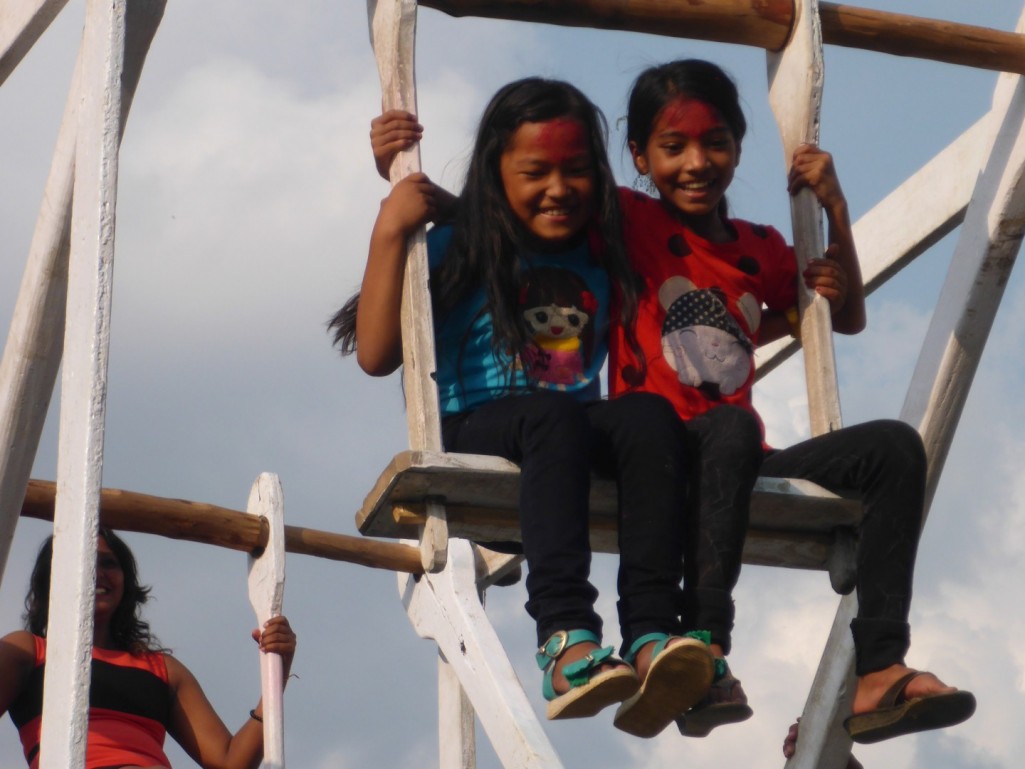
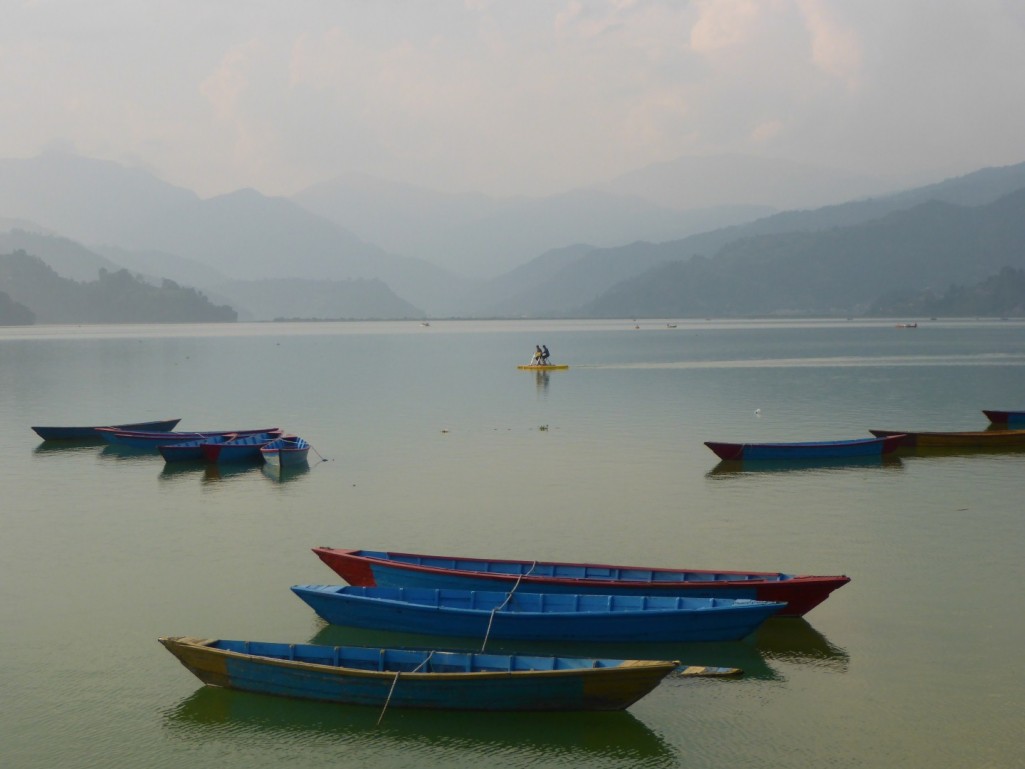
Another important ritual for Dashain is the sacrifice of animals and we’d seen herds of goats being traded on the road side then going home on the roofs of buses to meet an unfortunate end.
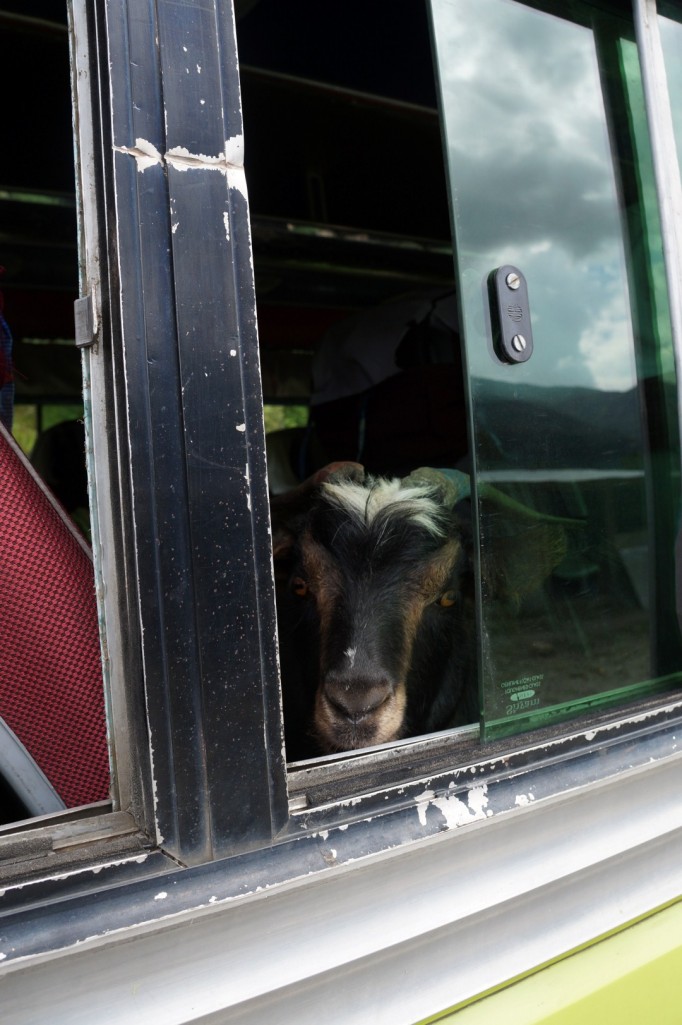
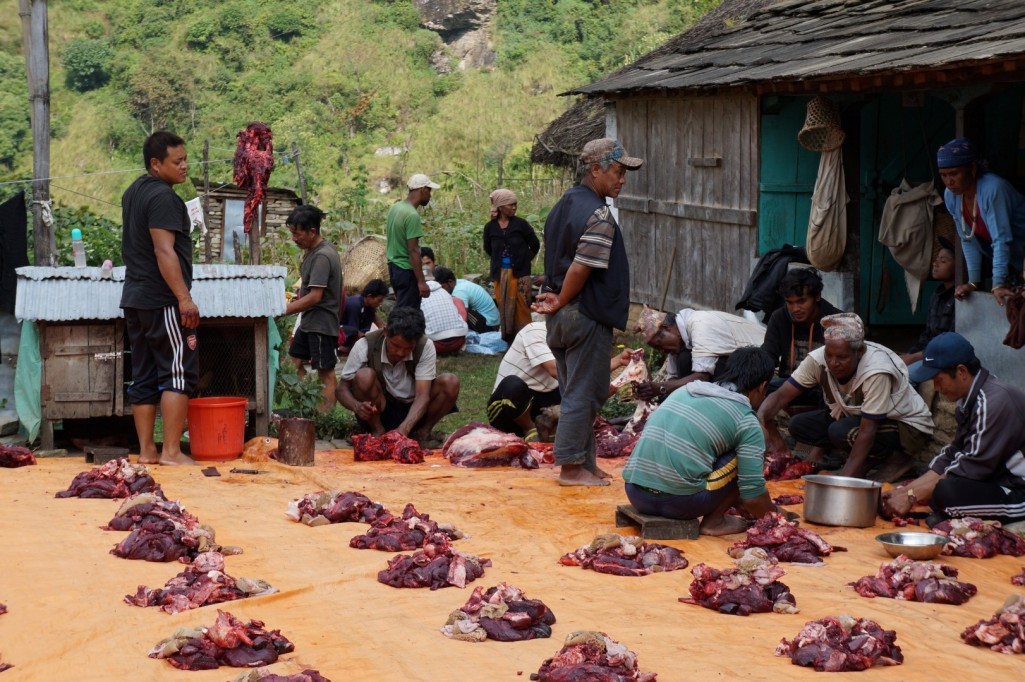
By the time we get back to Kathmandu it’s been nearly four weeks since the parcels were sent. We’ve come to the end of our Nepalese visas but it’s an easy process to get another 15 days added for an additional $30 each at the immigration office. It’s possible to stay for a total of 5 months if we want, though of course we hope that we won’t need to make full use of this option.
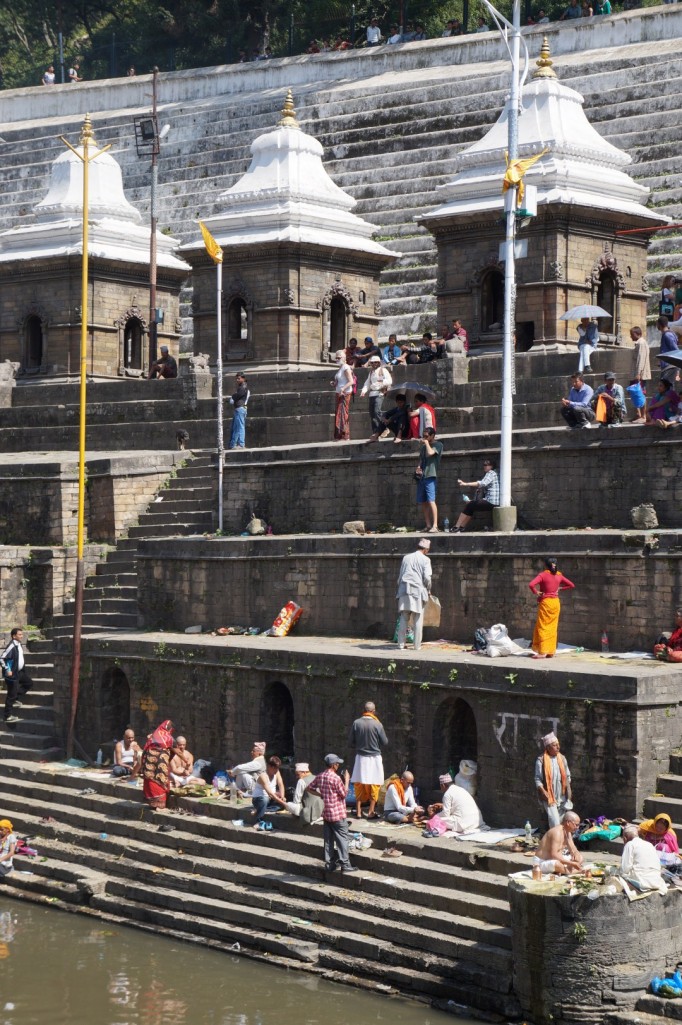
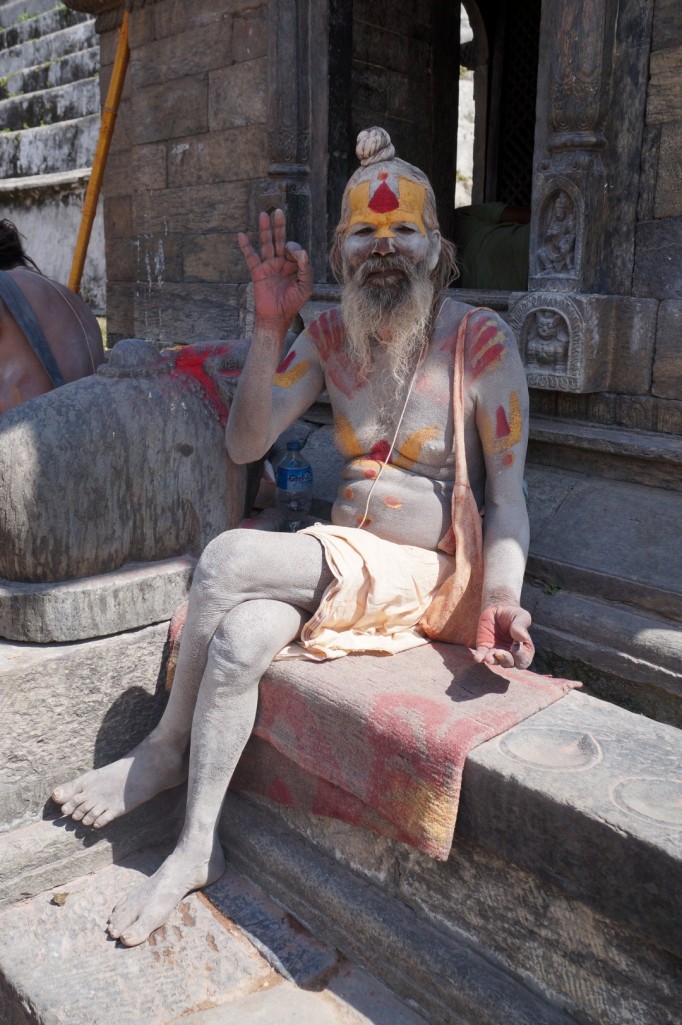
We pay a visit to the General Post Office to try and get an update on where the parcels could possibly be. Any confidence that we’d ever see our precious goods is quickly diminished as we’re sent from room 21 to room 33 to room 32 to room 31 and finally to window 5. The wild goose chase takes us through desolate rooms stacked with dusty sacks of mail and battered pigeon holes. No-one seems to have a clue when our parcels are likely to arrive and if they do where we should collect them from. For all we know it’s at the bottom of one of the mountains of packages that we’d seen but for now we have to leave empty-handed.
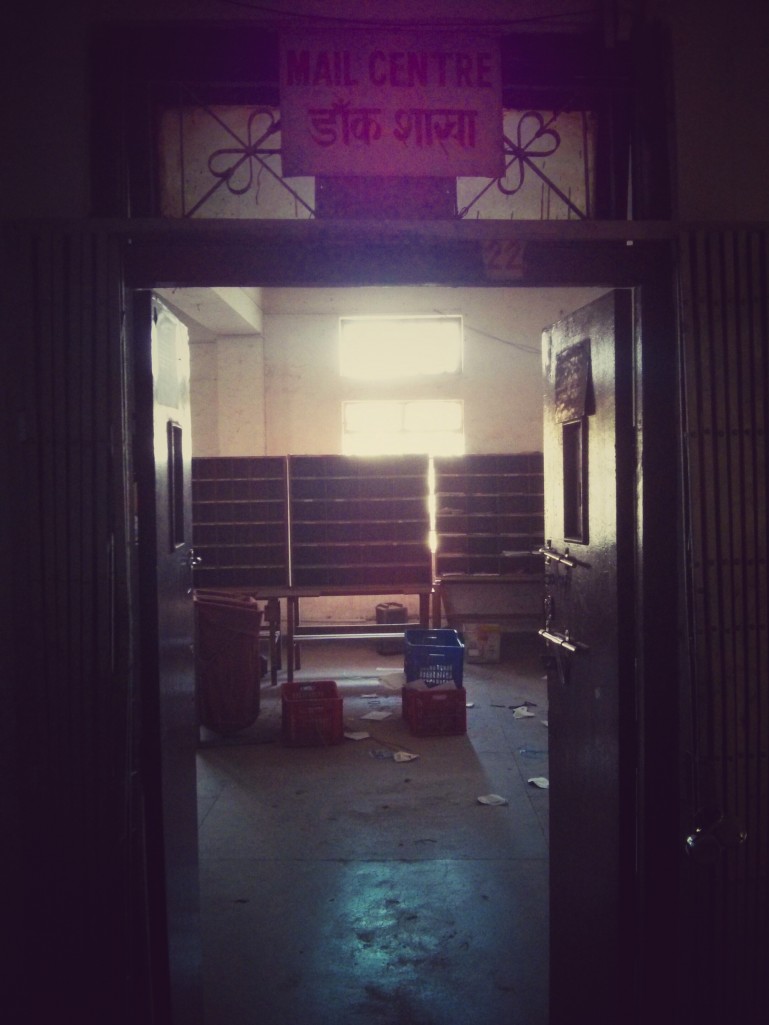

Kathmandu is a great city if you need outdoors kit so we take the opportunity to replace, repair and upgrade where we need to. I find a machine shop that fabricates a new head for our click stand which had come to the end of its life having propped up the heavy tandem one too many times. It’s like a full reset making sure everything we have is back to full working order for the next leg of the journey.
My status on Trip Advisor improves thanks to the numerous reviews of our now extensive knowledge of restaurants in Kathmandu. We’re also making new friends with other guests at Elbrus Home Hostel where we’re staying including fellow British cycle tourists Frances, Graham and Sarah, and an interesting chat with Roeland from The Netherlands.
One evening we’re joined by Sebastian from Medevac, who’d I’d met at the Hash run, and his friends Celine and Sophie. Sebastian is thinking about cycling back to his home in Germany next year so is keen to glean advice and inspiration from us. In return we get to find out a bit more about how emergency relief operations work and also get an invite to a weekend of rafting and canyoning.
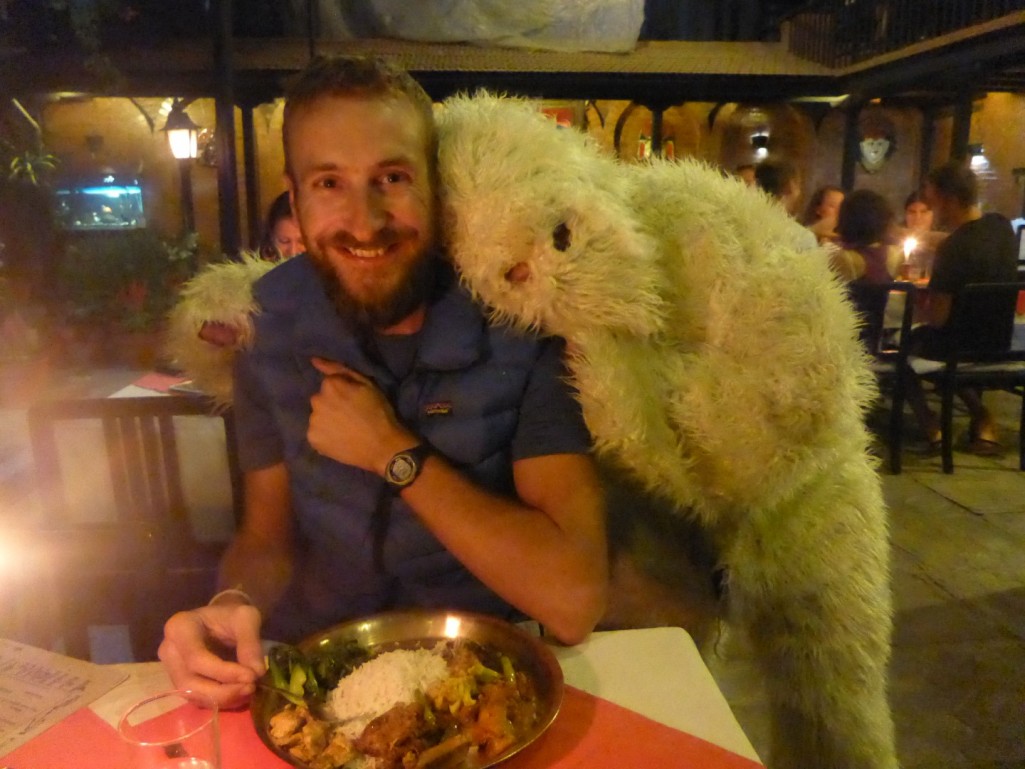
Then one rainy morning I head out for a run and decide to pop into the post office on the way, just in case there’s been a miraculous delivery. It seems miracles can happen as when I find a lady sitting in front of a computer in the corner of an otherwise empty office she punches in my tracking number and tells me both parcels have landed that very morning. By 2 o’clock in the afternoon, having presented my passport and without any of the expected customs charges to pay, both boxes are under my arm and I head back to show Kirsty. It’s like Christmas, only it’s actually Dashain.
The most valuable item is a new front dynamo hub, replaced very efficiently by Schmidt under warranty. I hand over the front wheel to Sonam of Dawn to Dusk bike shop to have it rebuilt. Sonam is largely responsible for pioneering mountain biking in Nepal and came highly recommended by our friend Chrissie who was taken under his wing while she lived in Kathamandu.
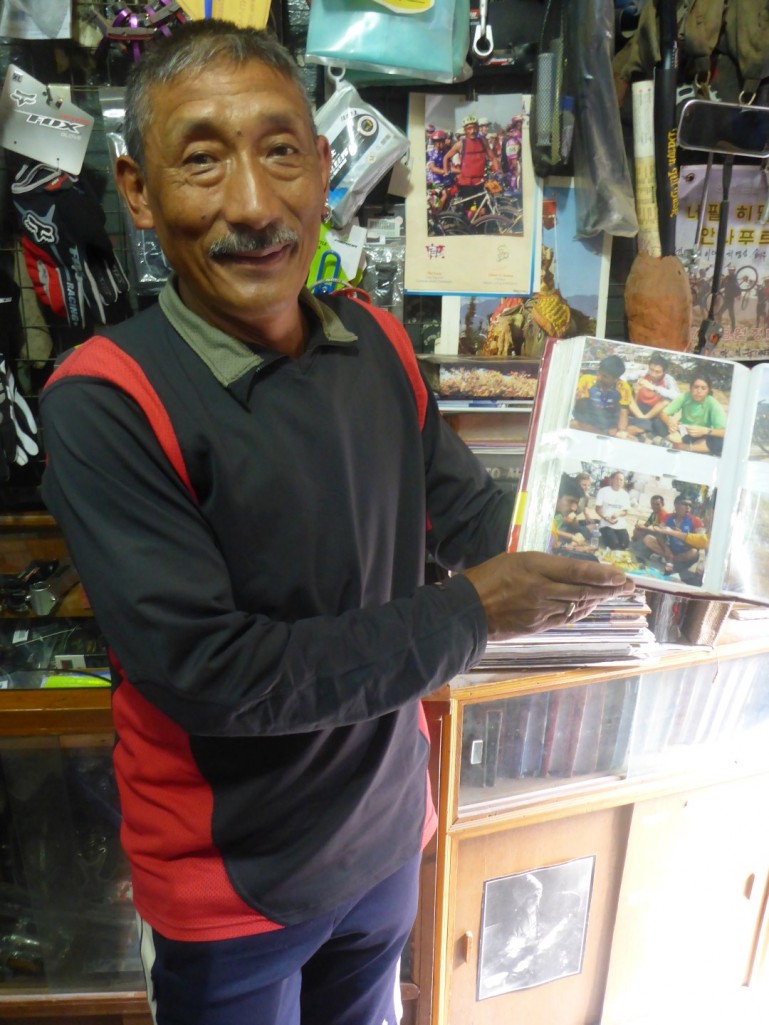
So suddenly we had everything we needed: Visas, bike parts, kit, and just as we felt like permanent residents of Kathmandu! But having agreed to the weekend of activities with Sebastian we had to stay for a couple more days. As Kirsty keeps telling me, we shouldn’t rush.
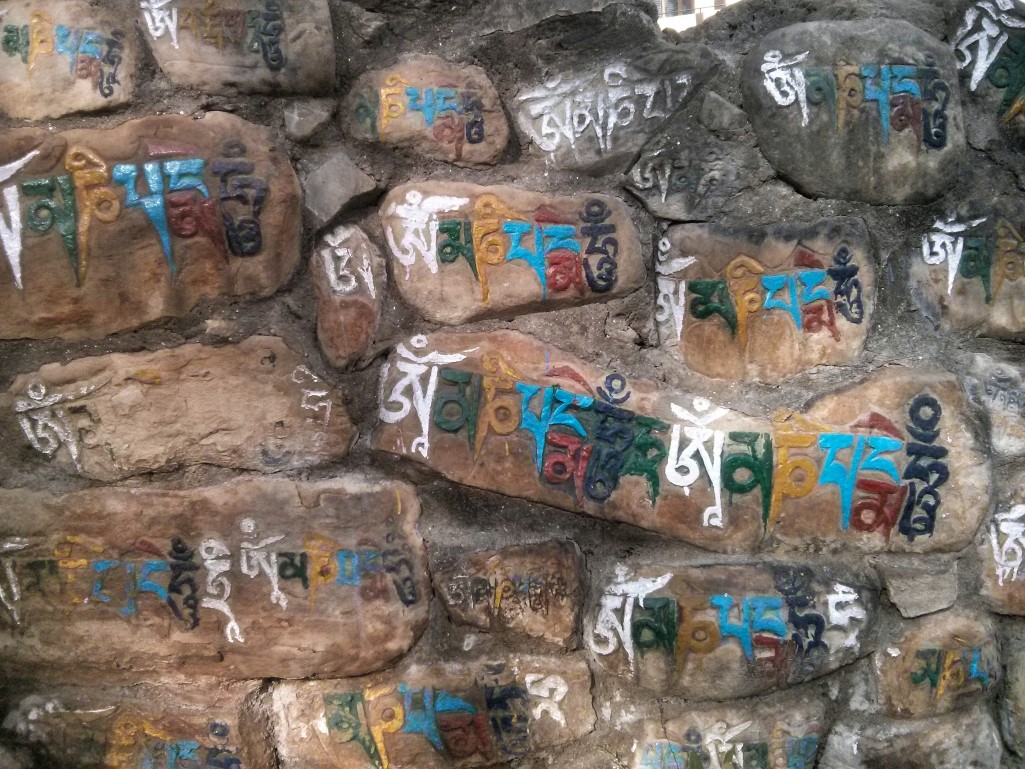
The weekend includes abseiling down waterfalls, sliding down streams and jumping off cliffs, all great fun. The rafting is also a step up from my previous experience of white water which extended to the Grand Canyon Rapids ride at Alton Towers. The adrenaline keeps flowing on the ride home too as we take to the roof of the bus as all the seats are taken down below. It’s not a usual sight to see westerners in the ‘cheap seats’ which amuses the locals as we speed past, singing songs from the roof top.
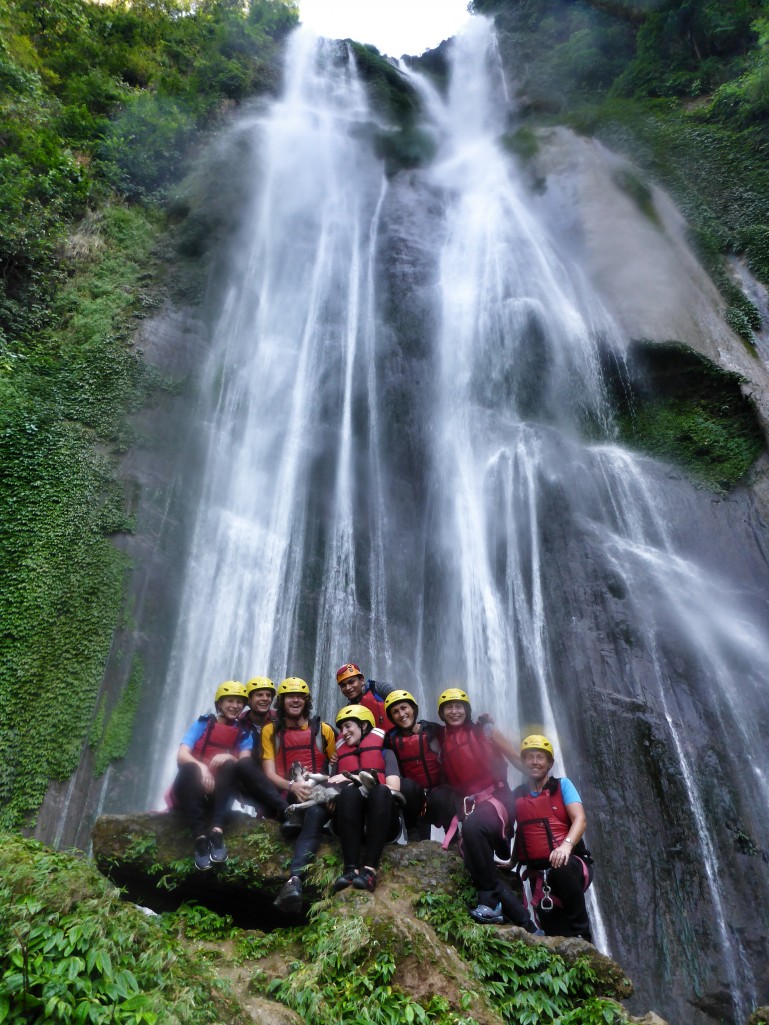
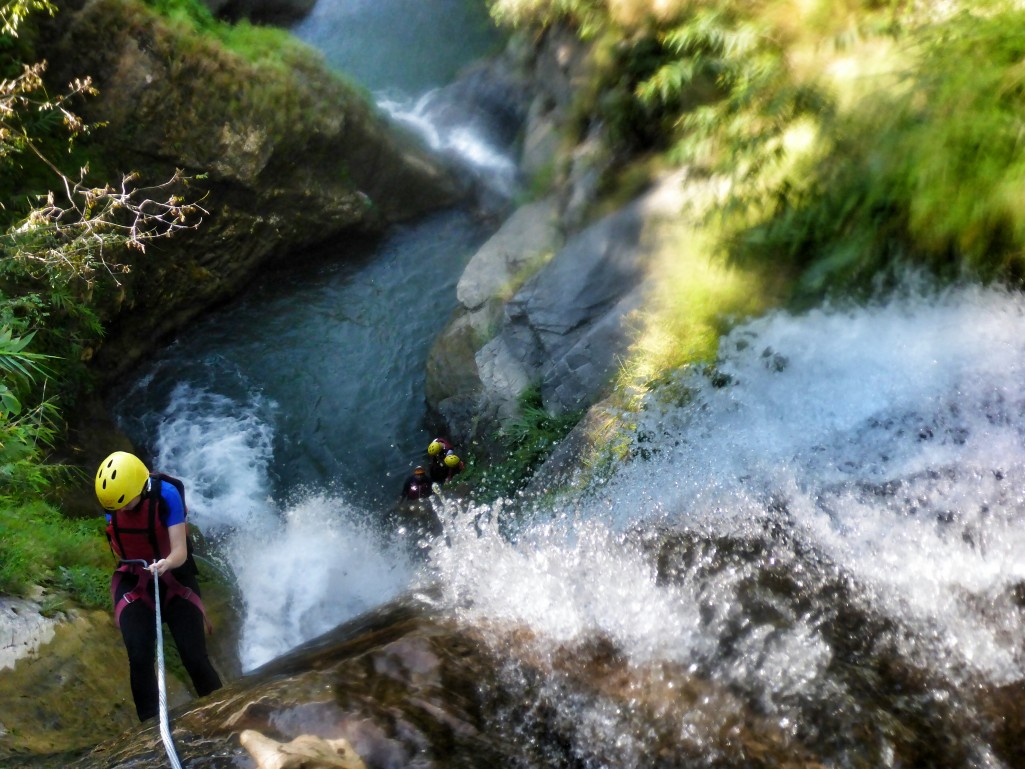
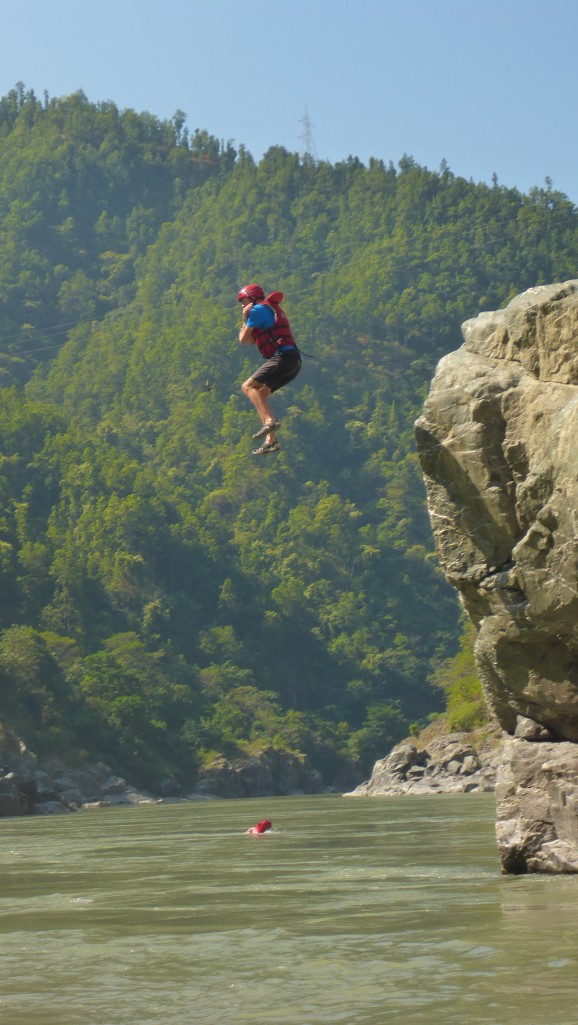

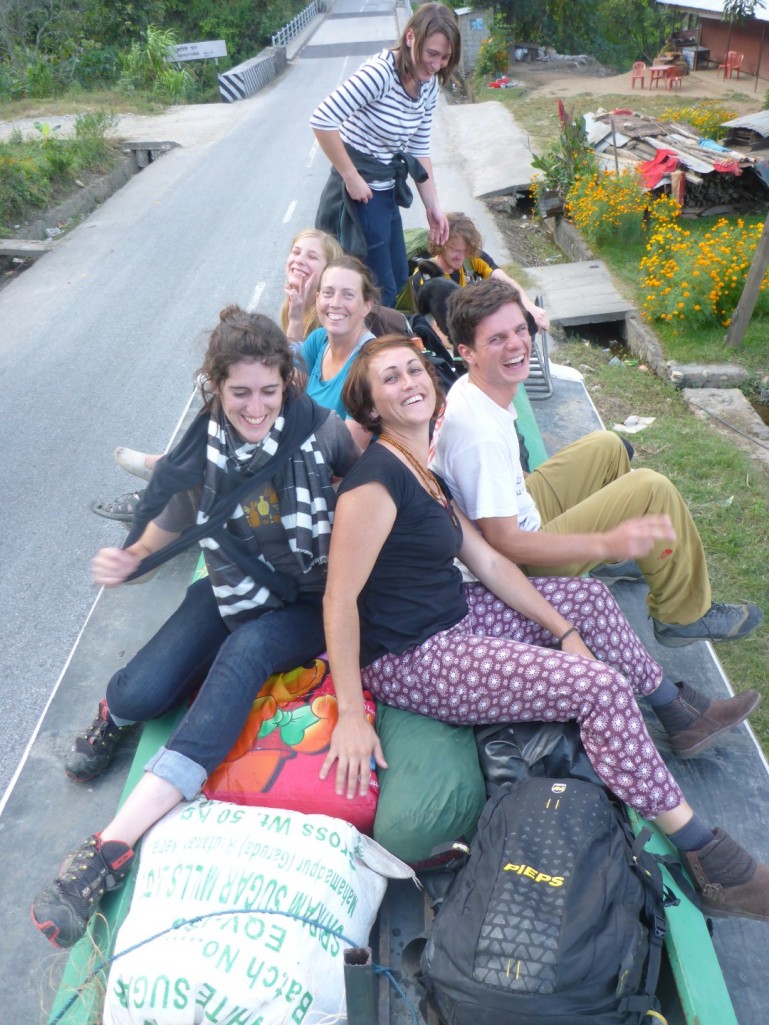
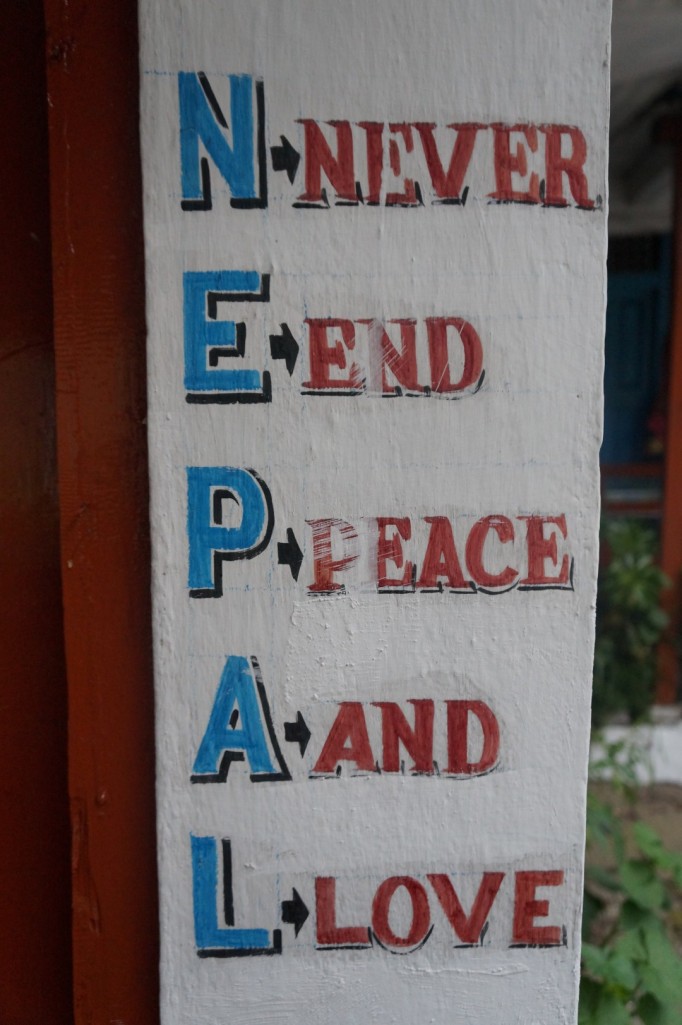
As has always been the case, these enforced stops are frustrating but give us time to do things that we would otherwise have missed. To have visited Nepal and not been on a trek for instance would have been regrettable and already we’re thinking about coming back to take on something a bit longer. With the benefit of hindsight we could have found another address that a courier would have been able to deliver to within a few days, saving us time and money. But at the time that the decision had to be made we opted for the simpler, standard mail service and in return we had a much more thorough experience of Kathmandu and Nepal which we can thank Royal Mail for. Now onwards, back to India.

